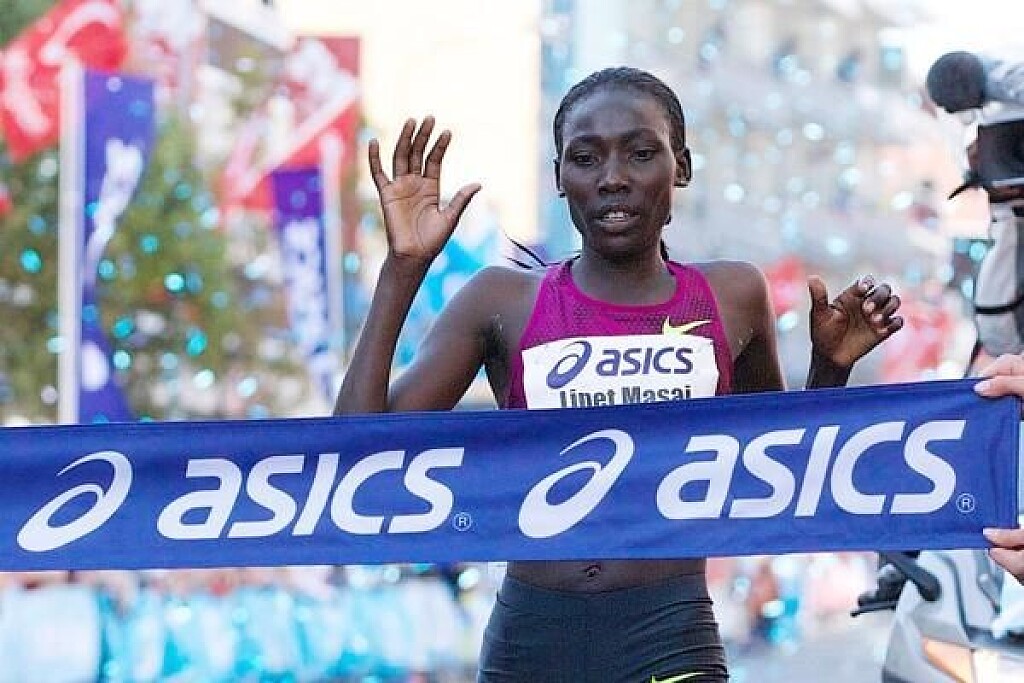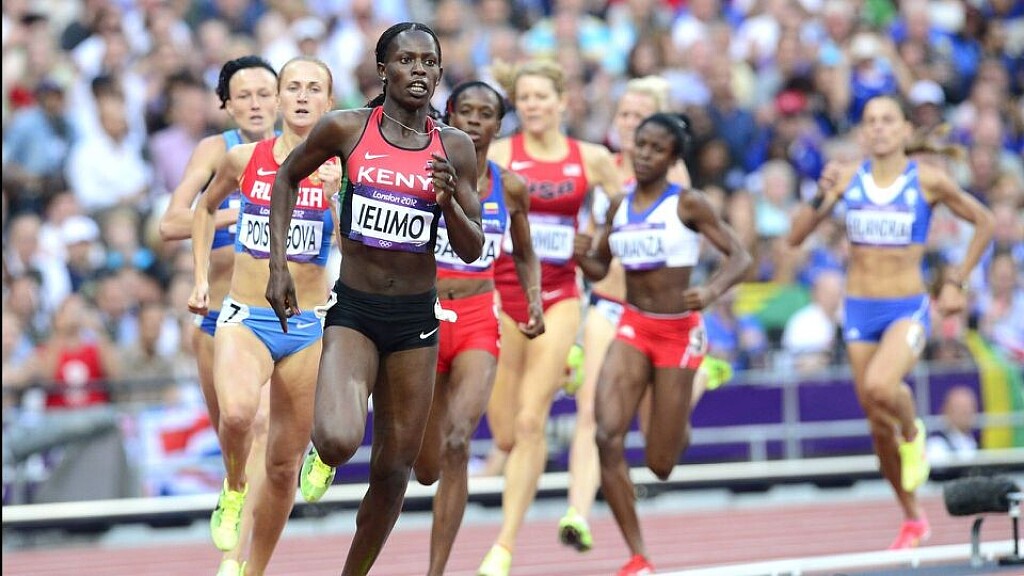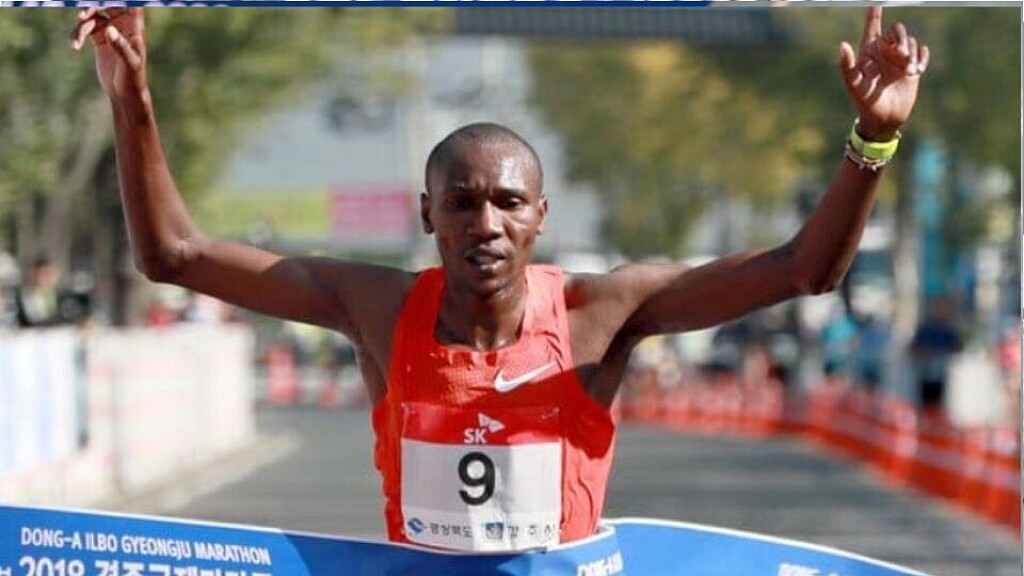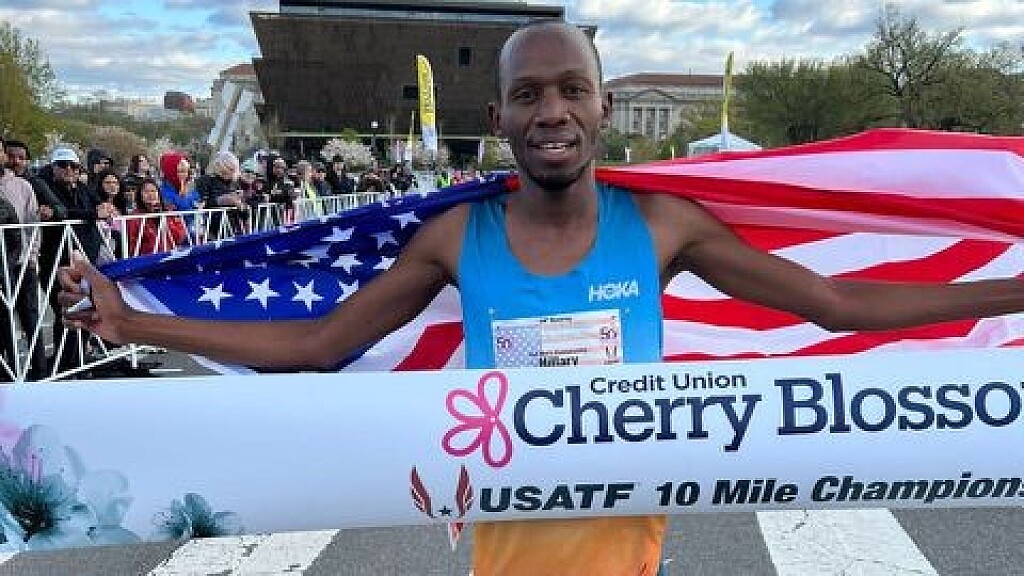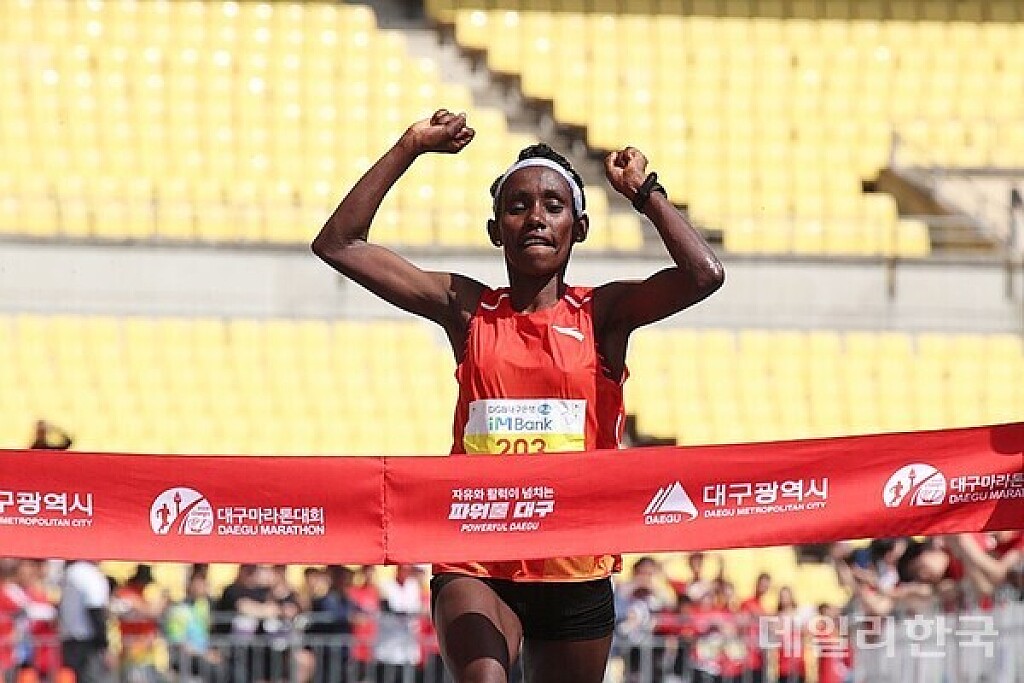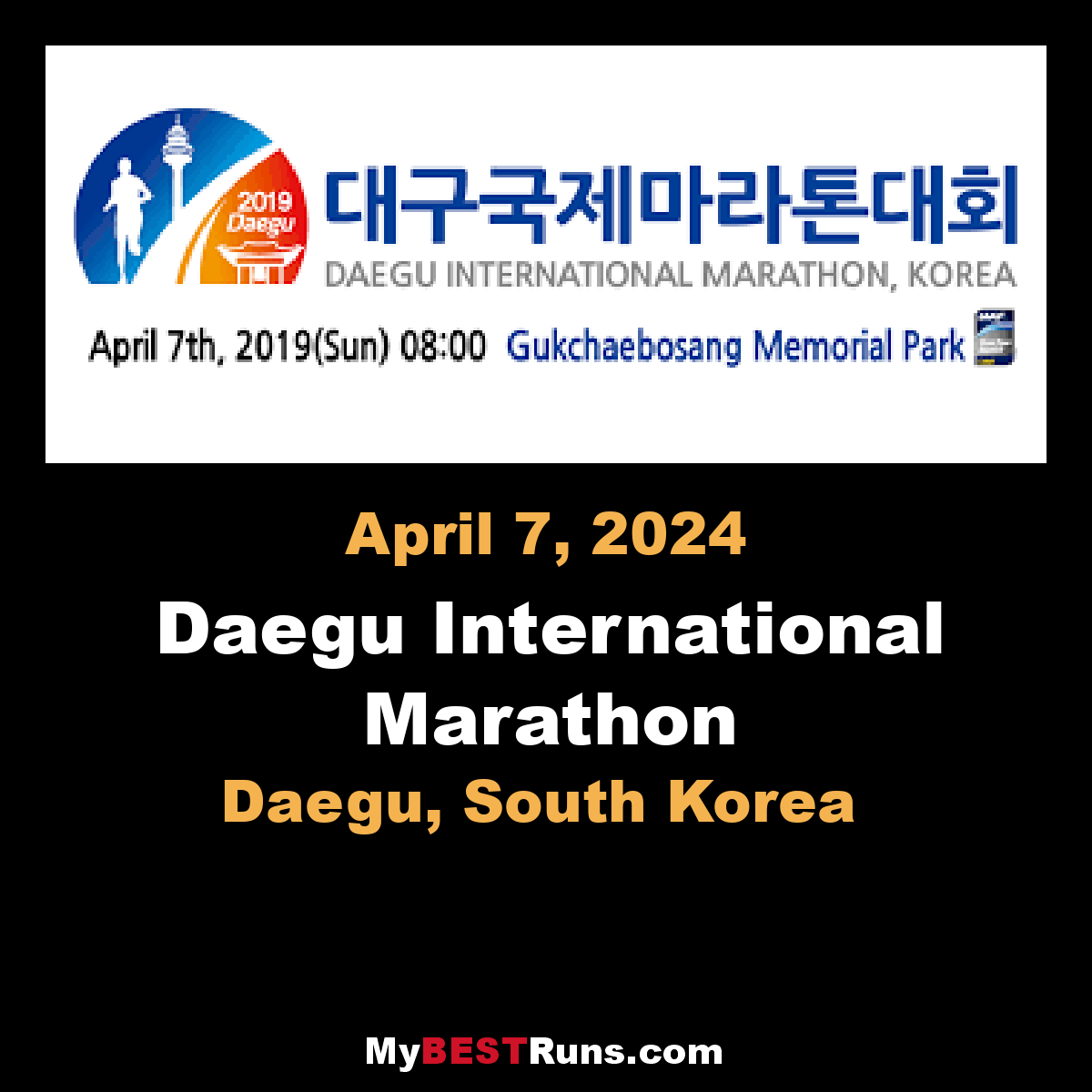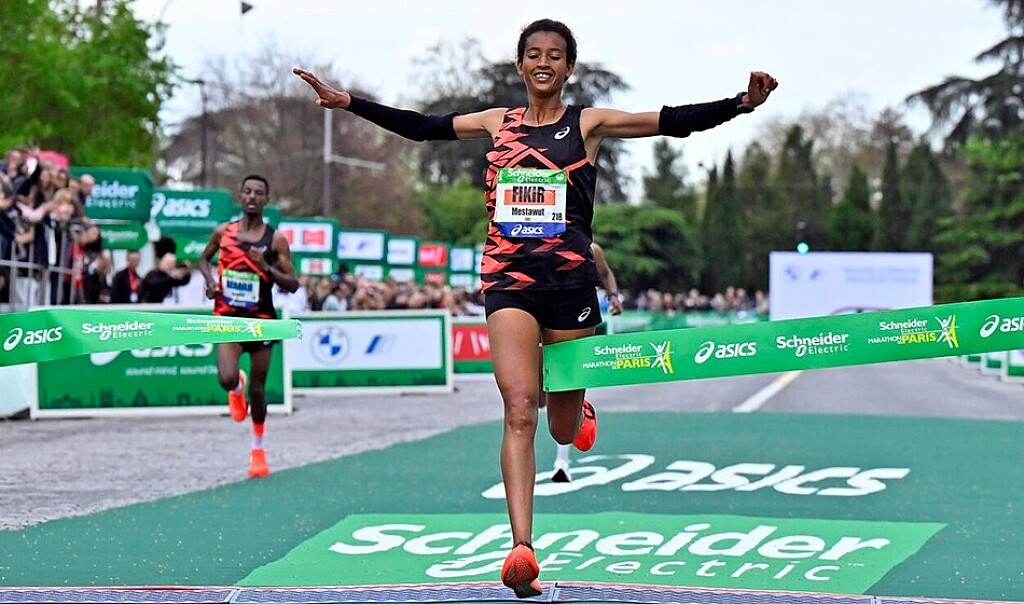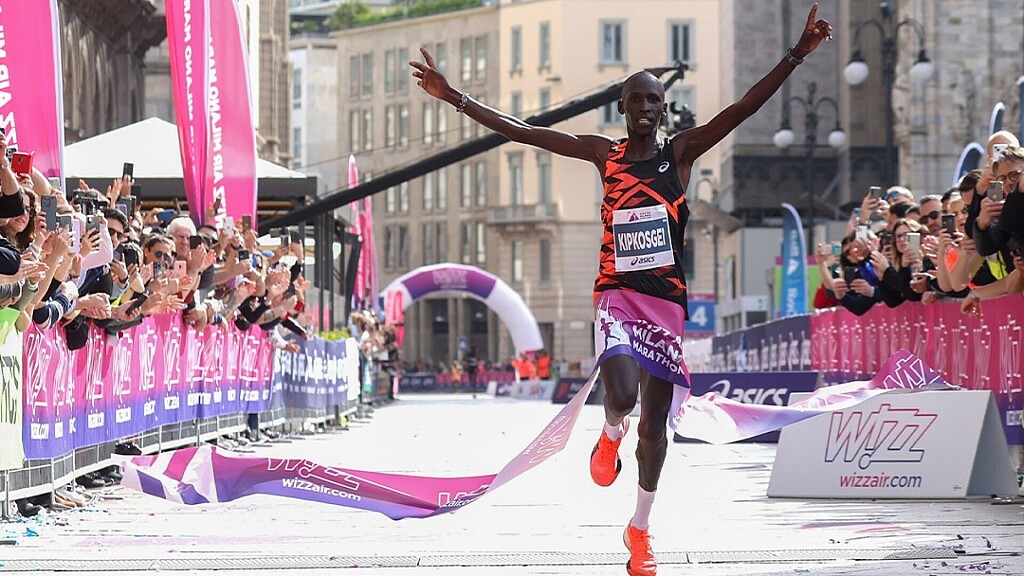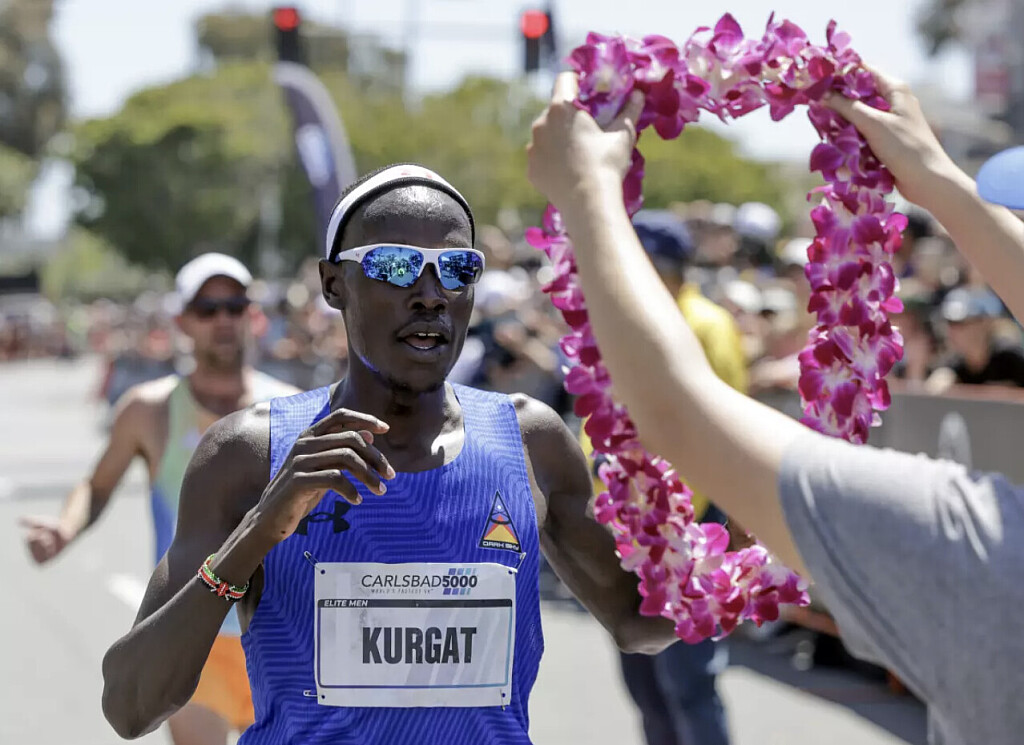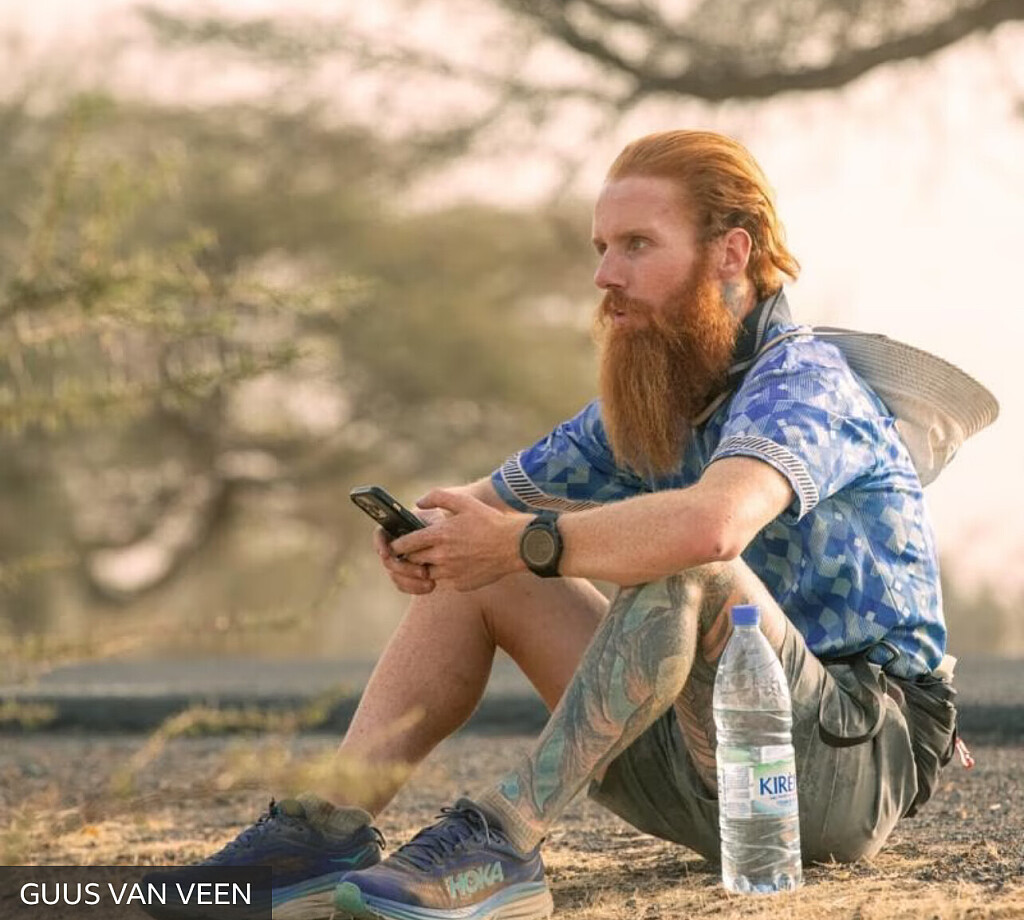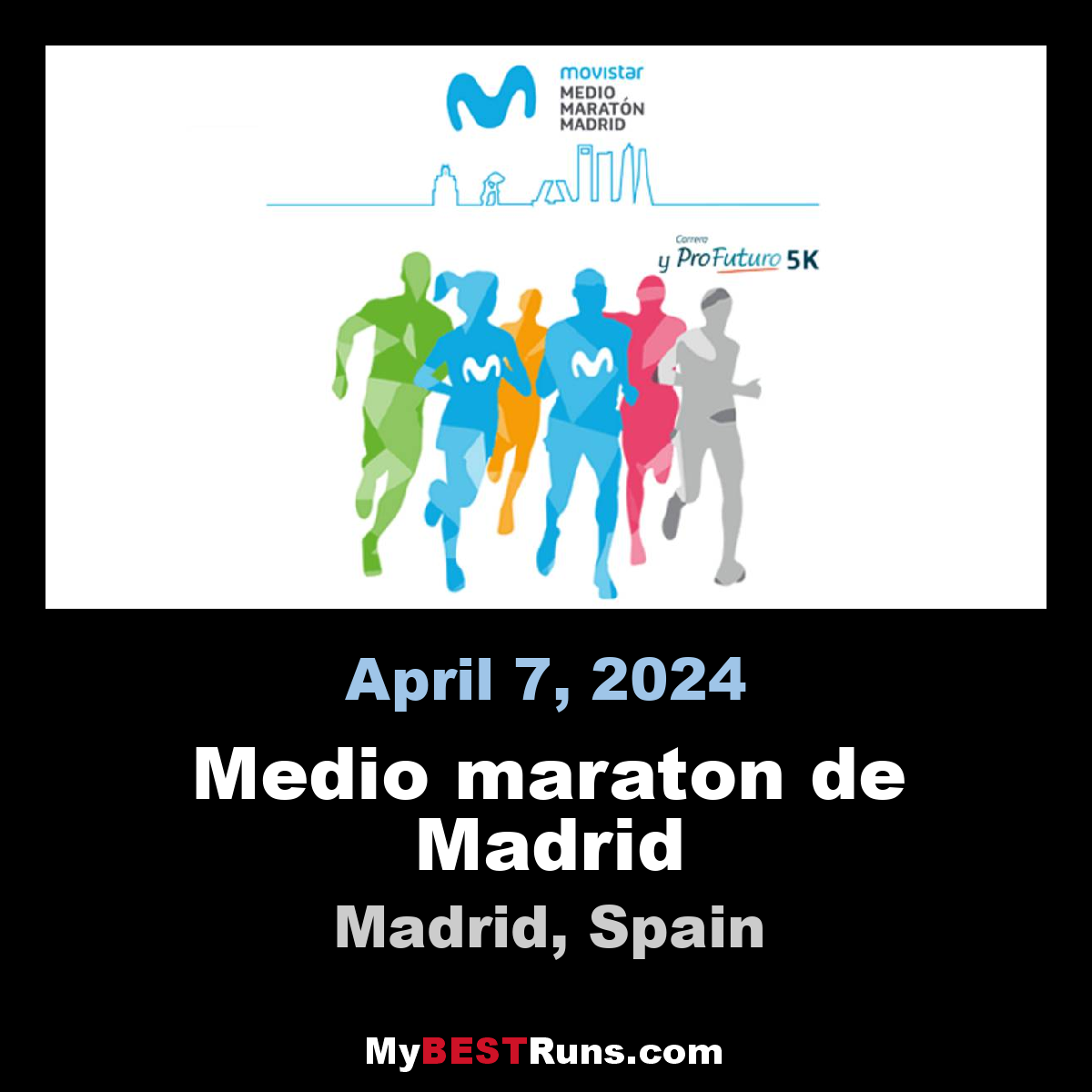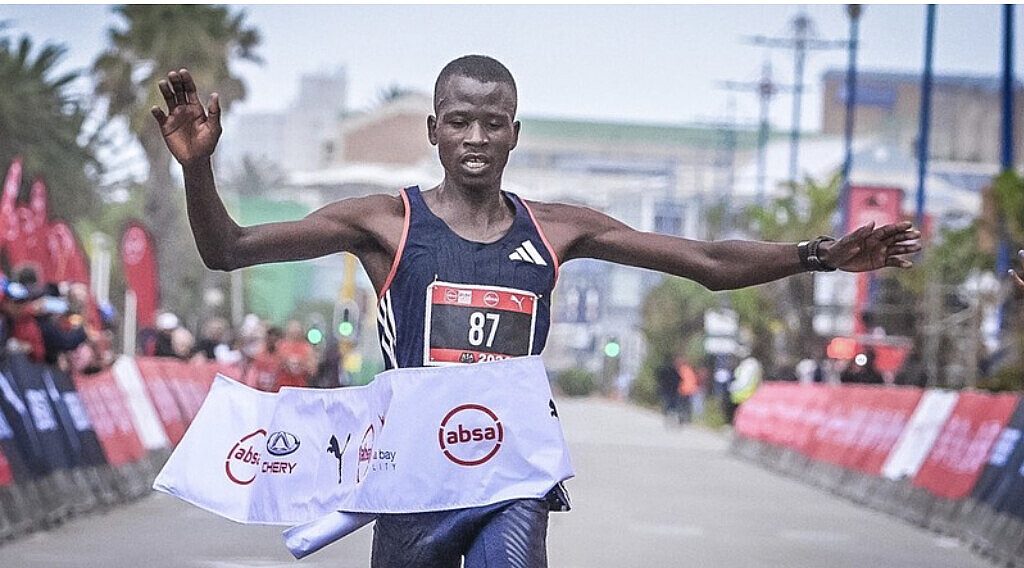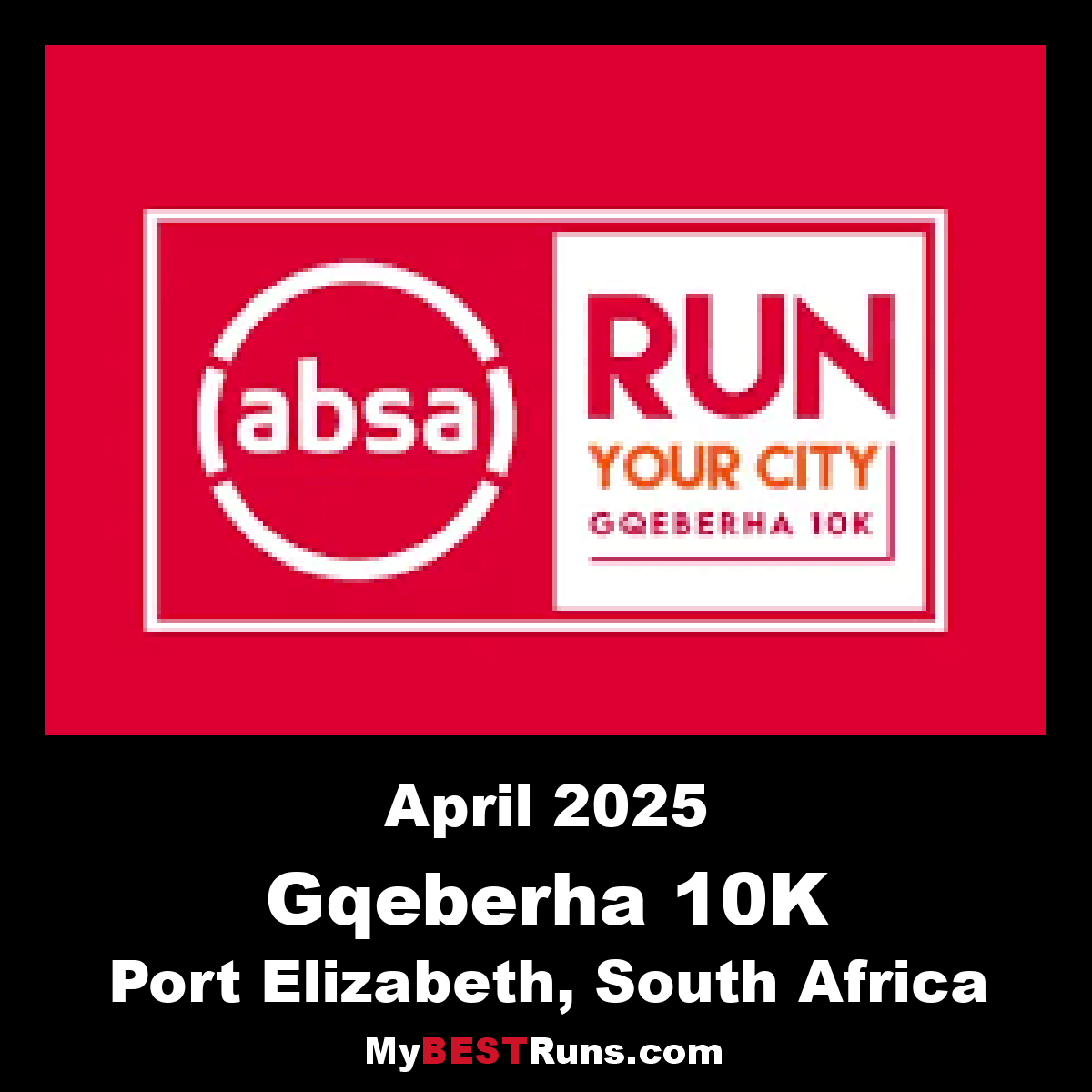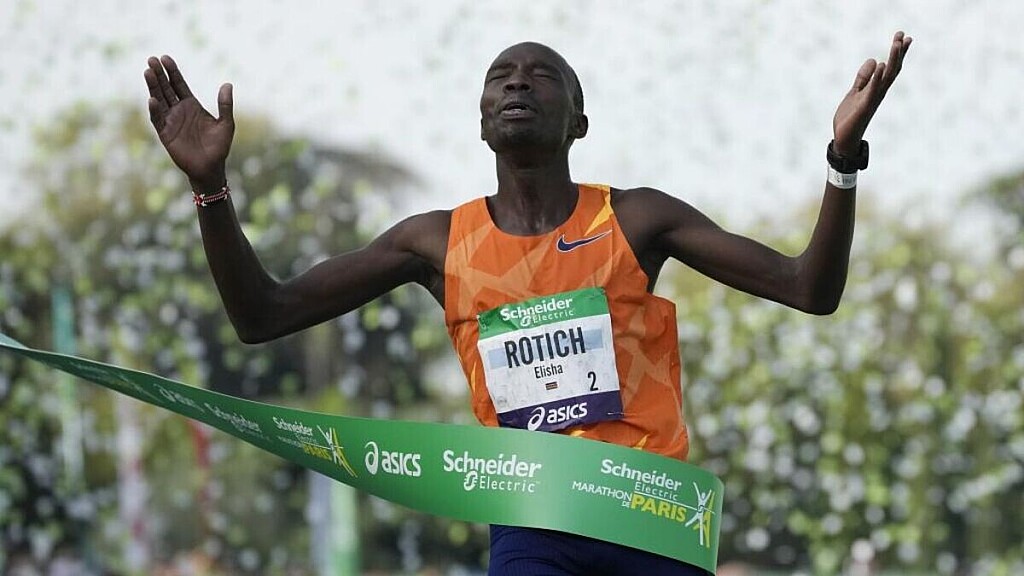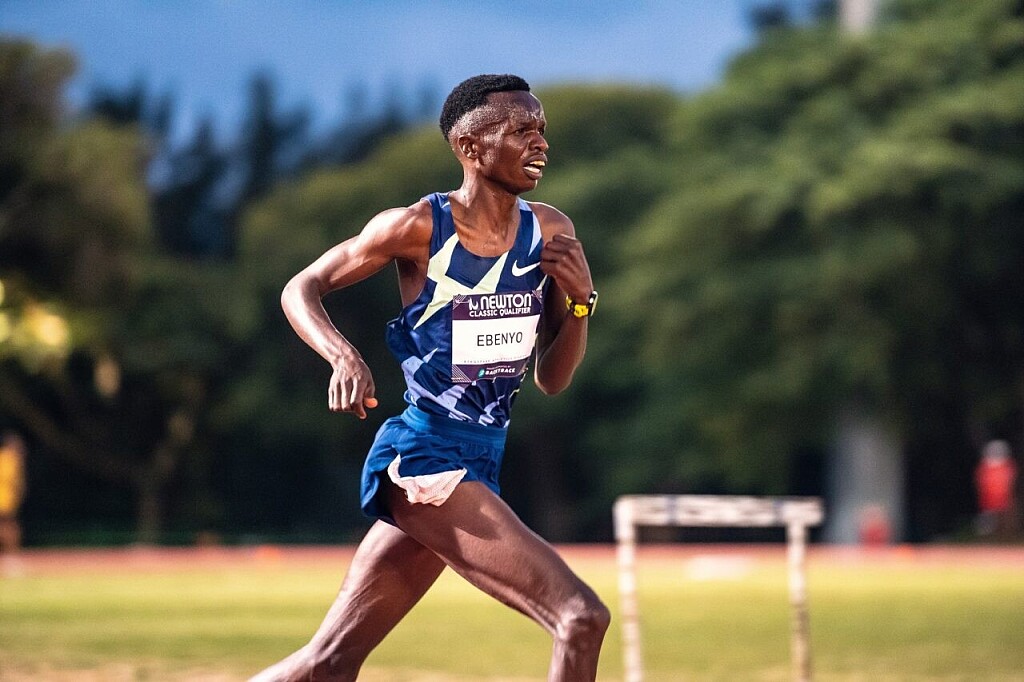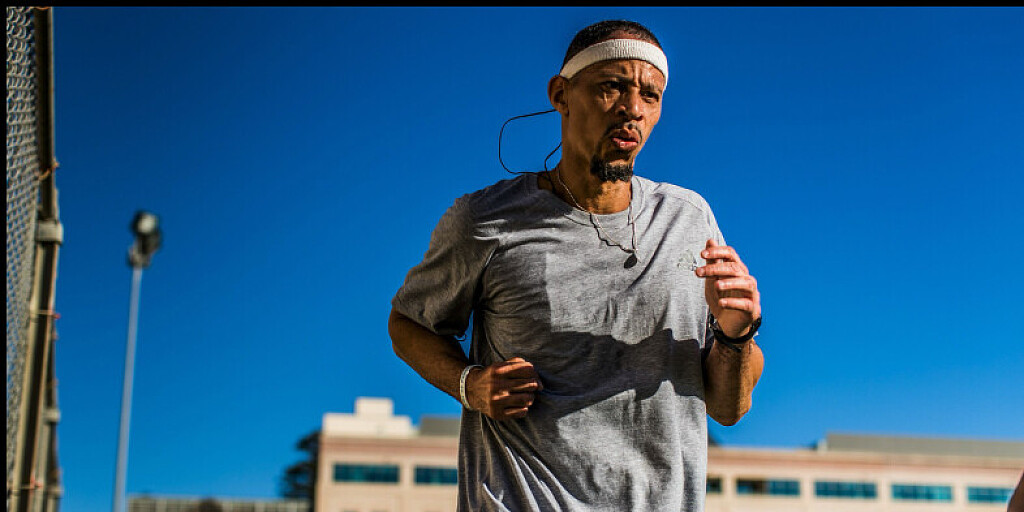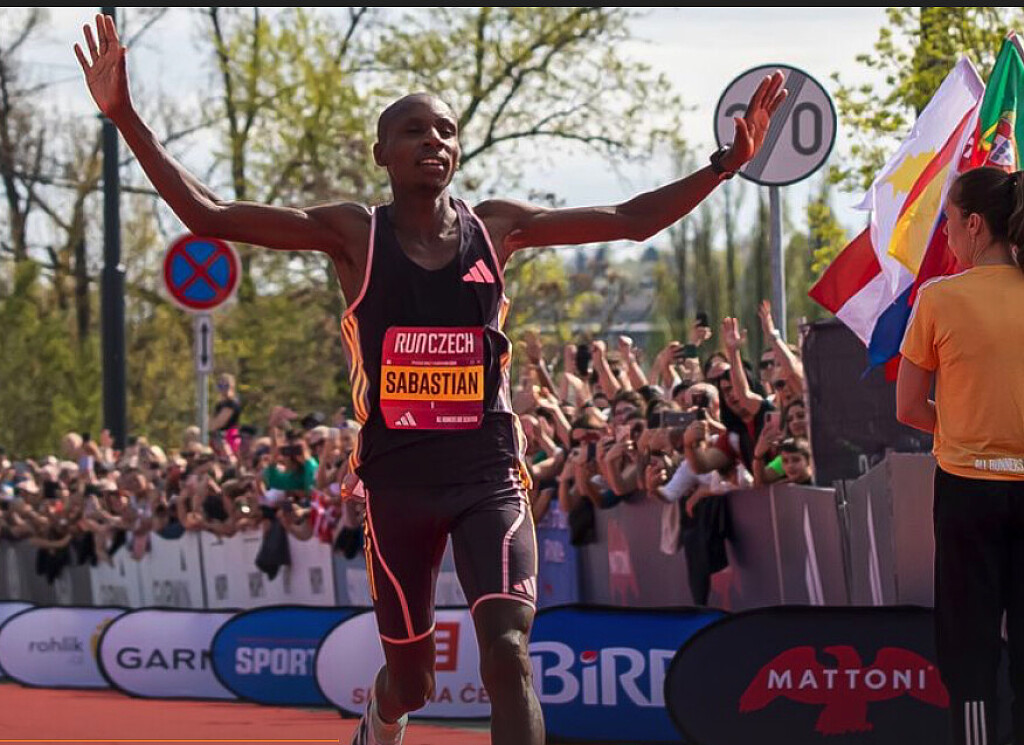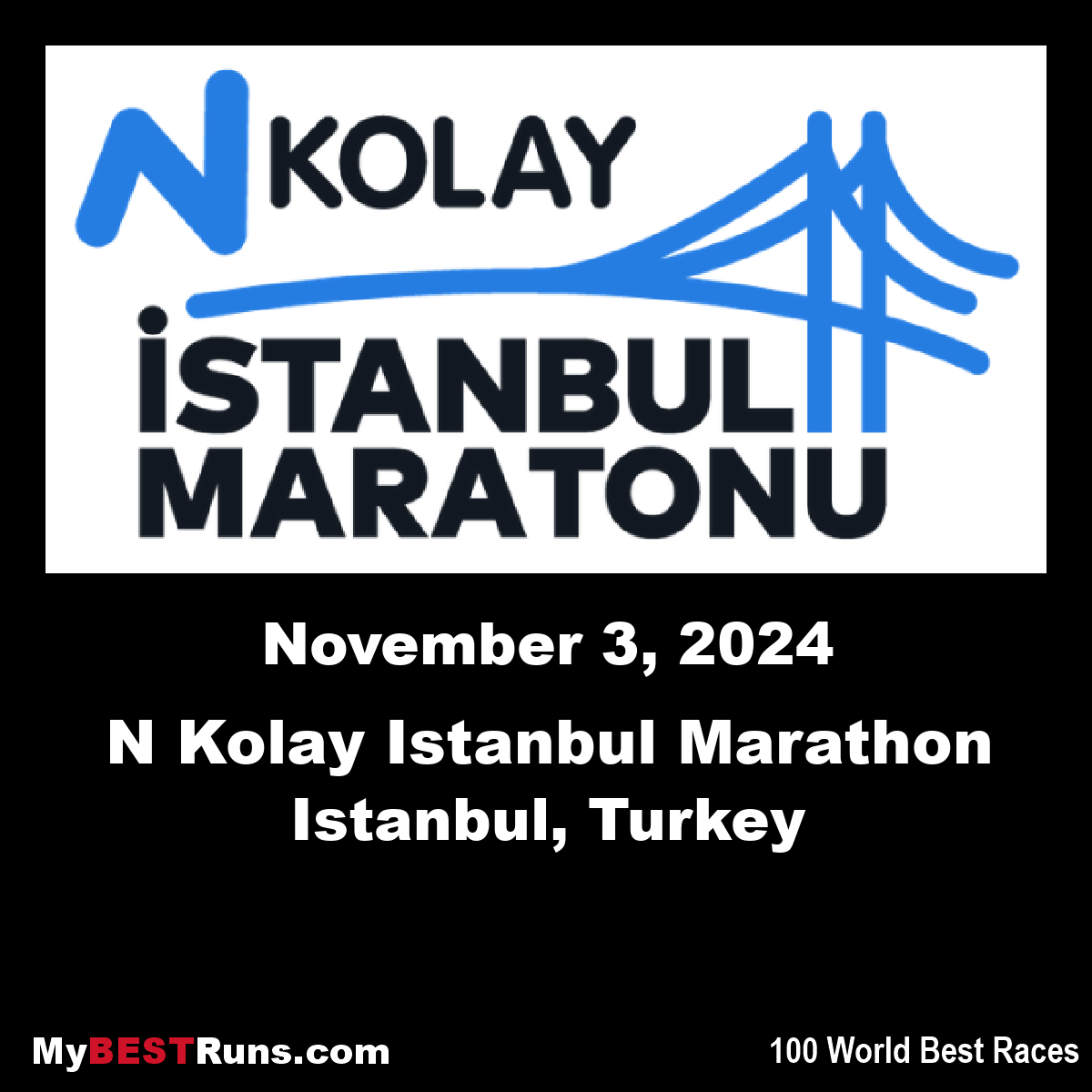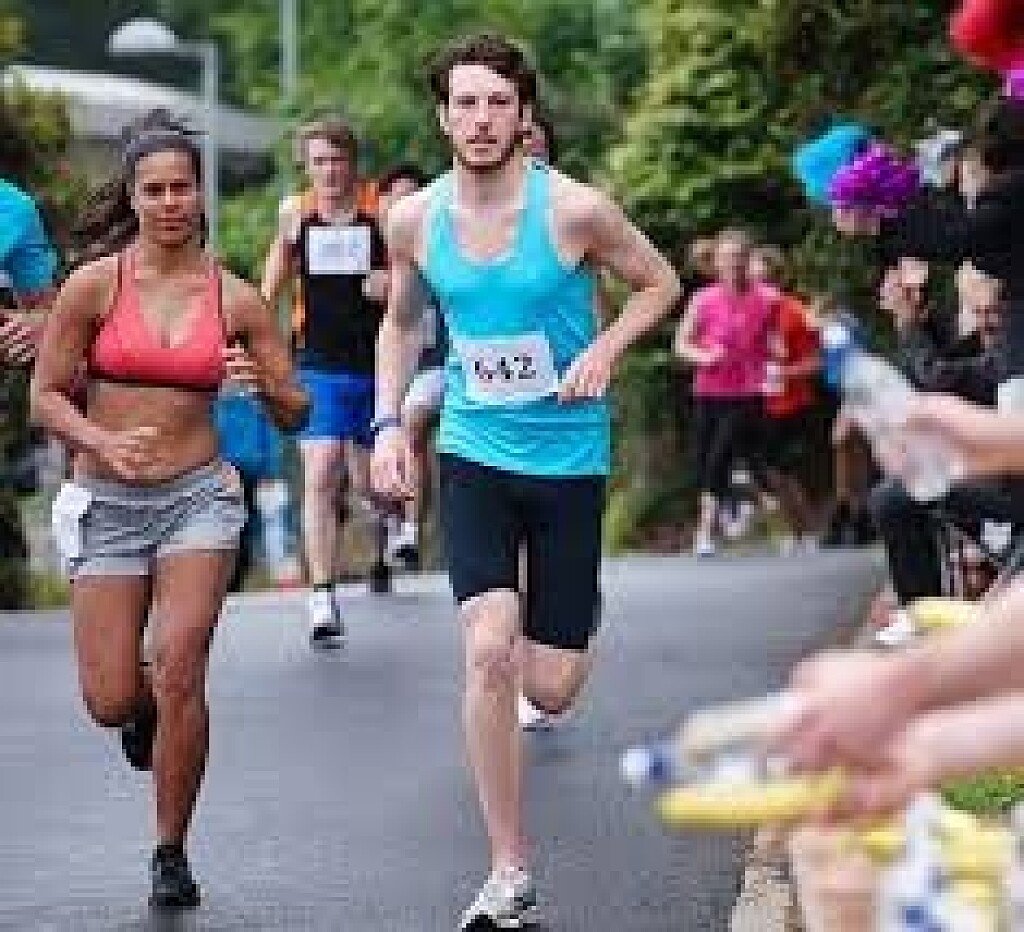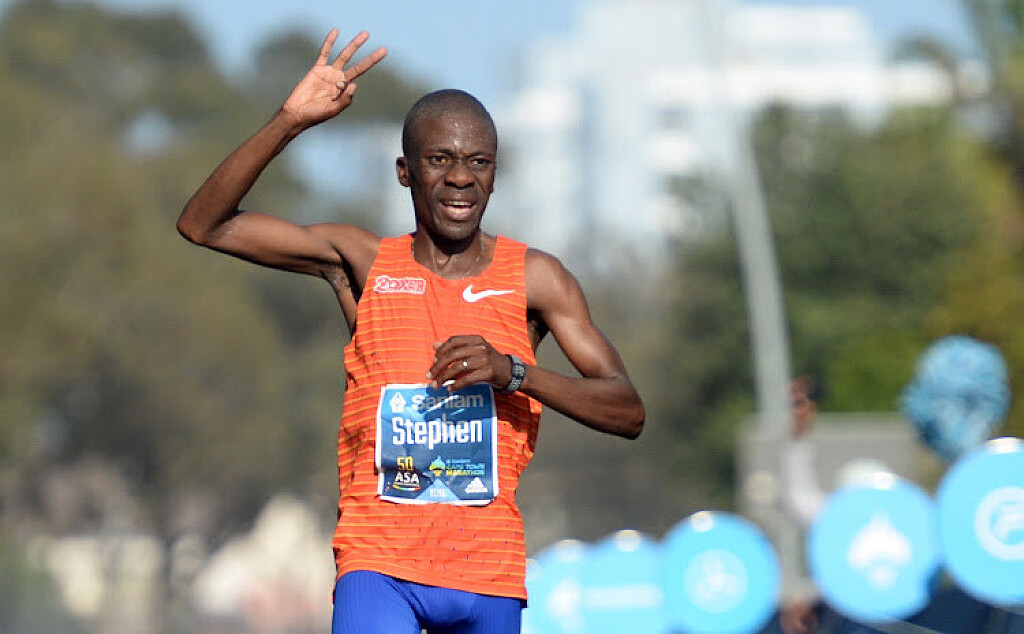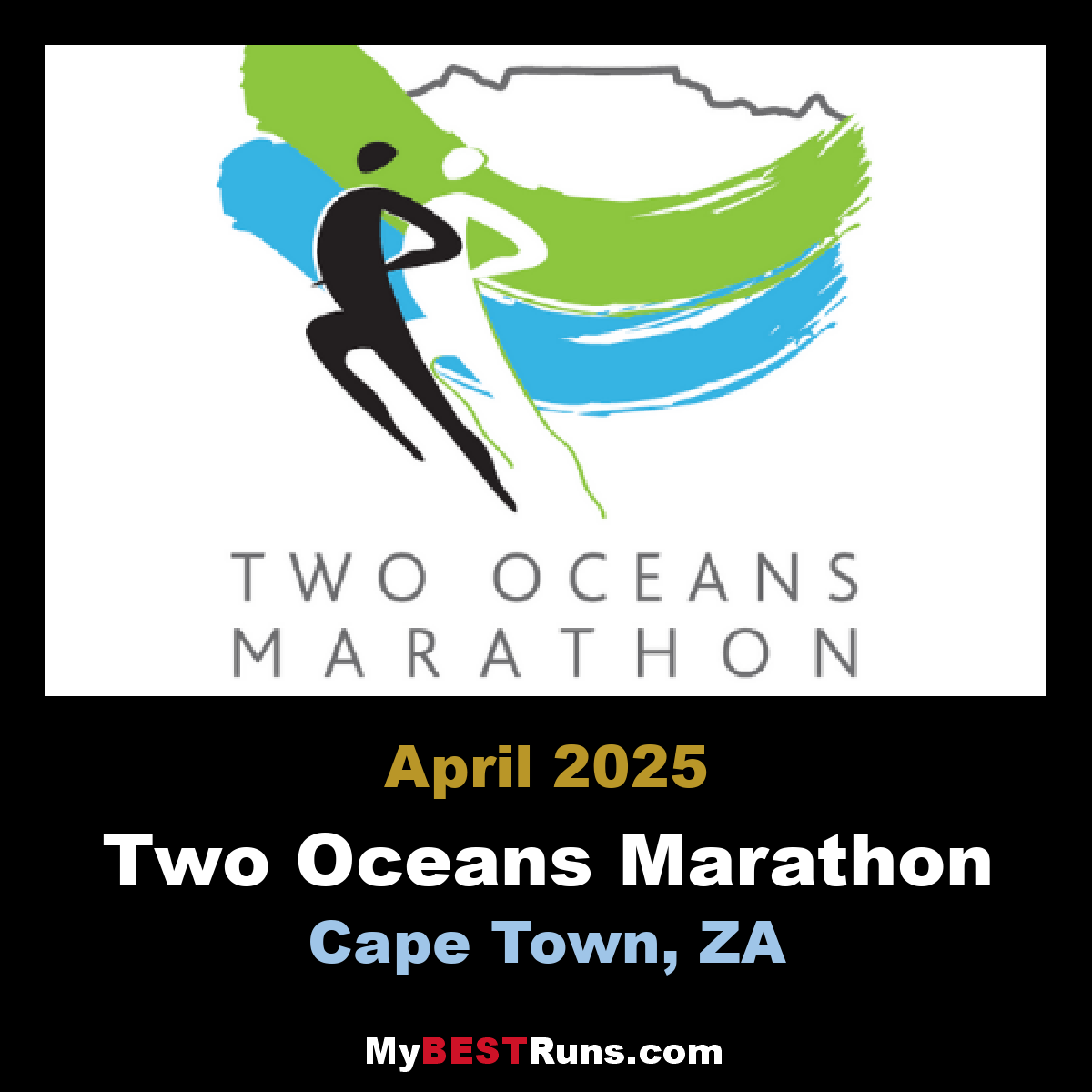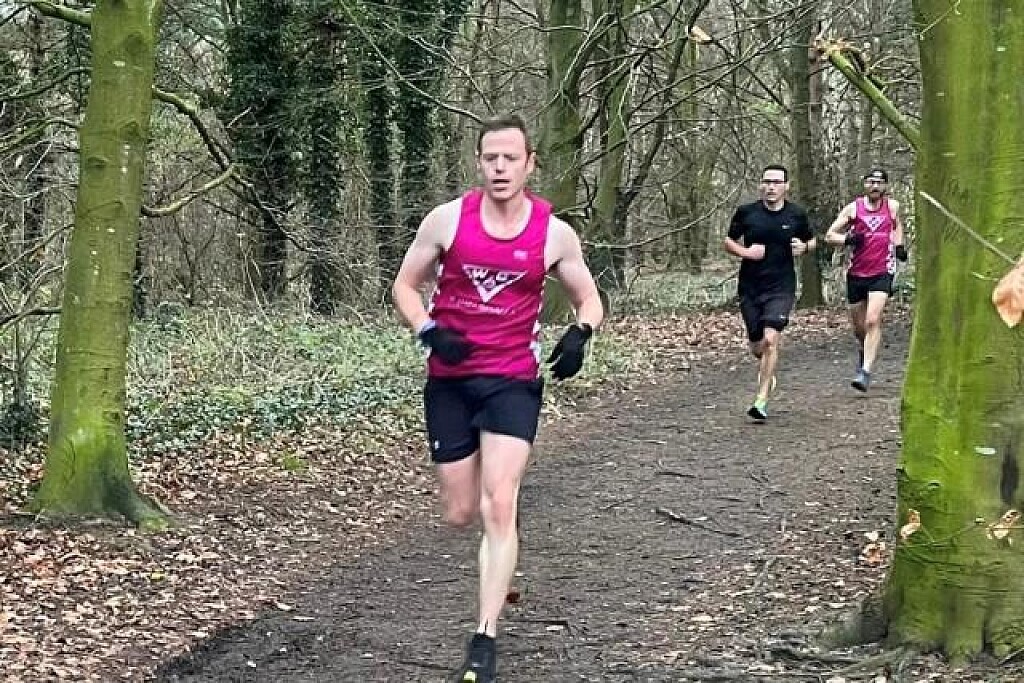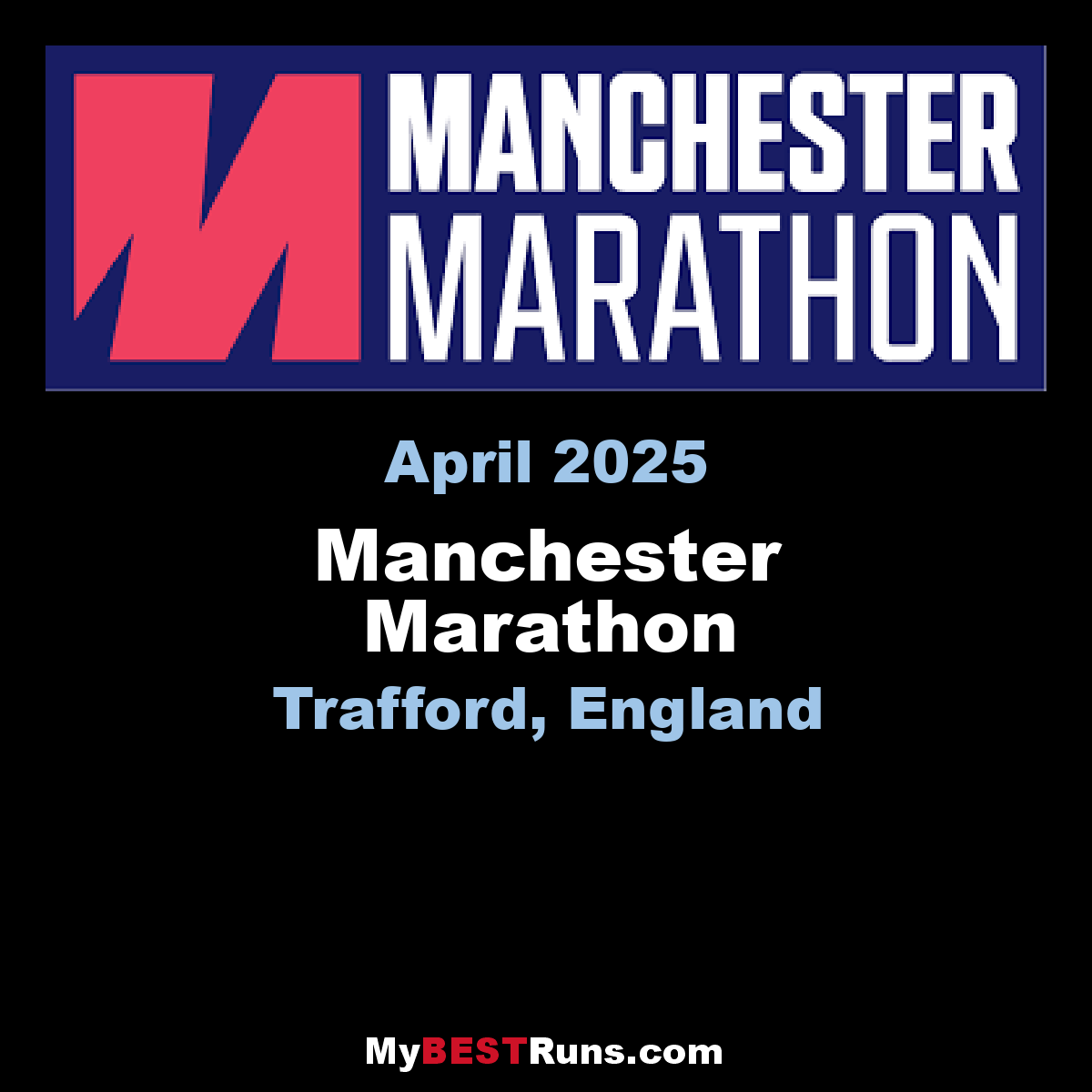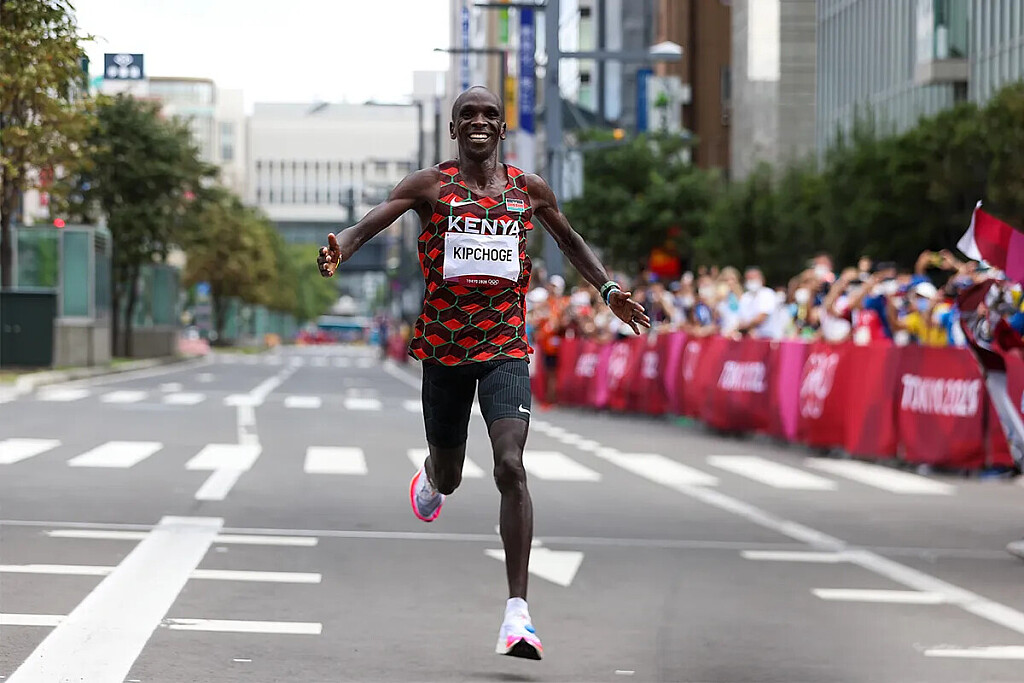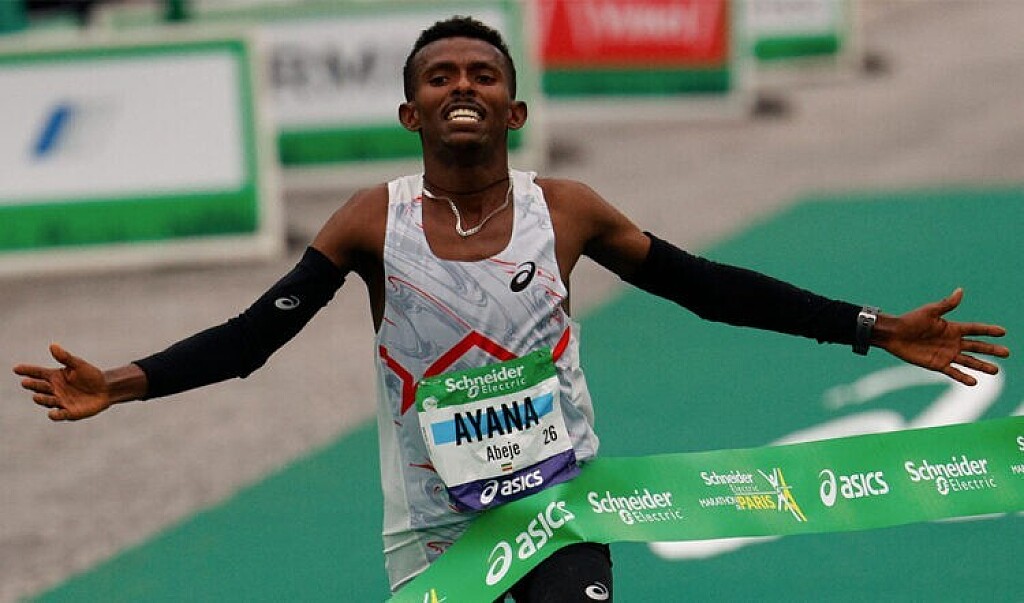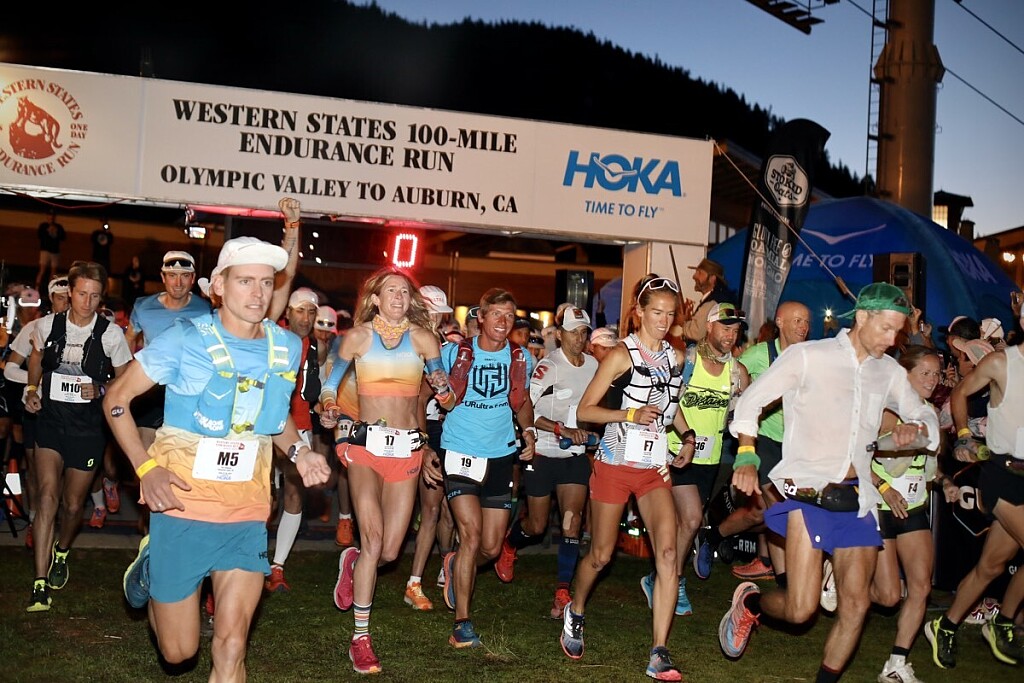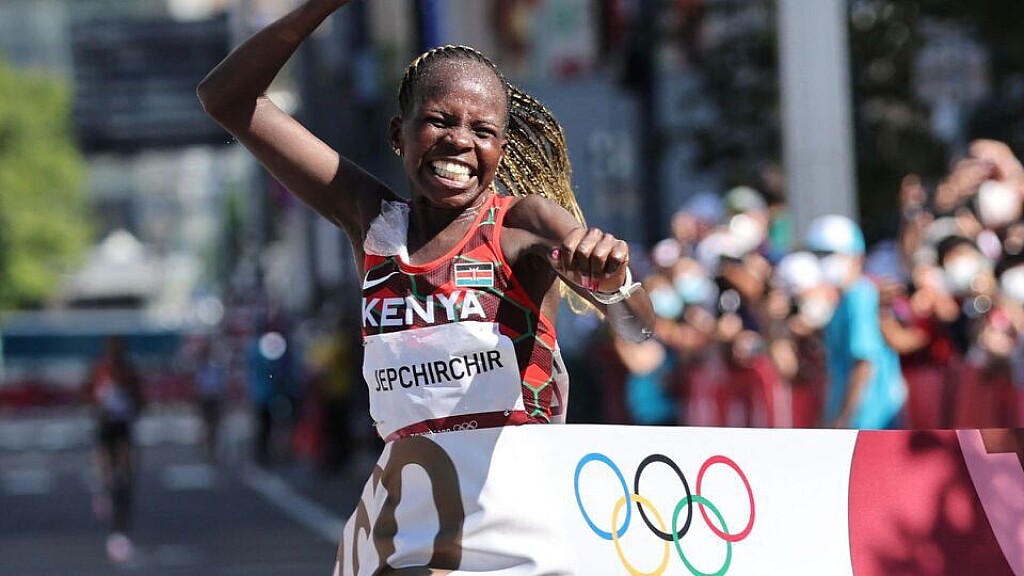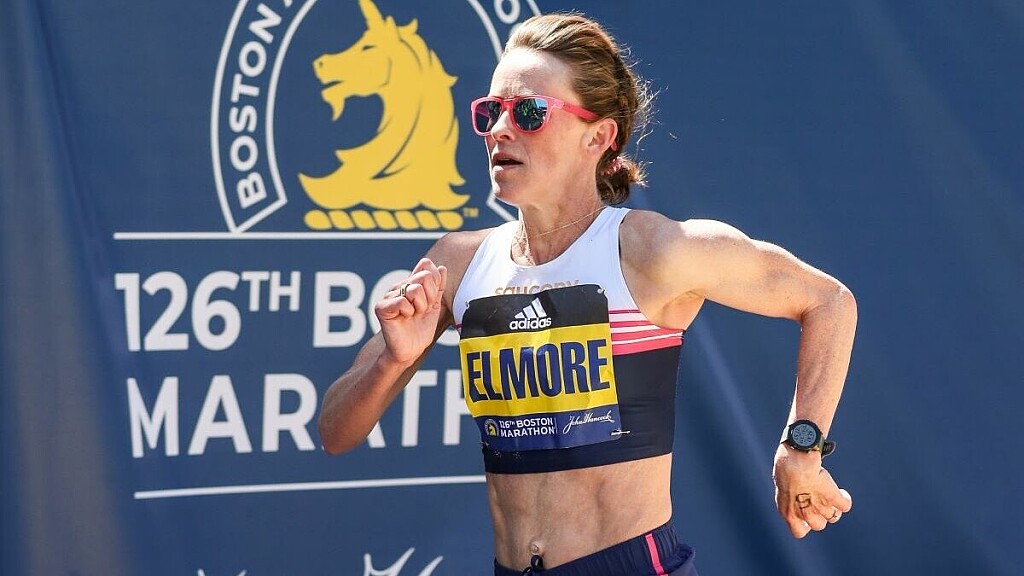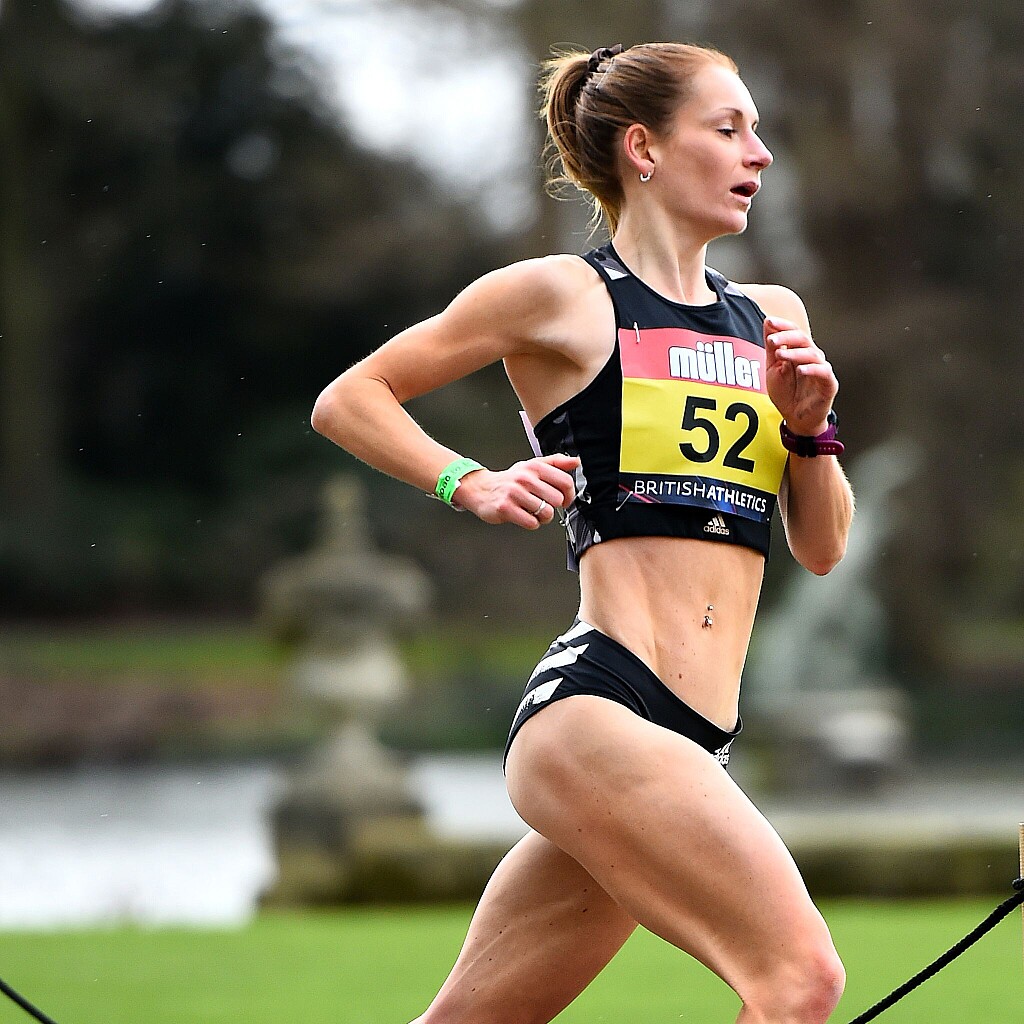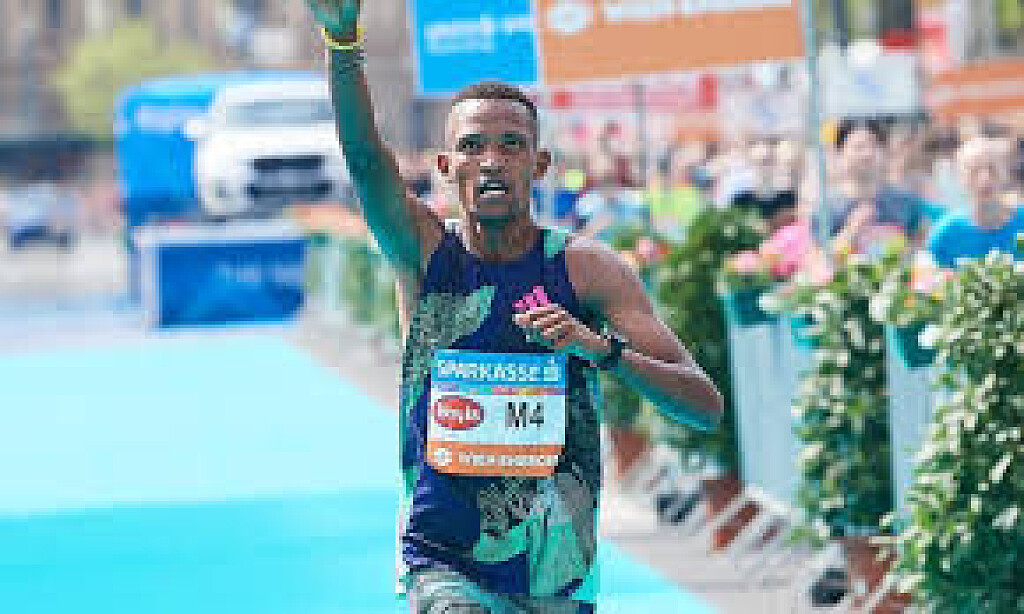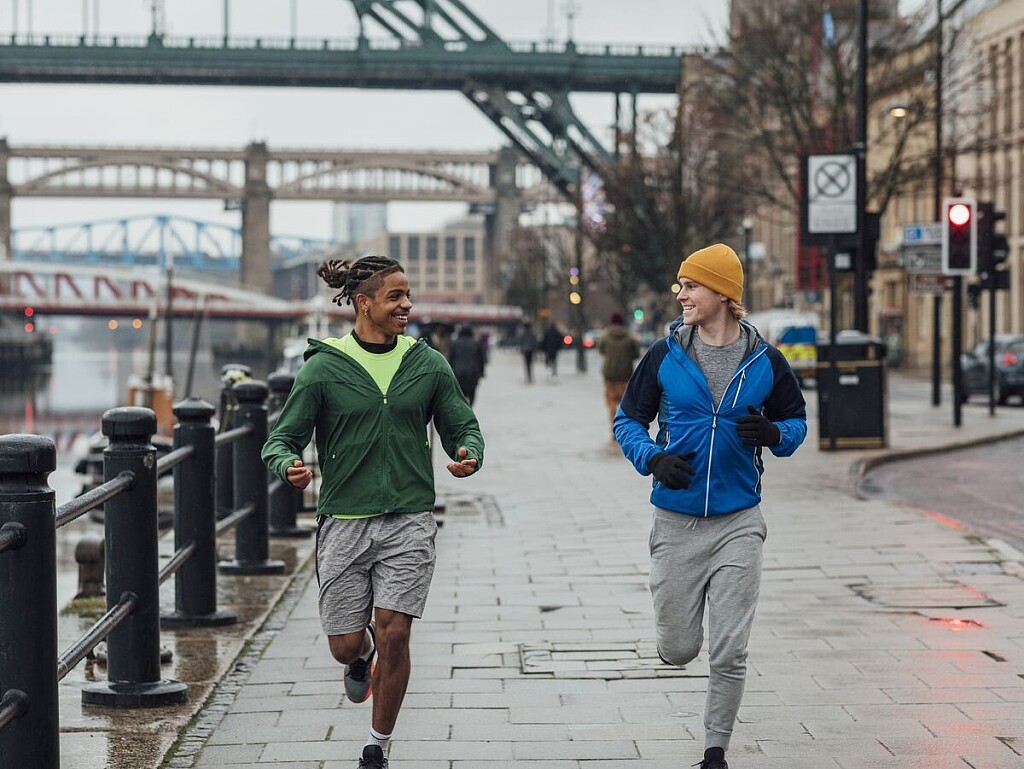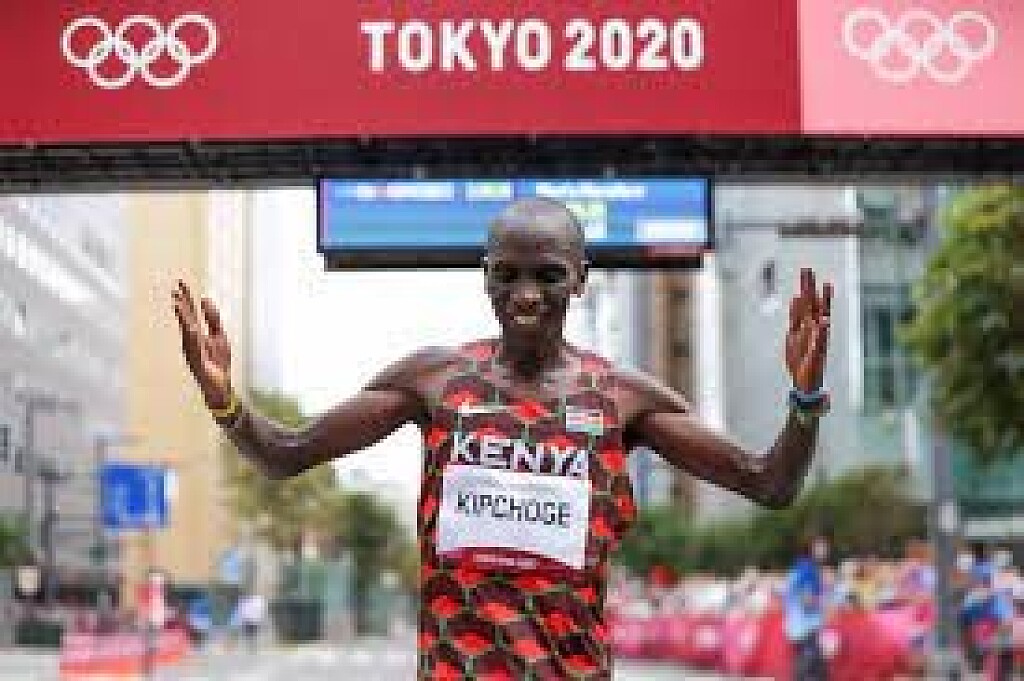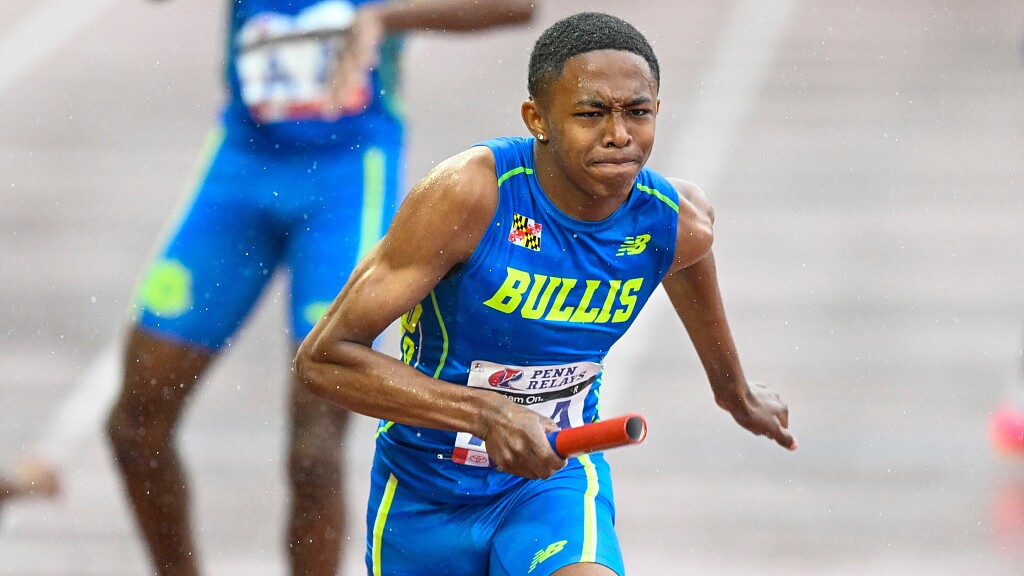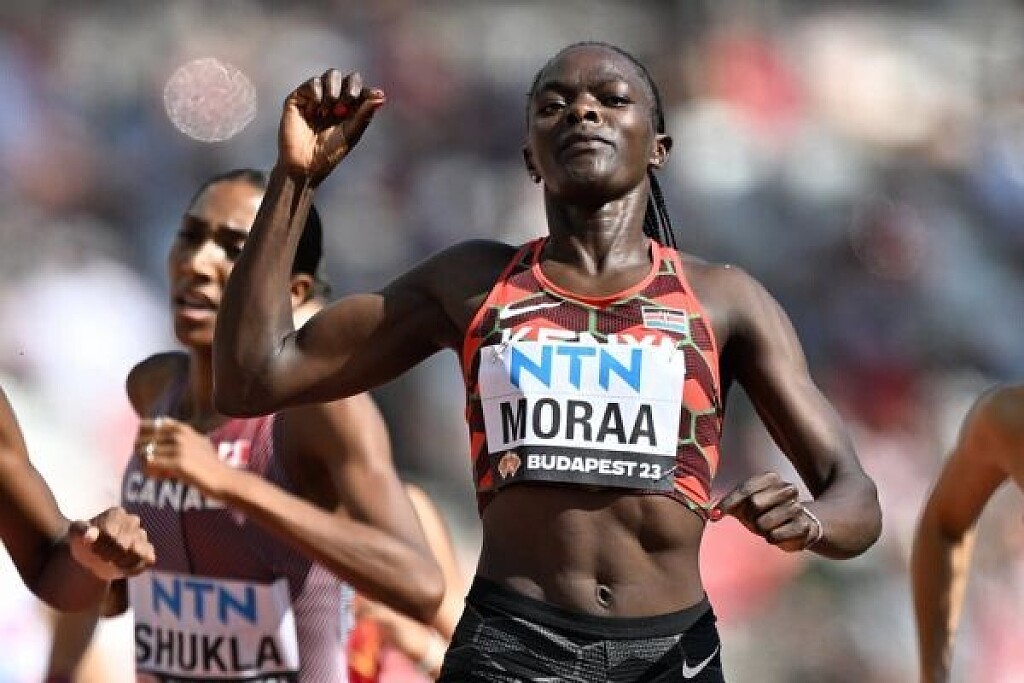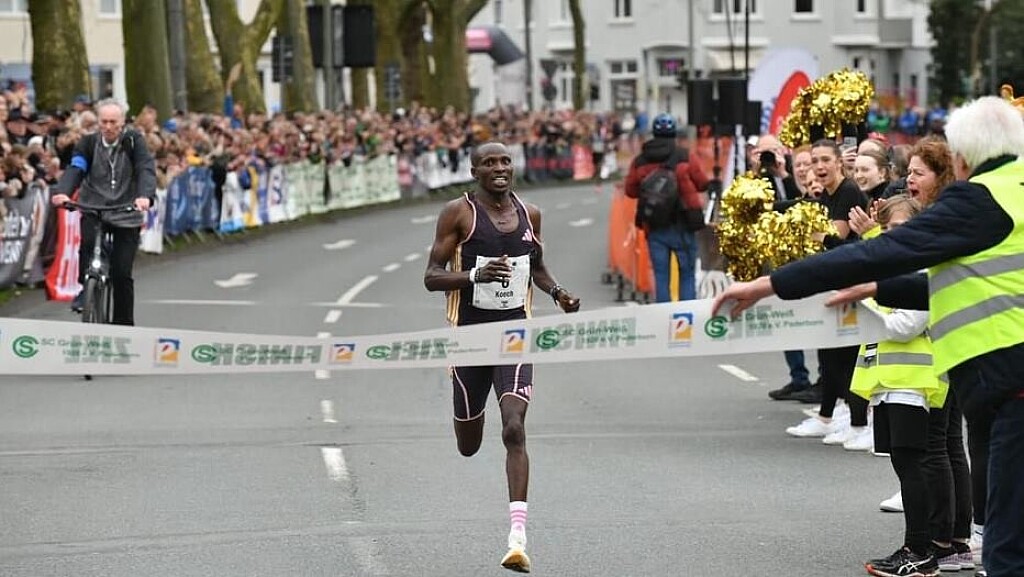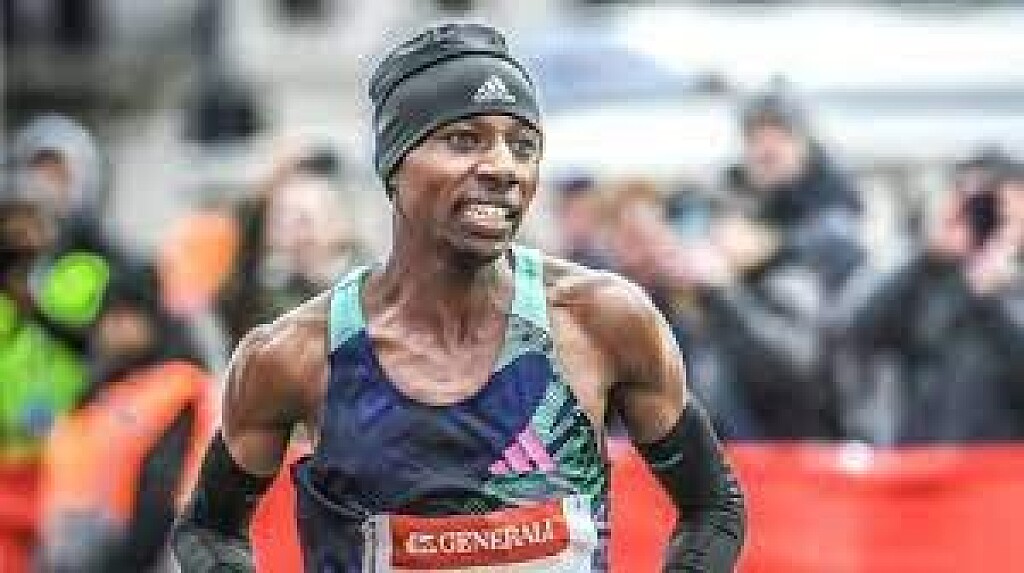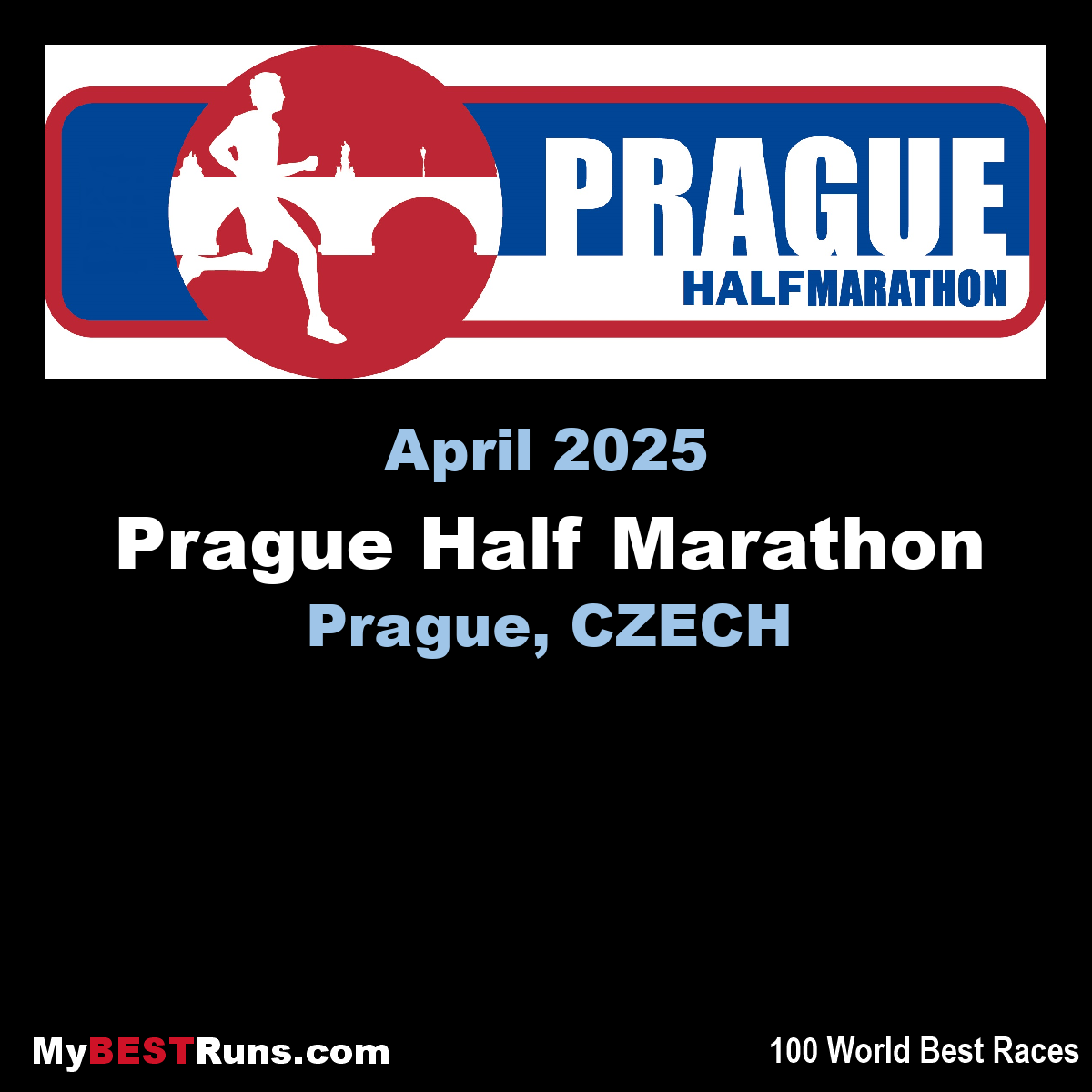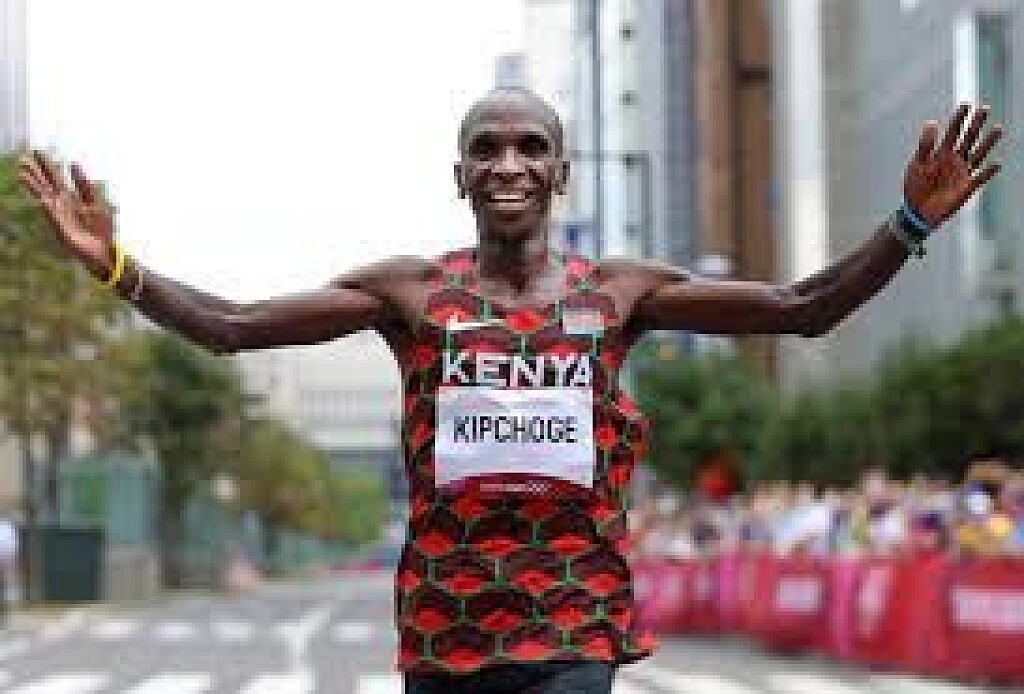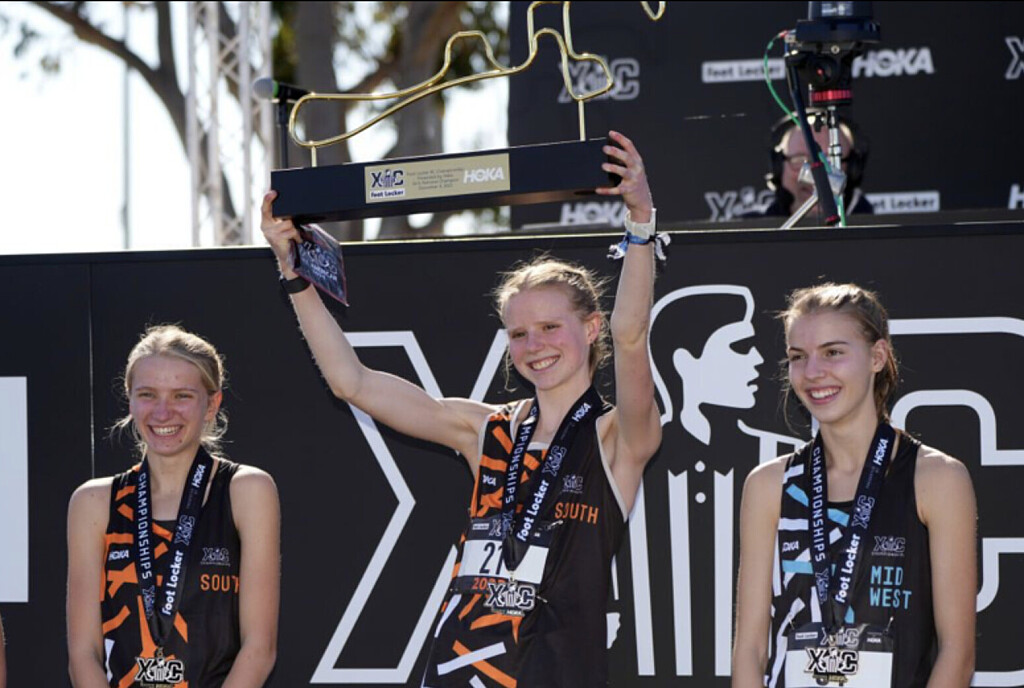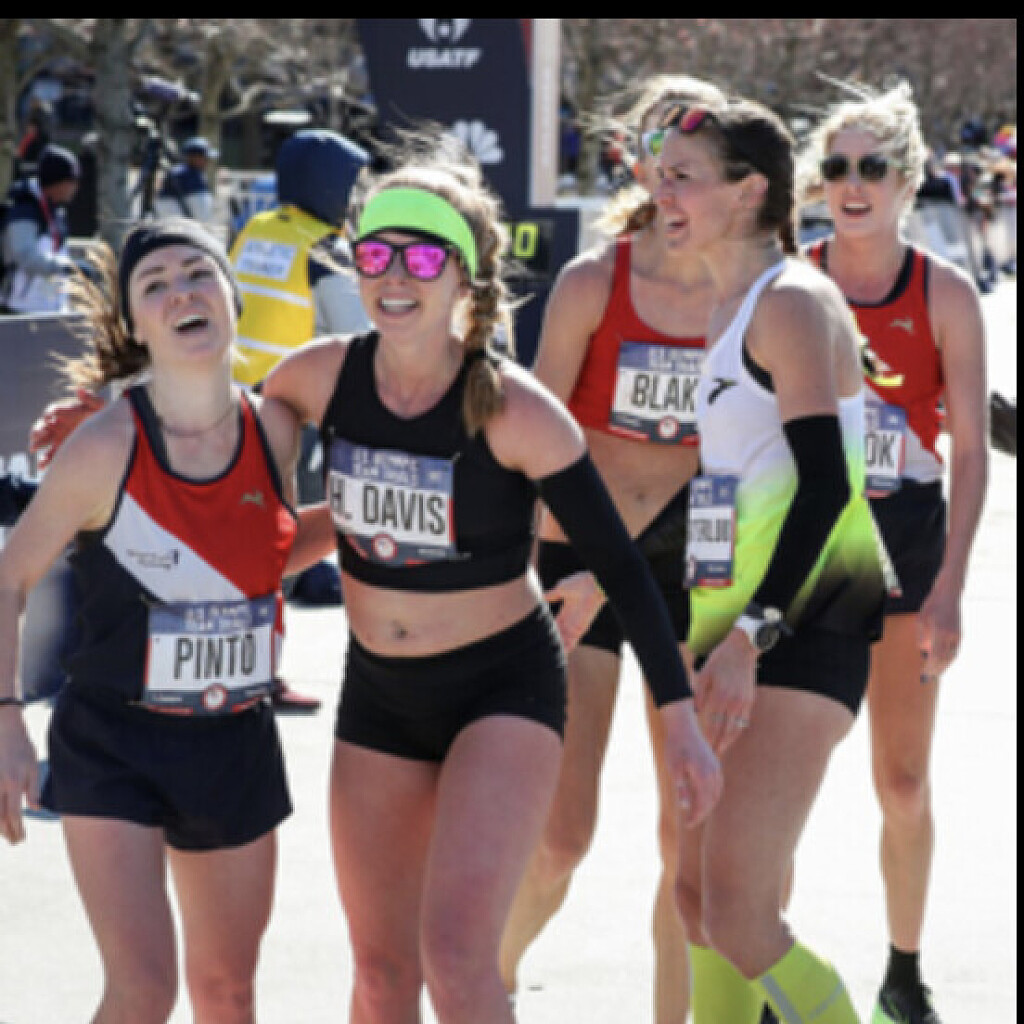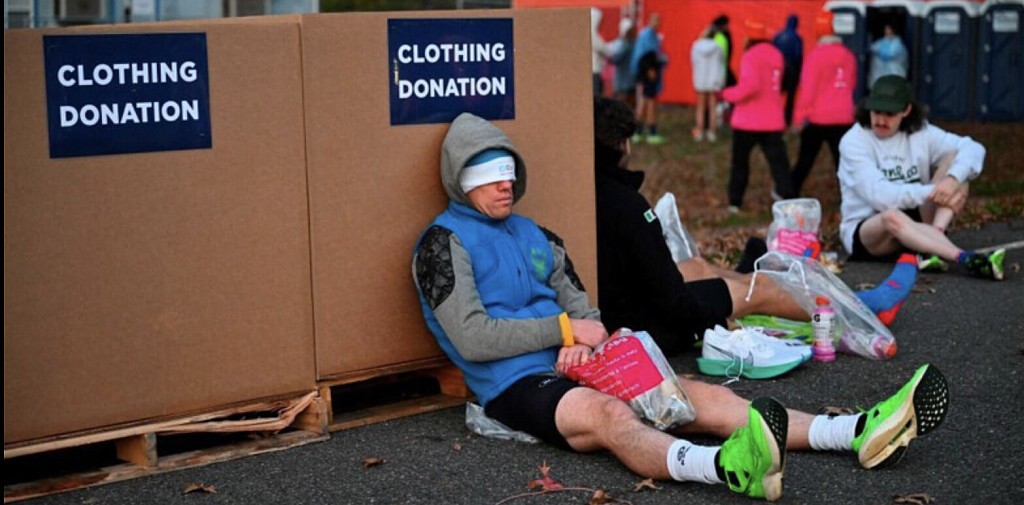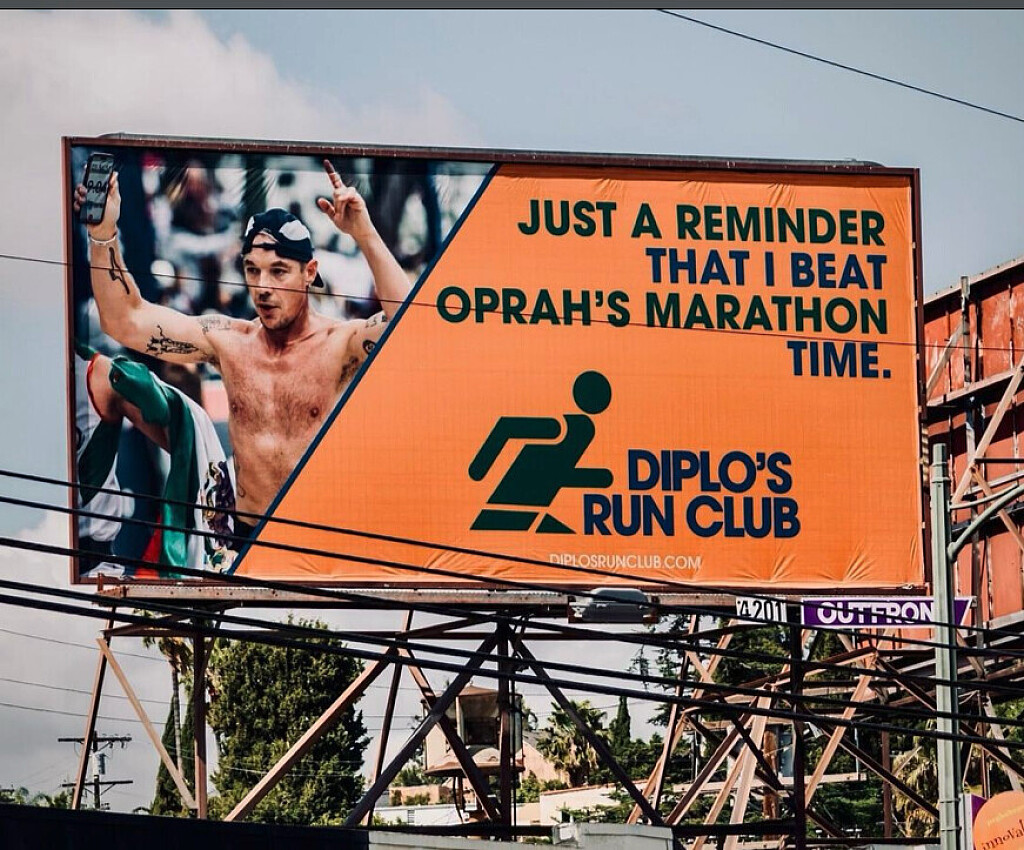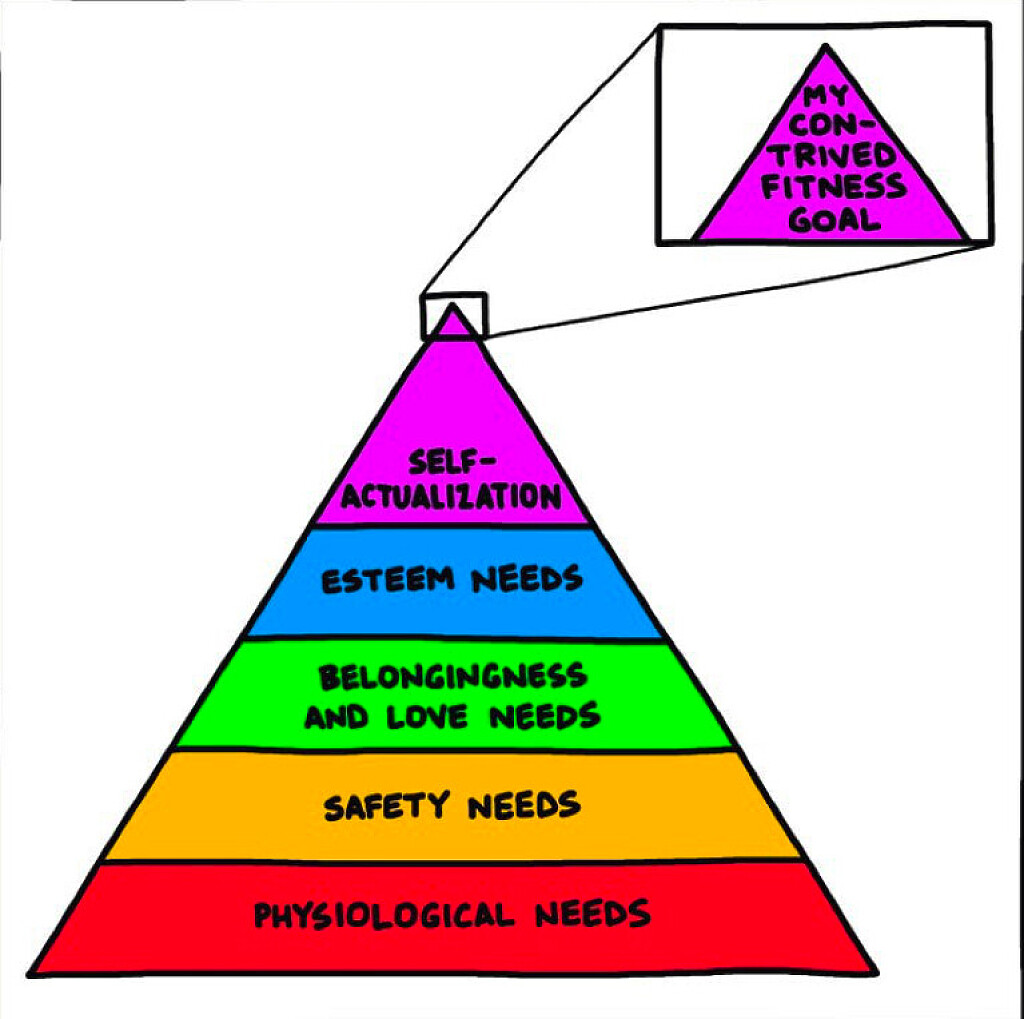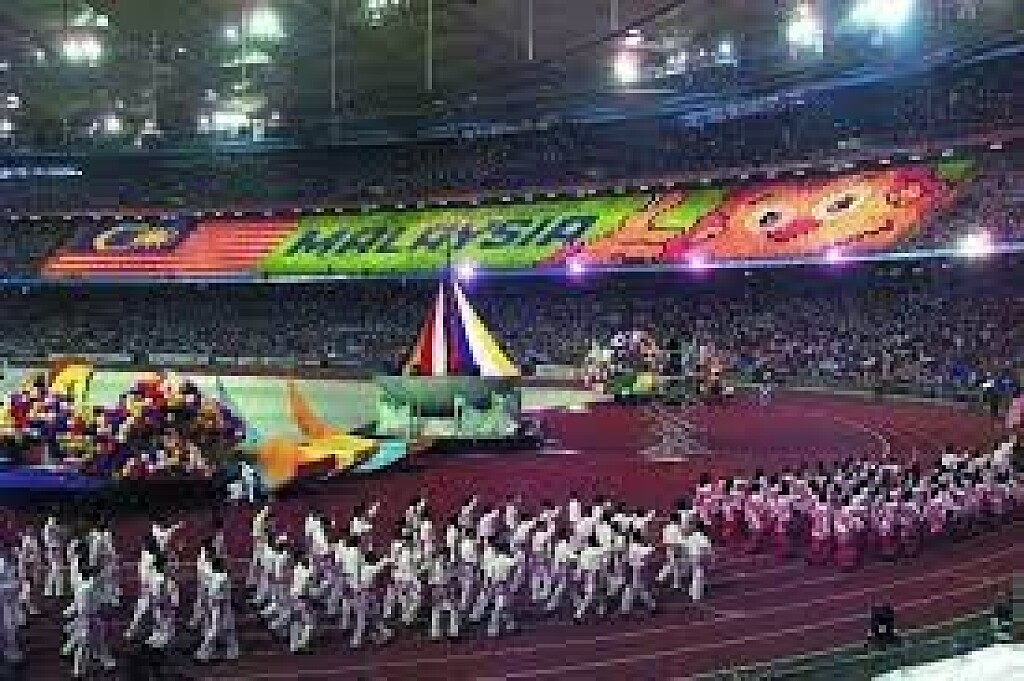Running News Daily
Running News Daily is edited by Bob Anderson. Send your news items to bob@mybestruns.com Advertising opportunities available. Train the Kenyan Way at KATA Kenya and Portugal owned and operated by Bob Anderson. Be sure to catch our movie A Long Run the movie KATA Running Camps and KATA Potato Farms - 31 now open in Kenya! https://kata.ke/
Index to Daily Posts · Sign Up For Updates · Run The World Feed
Linet Masai headlines Enschede Marathon
Former World 10,000m champion Linet Chepkwemoi Masai will headline the 21st edition of the Enschede Marathon slated for April 21, 2024 in Enschede, Netherlands.
The 34 year-old who is also the 2008 Olympic 10,000m bronze medalist, comes to this race with the fastest time on paper of 2:23.46 that she got six years ago at the Amsterdam Marathon.
Masai who is born in Kapsokwony, Mount Elgon District in Bungoma County will have to get past her compatriot, the 26 year-old, Caroline Jepchirchir, who also comes to this race with a life time best of 2:26.11 that she got at this same course two years ago.
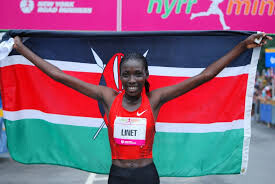
The two will also face four times Belgium National champion, Hanne Verbruggen who comes to the race with a personal best of 2:26.32 that she got last year at the Zurich Maraton de Sevilla, where she finished in seventh place.
Another title contender is Kenya’s Hildah Cheboi who comes to this race with the fourth fastest time on paper of 2:28.31 that she got at home, last year at the Standard Chartered Nairobi Marathon where she finished in position four.
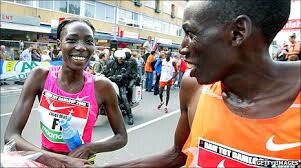
The race organizers have assembled a strong field to try and chase the race course record of 2:21.10, set two years by Maurine Chepkemoi from Kenya.
LEADING TIME
42KM WOMEN
Linet Masai (KEN) 2:23.46
Caroline Jepchirchir (KEN) 2:26.11
Hanne Verbruggen (BEL) 2:26.32
Hildah Cheboi (KEN) 2:28.31
(04/09/2024) ⚡AMPby John Vaselyne
Enschede Marathon
Experience the oldest marathon in Western Europe! We write about August 1946. The European Athletics Championships were held in Olso and the I.A.A.F. conference had taken place. During that conference, an agreement was made to hold an athletics competition between the Netherlands and Czechoslovakia in Enschede in July 1947. Saturday July 12, 1947 was the big day: 51 participants took...
more...Pamela Jelimo set to receive Olympic silver after Ekaterina Guliyev's doping ban
South Africa's Caster Semenya has been elevated to gold with Kenya's Pamela Jelimo set for silver after doping reshuffle in 2012 Olympics 800m.
Former Olympic 800 champion, Pamela Jelimo, is poised to be awarded the 2012 London Olympic 800m silver, marking a significant shift in the event's final standings due to doping violations.
This development comes after the Russian Athletics Federation (RusAF) announced a four-year ban for Ekaterina Poistogova-Guliyev for historic doping offences, leading to a reshuffle of the medal positions from the London games.
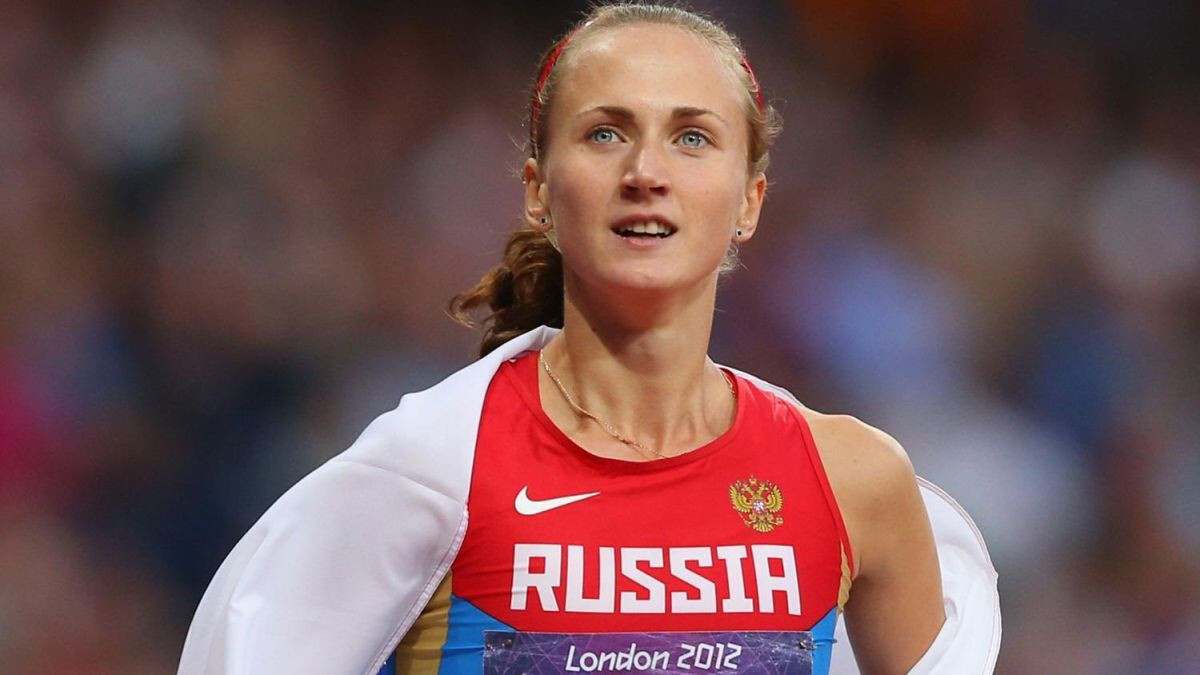
The ban, which results from violations between July 2012 and October 2014, voids all of Poistogova-Guliyev's results from that period, according to a RusAF statement.
The athlete, who initially competed for Russia before switching allegiance to Turkey, was implicated in the use or attempted use of banned substances, with evidence drawn from the Moscow anti-doping laboratory.
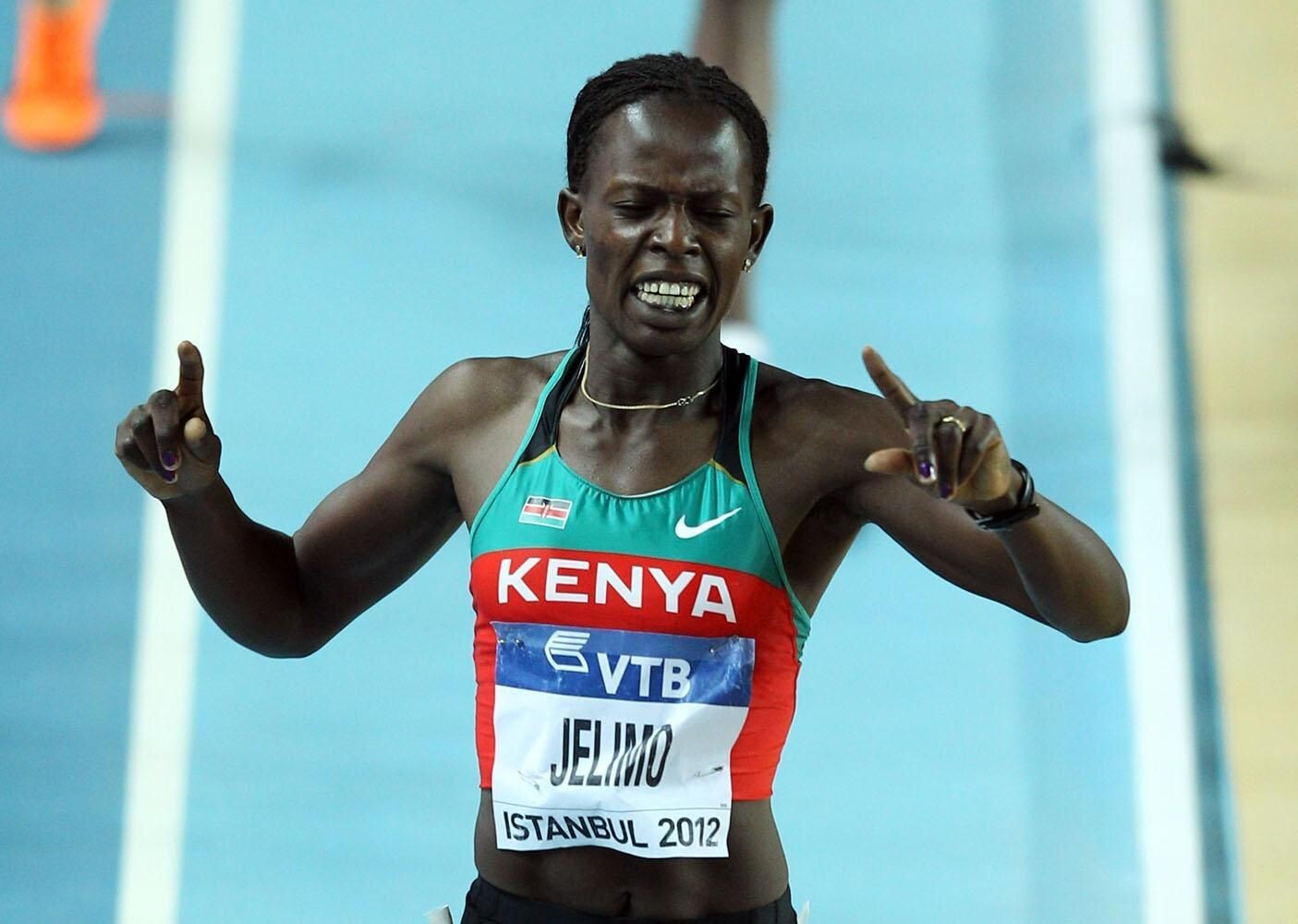
The case has had far-reaching implications, not only for Poistogova-Guliyev but also for other athletes in the 2012 Olympic 800m event.
Pamela Jelimo, the London Olympic bronze medallist, will be elevated to silver, and American Alysia Montano, who finished fifth, is set to inherit the bronze, pending official confirmation.
This adjustment stems from a broader investigation into systematic doping within Russian athletics, spearheaded by the World Anti-Doping Agency (WADA).
WADA had initially recommended a lifetime ban for Poistogova-Guliyev in 2015, alongside the stripping of her London medal, as part of its findings on state-sponsored doping.
Although the Court of Arbitration for Sport (CAS) imposed a two-year ban on Poistogova-Guliyev in 2017, her results were initially voided only back to October 2015, allowing her to retain her Olympic medal temporarily.
The recent decision by RusAF to extend the voiding of her results to July 2012 effectively strips her of the medal, subject to final approval by the International Olympic Committee (IOC).
The women's middle distance events at the London Olympics have been notably affected by doping, with three runners in the 800m final, including Poistogova-Guliyev, Mariya Savinova, and Elena Arzhakova, having their results voided due to doping offences.
Jelimo's elevation to the silver medal position comes after a long wait; it took 10 years for her to be awarded the bronze medal for the same event, following the disqualification of Maria Savinova for doping violations.
The reallocation of medals in cases of doping violations is a complex and often slow process, involving multiple organisations including WADA, CAS, RusAF, and the IOC.
The final decision on the redistribution of medals from the 2012 Olympics will be closely watched by the athletics community and represents a critical step in the ongoing fight against doping in sport.
Poistogova-Guliyev's ban, which lasts until 2026, reflects a deduction for the time served under her previous CAS-imposed sanction.
In addition to her case, RusAF has announced a two-year and six-month ban for 3,000m steeplechaser Nikolay Chavkin for similar doping offenses.
(04/09/2024) ⚡AMPby Festus Chuma
Kennedy Kiprop Cheboror slapped with a two-year ban by AIU
Kennedy Kiprop Cheboror is the latest Kenyan to be added to the list of shame after violating an anti-doping rule.
Kennedy Kiprop Cheboror is the latest addition to the doping list of shame after being slapped with a two-year ban by the Athletics Integrity Unit.
Earlier this year, the 33-year-old was provisionally suspended for whereabouts failures and after enough investigation, the athlete has now been banned for two years.
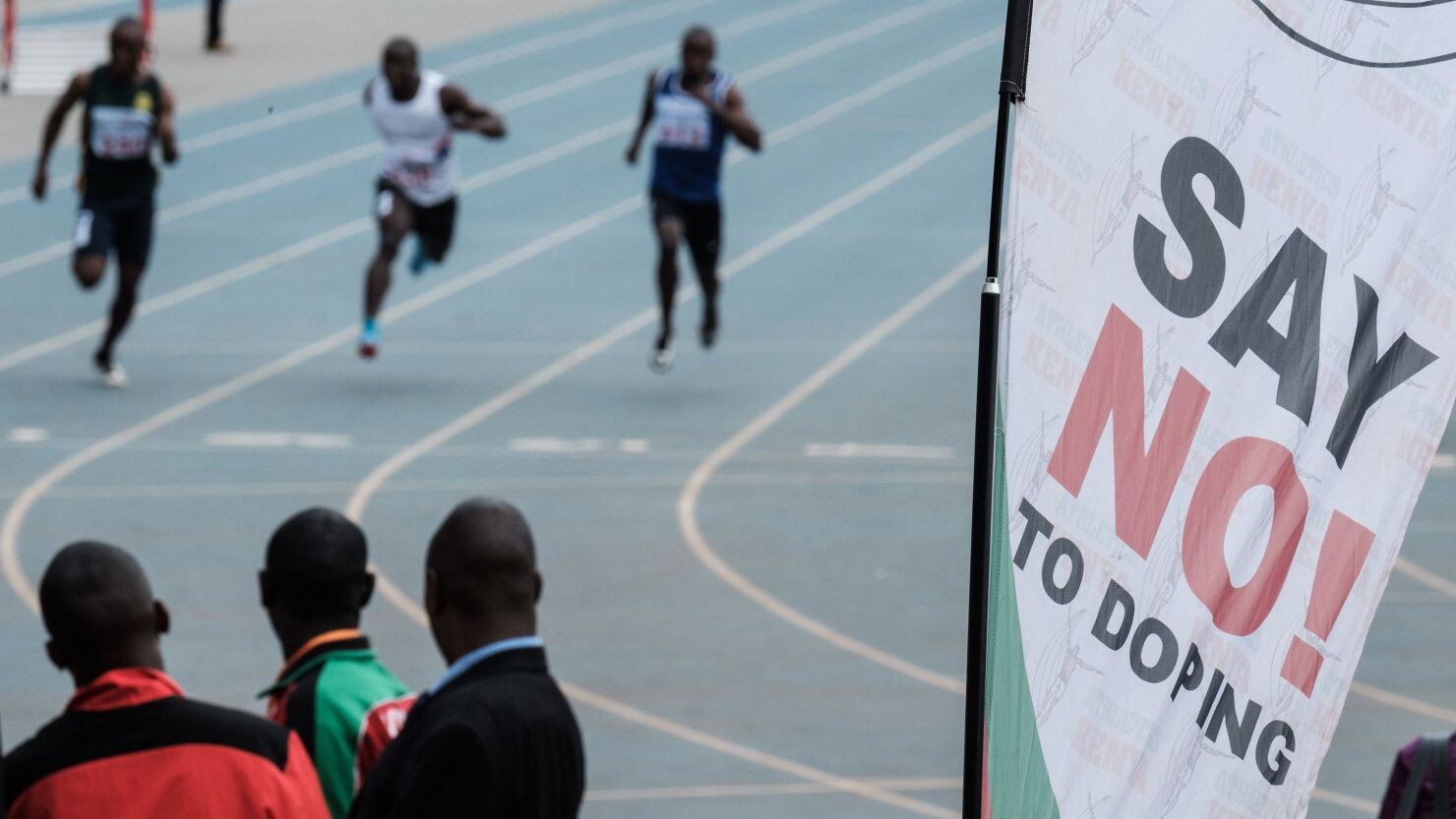
As per the AIU, all his results from December 27 have been disqualified after he missed three tests in the twelve-month period beginning on November 6, 2023. He first missed a test and a filing failure on November 6 last year.
Cheboror then missed other two tests on November 28 and December 27. As per the AIU, the athlete’s whereabouts information stated that he would be at an address in Kapsabet, Kenya on the first missed test during his specified 60-minute time slot between 19:00-20:00 (the “Camp Address”).

“In summary, a Doping Control Officer (“DCO”) and a Doping Control Assistant (“DCA”) arrived at the Camp Address on 6 November 2023 at 19:00.
“The DCO and the DCA met a man who informed them that the Athlete was in his off-season at his home (and consequently not at the Camp Address where he resided during the training season).
“The man called the Athlete and informed the DCO and the DCA that the Athlete had said that he was in Eldoret and would not be able to make it to the Camp Address within the 60-minute time slot.
“Therefore, on 9 November 2023, the AIU wrote to the Athlete requesting his explanation for an apparent Missed Test/Filing Failure which occurred on 6 November 2023 by no later than 23 November 2023,” AIU’s statement read in part.
(04/09/2024) ⚡AMPby Abigael Wuafula
Hillary Bor Smashes His American Record at Cherry Blossom 10-Miler
Ugantda's Sarah Chelangat (51:14) broke the women's course record as American Emily Durgin (51:26) ran fast to finish second.
Two-time Olympic steeplechaser Hillary Bor enjoyed a triumphant return to the nation’s capital, winning his second consecutive USATF 10-mile championship title this morning at the Credit Union Cherry Blossom 10-Miler and lowering his own national record by a healthy 15 seconds in the process. Bor, 34, who was coming off of a strong half-marathon debut in New York City three weeks ago, finished third overall behind Kenyans Wesley Kiptoo (45:54) and Raymond Magut (45:55), clocking 45:56. Another American, Nathan Martin, also ran under Bor’s previous record of 46:11, stopping the clock at 46:00.
“Last year when I ran this race I ran 46:11 and it shows the fitness,” Bor told Race Results Weekly while wrapped in an American flag. “I went to Rabat for my steeplechase. I broke my foot and still ran 8:11. Last summer I was really, really struggling with the injury; I was just rehabbing from June to September.”
But today Bor –who represents Hoka, and like last year wore bib 13– felt healthy mile after mile. In cool and sunny conditions he was in the lead pack of seven at 5-K (14:14), and was the race leader at 10-K (28:36) where eight men remained in contention for the overall title including Kiptoo, Magut, Kenya’s Shadrack Kimining, and Americans Teshome Mekonen and Biya Simbassa. The leaders were averaging 4:38 per mile, but Bor felt the pace slow a little bit past the 10-K mark.
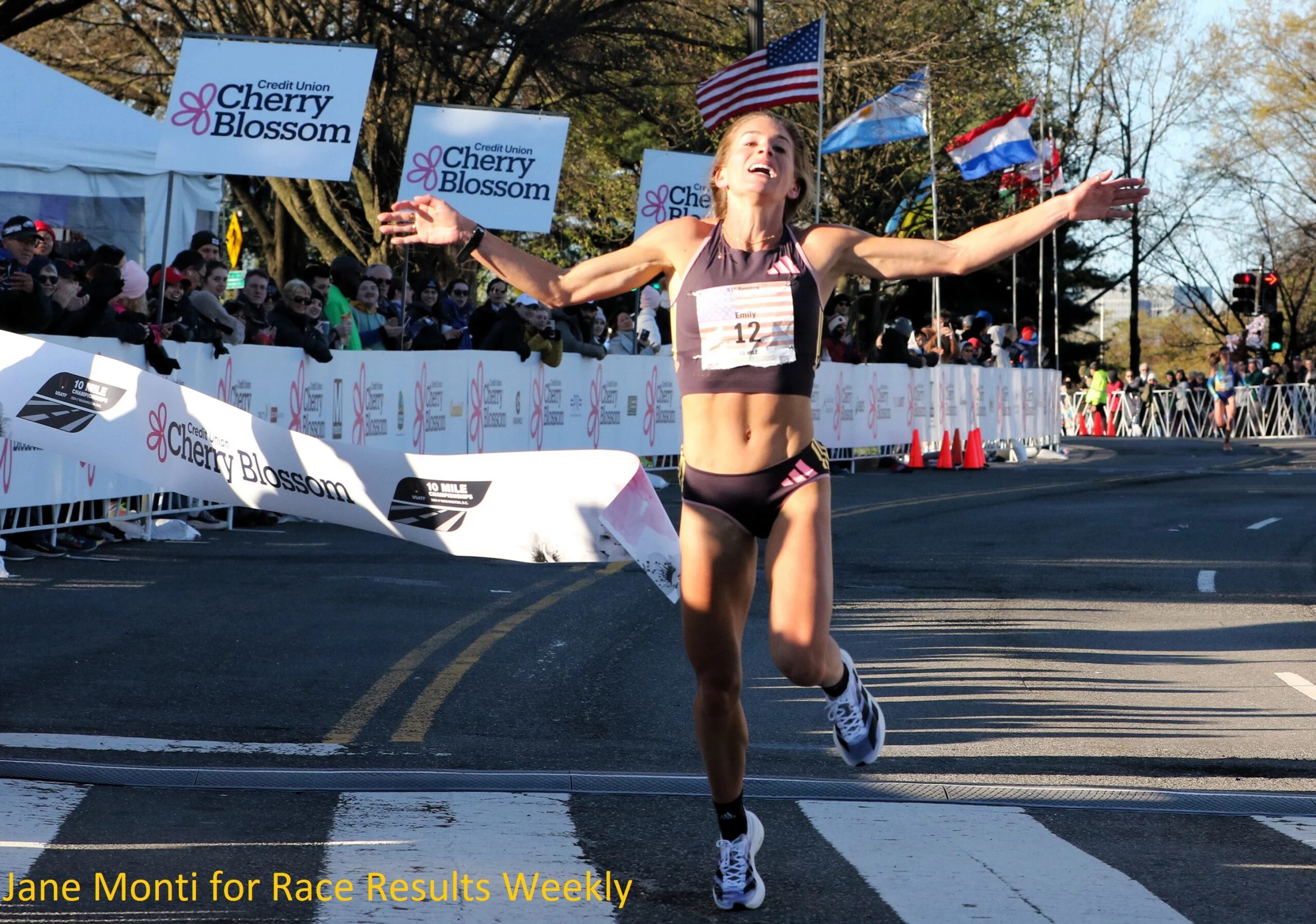
“Between 10-K and 15-K, we slowed down,” Bor continued. “We kind of wait and look at each other.”
With less than a mile to go, four men still had a chance for the win: Bor, Kiptoo, Magut and Martin. The race wouldn’t sort itself out until the final 800 meters where the course goes uphill, turns left, then goes back downhill for the finish line adjacent to the Washington Monument. Bor thought he could take the overall win, but Kiptoo had other ideas.
“The last 800 I was just kind of waiting,” said Kiptoo, who runs for Hoka Northern Arizona Elite. “I was like, everybody is making a move and I was like just good to wait until that last 600, and that’s where I knew I was going to win.”
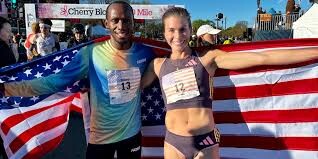
Kiptoo streaked to the finish line to take the overall title, but only had a second on Magut and two seconds on Bor in the end. On the financial front Bor was the big winner, earning $10,000 for the USATF title and another $2,000 for finishing third overall. Kiptoo earned $6,000 for the overall win plus a $1,000 bonus for running sub-46:00. Magut won $3,750 for finishing second overall and running sub-46:00 (time bonuses were only available for the first and second place finishers).
“The fitness is there,” said Bor, who will move back to the track where he hopes to make his third consecutive Olympic team in the steeplechase. “Ten miles has been good to me.”
Today’s race was bittersweet for Martin. The 34-year-old, who finished seventh at the Olympic Trials Marathon in February, ran an excellent race, breaking the national record, but still ended up second in the national championships.
“I was going for the win,” Martin told Race Results Weekly. “A mile to go I tried to take off and gap people and it didn’t work out. But, it was an awesome time.”
In the separate early-start elite women’s race, Uganda’s Sarah Chelangat repeated as overall champion in a new course record of 51:14. The 22-year-old led from gun to tape, and her time was a whopping 50 seconds faster than last year. She earned a total of $7,000: $6,000 for the win and $1,000 for breaking 52 minutes. She said that she had come to win.
“I’m happy,” said Chelangat, who represents Nike. “It is hard when you are running alone, but I’m happy because I won the race.”
Behind her, American Emily Durgin was running the race of her life. Durgin, 29, who represents adidas, moved from a chase pack of three at 10-K (31:45), where she ran with Ethiopians Kasanesh Ayenew and Tegest Ymer, to running alone by the final mile. She was too far behind Chelangat at 15-K to try for the overall win, but she kept pushing because she wasn’t sure if Rachel Smith (Hoka), the recently crowned USA 15-K champion, was catching up.
“The last mile I was more like, I hope Rachel doesn’t come from behind again,” Durgin said, referring to the USA 15-K Championships on March 2 where Durgin finished third. “At that point I was still trying to maintain a good time, and coming into this race I was like, I really want to win a national title, but I also wanted to run a fast time.”
Indeed she did. Durgin’s time of 51:26 was only three seconds slower than Keira D’Amato’s USATF record for an all-women’s race set in 2020 at a special event here in Washington during the pandemic.
“If I ended up second here today and still ran fast I was going to be happy with it,” Durgin continued. “Thankfully, I think I gapped Rachel enough so she wasn’t able to out-kick me this time.”
(04/08/2024) ⚡AMPby David Monti
Cherry Blossom Ten Mile Run
The Credit Union Cherry Blossom is known as "The Runner's Rite of Spring" in the Nation's Capital. The staging area for the event is on the Washington Monument Grounds, and the course passes in sight of all of the major Washington, DC Memorials. The event serves as a fundraiser for the Children's Miracle Network Hospitals, a consortium of 170 premier...
more...Aga breaks course record in Daegu
Ethiopia’s Ruti Aga chopped 48 seconds off the course record at the Daegu Marathon, winning the World Athletics Gold Label road race in 2:21:08 on Sunday (7).
Kenya’s Stephen Kiprop, meanwhile, won the men’s race by a comfortable 36-second margin in 2:07:04.
In the women’s race, the lead pack passed through 10km in 33:23 but by 20km, reached in 1:06:17, the front group had been reduced to just three women: Aga, Kenya’s Evaline Chirchir, and Bahrain’s Tigist Belay. Angela Tanui – the fastest woman in the field – had dropped behind by about nine seconds by this point.

The same lead trio passed through the half-way point in 1:10:00, then Aga started to make a break a few kilometres later. By 30km, which Aga passed in 1:38:50, she had a 31-second lead over Chirchir. Tanui, meanwhile, had moved up into third, 12 seconds behind her compatriot.
Aga reached 35km in 1:55:28, which suggested a finishing time comfortably inside 2:20. But the Ethiopian – who was contesting her second marathon of the year, having equalled her PB of 2:18:09 in January – then started to tire in the final few kilometres.
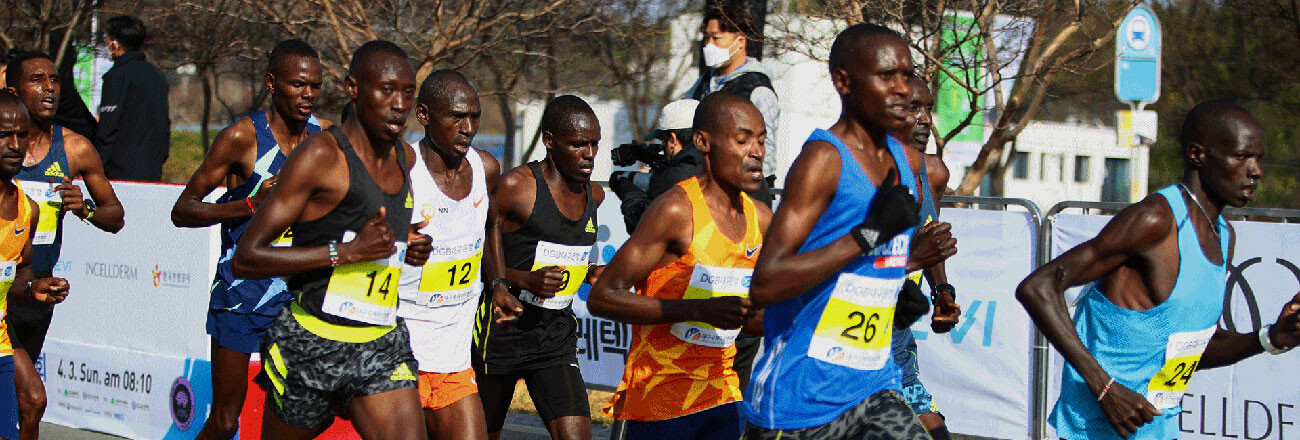
Tanui, meanwhile, was going from strength to strength and started to catch glimpses of the Ethiopian on the longer stretches. Fortunately for the tiring Aga, the lead she had built up earlier in the race provided enough of a cushion for her to maintain the lead as she entered the Daegu Stadium – venue of the 2011 World Championships – and crossed the finish line in 2:21:08, breaking the course record of 2:21:56 that had been set by Eritrea’s Nazret Weldu in 2022.
Tanui finished second in 2:21:32, then Chirchir followed 40 seconds later. Australia’s Commonwealth champion Jessica Stenson came through for fourth place in a PB of 2:24:01.
By contrast, a large lead pack remained in contention in the men’s race and it was only in the final few kilometres that the group finally split apart.
They went through the first 10km in 29:48, and 20 men were still in contention at half way, reached in 1:03:20. Even by 30km, which was passed in 1:30:19, there were 18 men in the lead pack.
But at 35km (1:45:46), Stephen Kipruto started to push the pace. The lead pack, which still comprised 14 men, started to break up, and two kilometres later there were just five men out in front.
Cherop and fellow Kenyan Kennedy Kimutai made a break at about 37km, opening up some significant distance on the few remaining opponents. But they didn’t run as a duo for long, because Cherop then managed to carve out a lead of his own with just under three kilometres remaining.
He continued to extend his lead to the end, eventually crossing the finish line in a PB of 2:07:04. Kimutai held on for second in 2:07:40 and Tanzania’s Alphonce Simbu claimed third place in 2:07:55.
Leading results
Women
1 Ruti Aga (ETH) 2:21:08
2 Angela Tanui (KEN) 2:21:32
3 Evaline Chirchir (KEN) 2:22:12
4 Jessica Stenson (AUS) 2:24:01
5 Tigist Belay (BRN) 2:24:39
6 Sandrafelis Tuei (KEN) 2:26:57
Men
1 Stephen Kiprop (KEN) 2:07:04
2 Kennedy Kimutai (KEN) 2:07:40
3 Alphonce Simbu (TAN) 2:07:55
4 Ben Chelimo (KEN) 2:08:04
5 Kaan Kigen Ozbilen (TUR) 2:08:19
6 Gilbert Kibet (KEN) 2:08:32
(04/08/2024) ⚡AMPby World Athletics
Daegu International Marathon
Daegu International Marathon brings together varied groups of people with passion for running. With a sincere hope to host a meaningful event for everyone, Daegu International Marathon will amplify the love of running for all and promote a healthy life through running. On behalf of 2.6 million Daegu citizens, we welcome all of you and hope your race in Daegu...
more...Marathon debutante Fikir leads Ethiopian double in Paris
Mestawut Fikir excelled on her debut at the distance by winning the Schneider Electric Paris Marathon in 2:20:45, while compatriot Mulugeta Uma made it an Ethiopian double by taking the men’s title in 2:05:33 at the World Athletics Elite Label road race on Sunday (7).
In a close finish, Fikir won by three seconds from fellow Ethiopian Enatnesh Tirusew, who was also making her marathon debut. Kenya’s Vivian Cheruiyot, the 2016 Olympic 5000m champion and four-time world champion on the track, was third in 2:21:46 in what was the 40-year-old’s first marathon in five years.
Uma won the men’s race by 15 seconds from Kenya’s Titus Kipruto. Elisha Rotich, the course record-holder and 2021 winner, was third this time in 2:06:54.
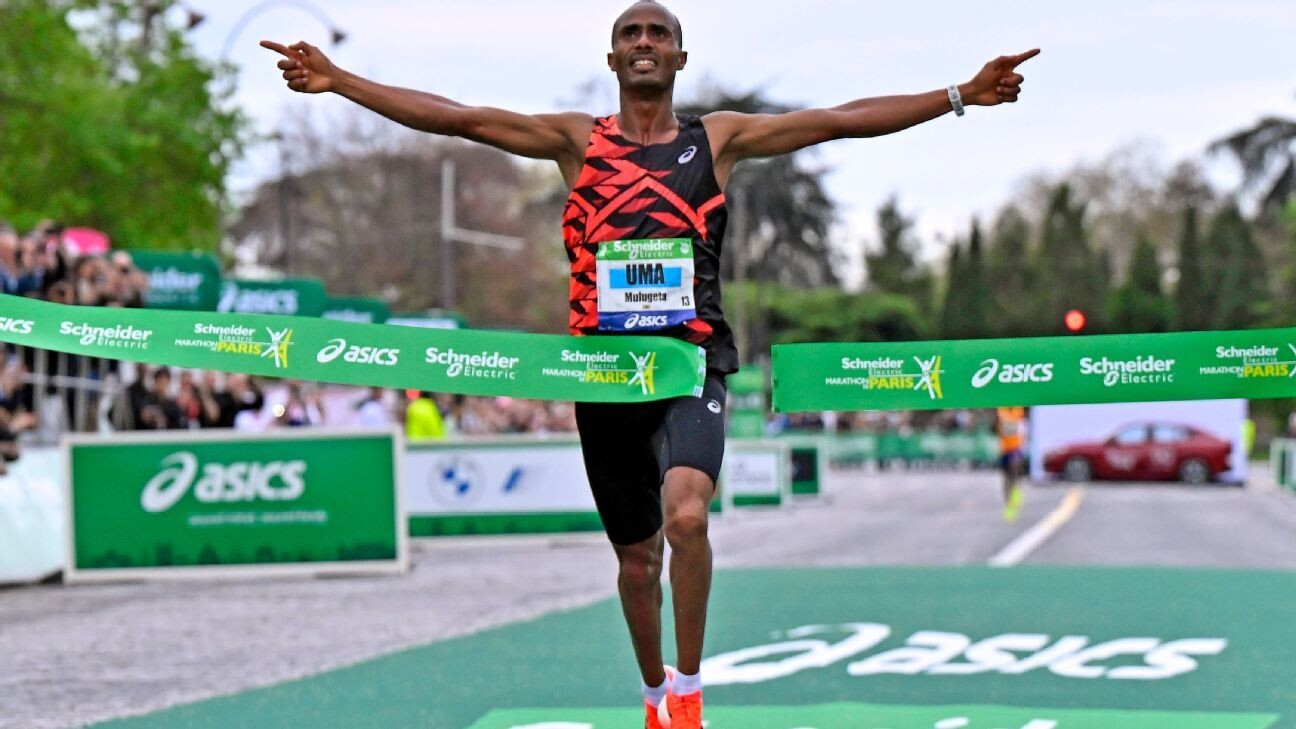
A pack of about 10 women ran together during the early stages, with Ethiopia’s Rahma Tusa leading them through 10km in 33:23. That pack had reduced to six women by the time they reached half way in 1:10:11, with Tusa still leading from Tirusew and Fikir while Cheruiyot bided her time at the back of the pack.
By 30km, Cheruiyot had fallen about 20 seconds behind the leaders with Tusa still pushing the pace out in front. But the long-time leader started to fade a few kilometers later as Fikir and Tirusew made a break.
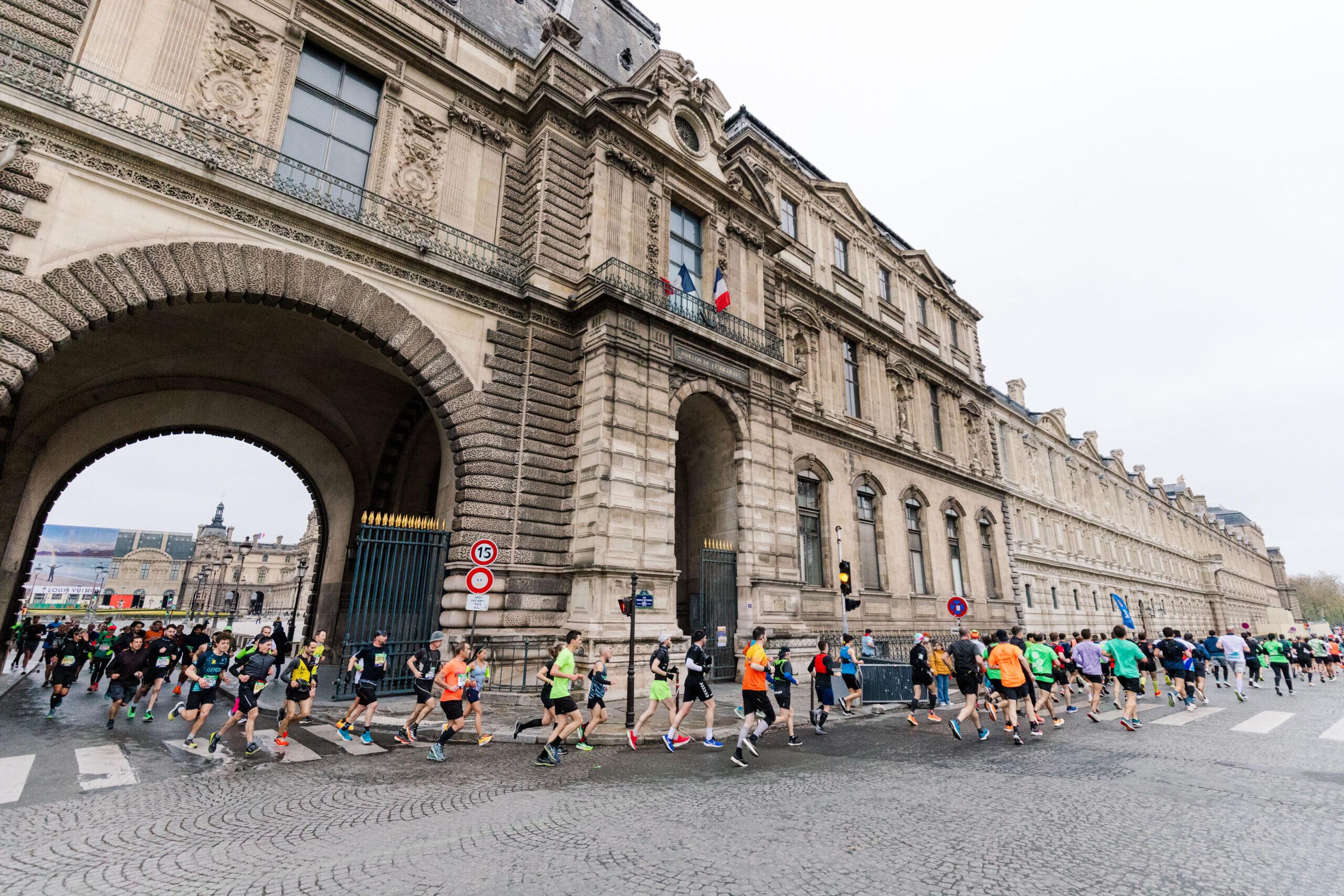
The Ethiopian duo continued to run side by side through the closing kilometers while Cheruiyot rallied back and made her way up into third place. In the final push, Fikir broke away from her compatriot to win in 2;20:45, while Tirusew claimed second place in 2:20:48. Cheruiyot crossed the line 58 seconds later.
The men’s race played out in similar fashion, the large lead pack going through 10km in 29:08 and half way in 1:02:09, at which point they were on track to challenge Rotich’s course record of 2:04:21.
The pack became strung out over the course of the next 10 kilometers with Kipruto leading them through 30km in 1:28:27, closing followed by Uma and his fellow Ethiopians Deso Gelmisa and Dejane Megersa.
Kipruto continued to lead through 35km, at which point he had just three others for company: Gelmisa, Uma and Kenya’s Bethwell Kipkemboi. Uma then started to pick up the pace and overtook Kipruto with just a few kilometers to go. Further back, Rotich was making his way through the field.
Uma continued to extend his lead over Kipruto in the closing stages and he went on to win in a PB of 2:05:33, finishing 15 seconds ahead of Kipruto. Rotich passed a fading Kipkemboi to take third in 2:06:54.
(04/08/2024) ⚡AMPby World Athletics
Schneider Electric Paris Marathon
The Schneider Electric Marathon de Paris offers a unique opportunity to make the city yours by participating in one of the most prestigious races over the legendary 42.195 km distance. The Schneider Electric Marathon de Paris is now one of the biggest marathons in the world, as much for the size of its field as the performances of its runners....
more...Kenyan Titus Kimutai Kipkosgei won the 2024 Wizz Air Milano Marathon
The Kenyan - with his new personal best - won the finish line in Piazza del Duomo. In the women's race, Ethiopian Tigist Memuye Gebeyahu won.
Kenyan Titus Kimutai Kipkosgei won the 2024 Wizz Air Milano Marathon . With a time of 2h07'12" he crossed the finish line in Piazza del Duomo first. It is also his new personal best (the previous one was 2h07'46").
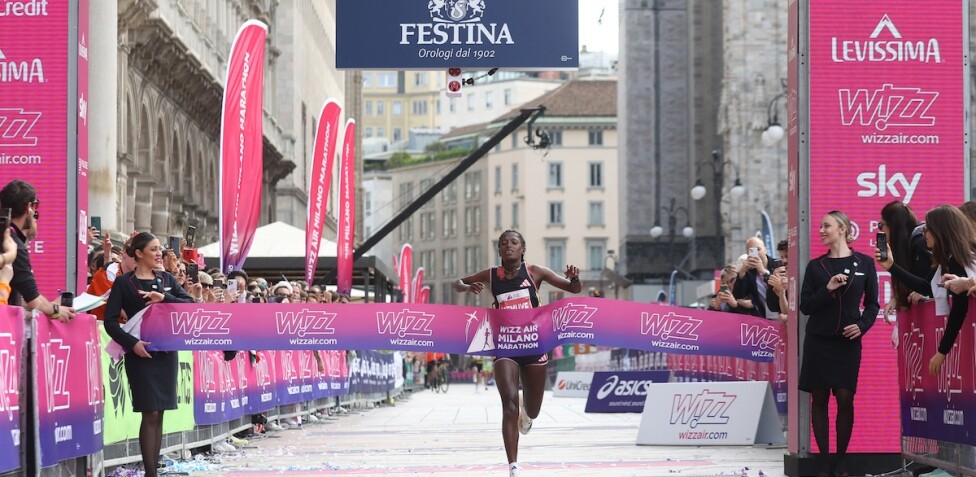
Raymond Kipchumba Choge and defending champion Andrew Rotich Kwemoi complete the podium. In the women's race , Ethiopian Tigist Memuye Gebeyahu won in 2h26'32". Second was Jepchirchir in 2h27'13". Third was Fantu Gelasa with a time of 02h30'52".
In the men's race, the pace is fast from the start with a passage of 29:56 at 10km for a group of a dozen athletes, then 1h03:43 at half. Shortly after the 30th km (1h30:51) further selection with a quartet on the run: Kwemoi, Kipkosgei, Choge and Isaac Kipkemboi Too (then seventh in 2h11:16). The challenge for the victory lights up at the 34th km with the explosive action of Kwemoi but shortly before the 38th km he is caught by Kipkosgei who takes the reins of the race and takes off. Towards the last kilometre, the Ugandan pays for the attack and is also overtaken by Choge. At the foot of the podium were the Ethiopians Gerba Dibaba (2h08:25) and Barecha Tolosa Geleto (2h08:27). “I am very happy with my test - comments Kipkosgei - and with having obtained the staff in such a beautiful city. I preferred to run at my own pace, I was very careful to manage my strength. When I reached the lead of the race I charged up and found the energy for the final sprint.
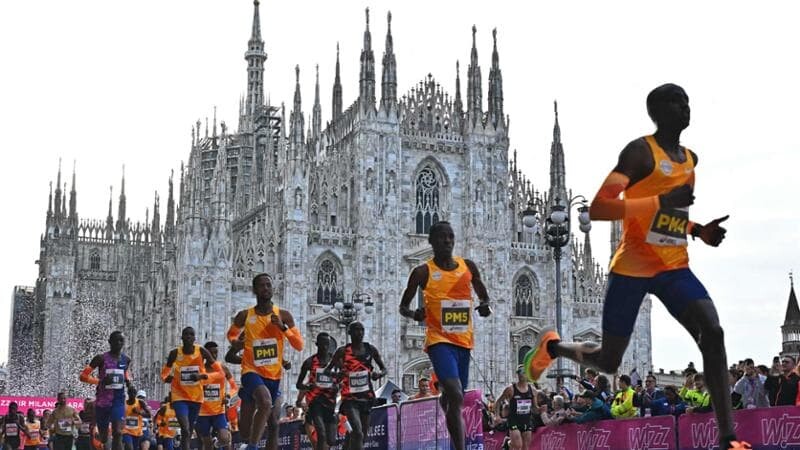
Thanks Milan also for all the support along the way." More than 6900 reached the finish line, supported by 15 "cheering points", three of which were animated by Milanese clubs present and noisy with many young athletes ( Atletica Meneghina , Milano Atletica and Aspes ).
The initial protagonist of the women's race is the Ethiopian Gelasa who passes the half way mark in 1h10:34 and the 30th km in 1h40:59, however the pace turns out to be too fast with the decisive comeback of Memuye, leader of the race, and also of Jepchirchir who takes second place. Fourth was the Australian Sarah Klein (2h32:55), fifth the Ethiopian Tigist Bikila (2h32:59). “I no longer expected to be able to regain my head - the words of the winner Memuye - but I believed in it until the end. For me it is a great satisfaction, because Milan marks my return to racing after a long injury. In Ethiopia I train with the world record holder Tigist Assefa and the world champion Amane Beriso, both of whom encouraged me before leaving for Italy". First of the Italians was Giovanni Vanini (Cardarchitettura), fifteenth in 2h25:08, and in the women's category Nadine De La Cruz Aguirre (Gs Il Fiorino, 2h52:08) placed eighth : in a Lombard key the top is the double 15th place with Vanini and Chiara Milanesi (Runners Bergamo), 2h58:44 among women. Among the many people who experienced a Sunday dedicated to solidarity connected to the Boris Becker relay for Fondazione Laureus Italia, Silvia Salis and Paolo Kessisoglu: Federica Curiazzi, Beatrice Foresti, Giuseppe Dino and Daniele Breda), Elisa Di Francisca for WeWorld, Massimo Ambrosini, Rachele Sangiuliano and DJ Ringo for Fondazione Italiana Diabete, Pietro Arese and Andrea Lalli for Fiamme Gialle, Juliana Moreira for Magical Cleme. A Sunday also animated by the Levissima Family Run, with over 8 thousand runners including children and adults of all ages, and preceded by the Milano Running Festival presented by Sky, 40 thousand attendees from Thursday to Saturday.
(04/08/2024) ⚡AMPMilano Marathon
Passion is what allows us to go beyond our limits. It’s what makes us run when our heath is bursting in our chest, it’s whats makes our legs move even if they’re worn out. It’s passion against sacrifice, and the winner will be declared though hard training, hearth and concentration. Milano Marathon has been presented in the futuristic Generali Tower,...
more...Edwin Kurgat, Laura Galvan defend Carlsbad 5000 championships on race’s new course
Reigning champions Edwin Kurgat of Kenya and Laura Galvan of Mexico successfully defended their titles in the Men’s Elite and Women’s Elite races to cap Sunday’s Carlsbad 5000.
The annual road race in Carlsbad Village, with events throughout the day for runners of different ages and skill levels, featured an updated course that benefited from the picturesque weather.
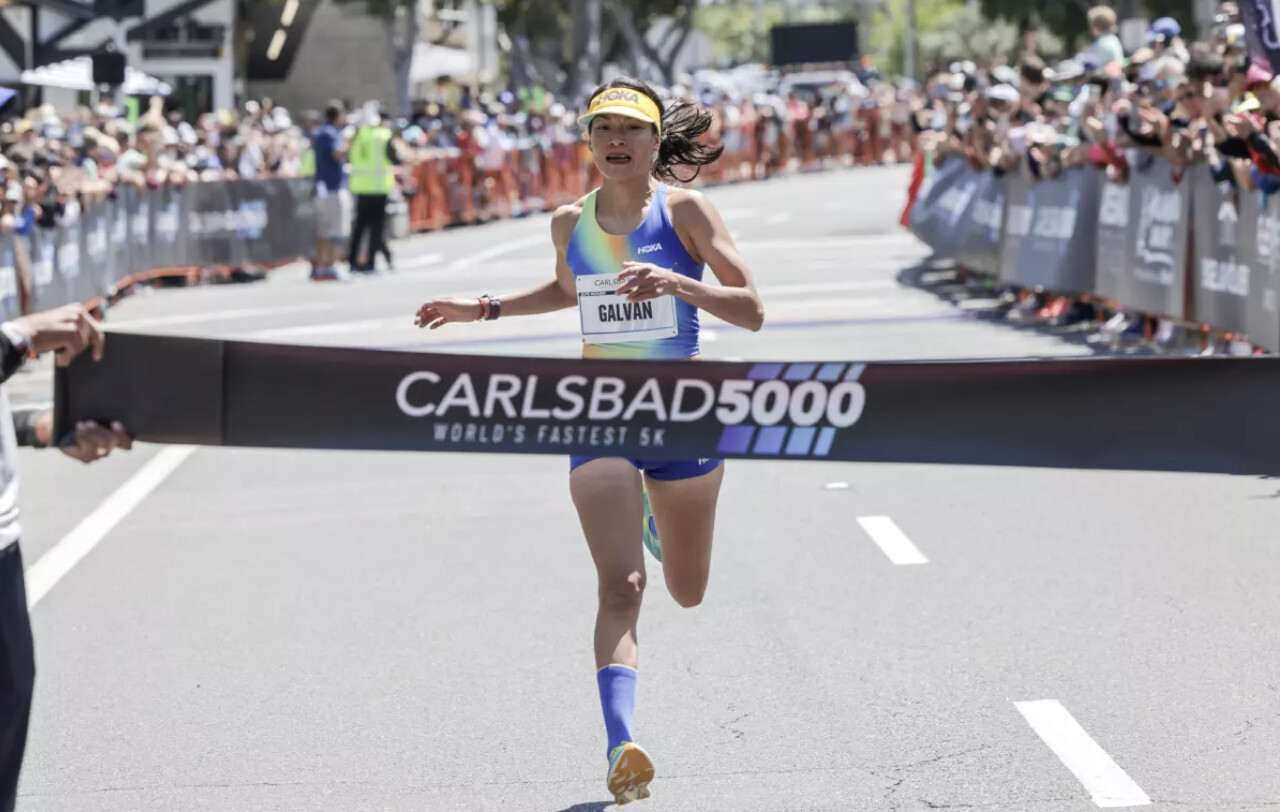

Under blue skies with only wispy clouds, competitors ran parallel to the coastline on Carlsbad Boulevard. They were cheered on both by spectators there to take in the “World’s Fastest 5K” and the beachgoers who became impromptu fans.“The new course is way fun,” said Kurgat. “You don’t have to think about much, so I like it better than last (year’s) course.”
Kurgat’s appreciation for the course manifested in a final time of 13:46.11. His 4:26 pace edged him ahead of New Zealand’s Matt Baxter, who finished second at 13:47.74.
“I felt surprisingly good throughout the entire race,” said Baxter, who ran a 4:27 pace. “I just couldn’t quite hold onto Edwin as we came up that last hill … When I saw him in sights coming through his home stretch, I was giving it everything, because I knew if I was even close to Edwin, it was going to be a day I could be happy with.”
With a mile remaining and the runners coming up the slope, the 2019 NCAA cross-country champion from Iowa State Kurgat gained separation.
Kurgat and Baxter pulled away from American Ben Veatch — who, at Indiana University set the USATF American Junior indoor 5K record with a since-broken 13:57.27. Veatch finished third on Sunday with a time of 14:09.39.
His repeat first-place performance at the Carlsbad 5000 continued an impressive 2024 for Kurgat, who in January ran a 12:57.52 in the indoor 5,000 meters at the John Thomas Terrier Classic in Boston.
An Olympic-qualifying time to his credit, Kurgat’s attention for 2024 turns to Paris and the Oymmpics.
“It’s a big year, Olympic year. I wanted to come here, have some fun, take a quick break and I wanted to use (Carlsbad) as part of my training,” Kurgat said.Likewise, fellow repeat Carlsbad 5000 champion Galvan ran an Olympic-qualifying time during the World Championships last August in Budapest, Hungary.
A native of La Sauceda, Guanajuato, Galvan will represent Mexico in Paris for the 5,000 meters. She has designs on qualifying for the 10,000, as well.
Ahead of competing for the nation this summer, onlookers at the Carlsbad 5000 waved Mexican flags for Galvan on Sunday.
“I really like the atmosphere,” she said. “It was crazier than last year because last year, we had many turns (on the course) ... The crowd was really, really amazing.”An enthusiastic crowd made for a welcoming environment to Galvan amid the intensity of Olympic preparations.
“Stress builds up. Coming here to a race like this makes it fun,” Galvan said. “I said, ‘If I win, great. If I don’t, it’s fine.’ Because what I wanted to do as much as winning was having a good race.”Galvan accomplished her goal of running a strong race, and winning again came with that.
She finished with a time of 15:19, 20 seconds ahead of second-place finisher, Marissa Howard. Carrie Verdon came in third at 15:49.
Each champion’s successful defense ahead of their respective pursuits of Olympic success provided fitting punctuation to an all-around idyllic spring North County day.
San Diego running legend Meb Keflezighi, a part-owner of the race, summed it up this way:
“Great turnout from the crowd, great turnout from the participants and perfect weather.”
(04/07/2024) ⚡AMP
by Kyle Kensing
Russ Cook (aka the Hardest Geezer) has just become the first person to run the entire length of Africa
Russell Cook, the man nicknamed "Hardest Geezer", has successfully run the full length of Africa, crossing the finish line in Tunisia after 352 days.
Before he set off on the mammoth challenge to run the entire length of Africa, he said he hoped to look back at his life and have no regrets.
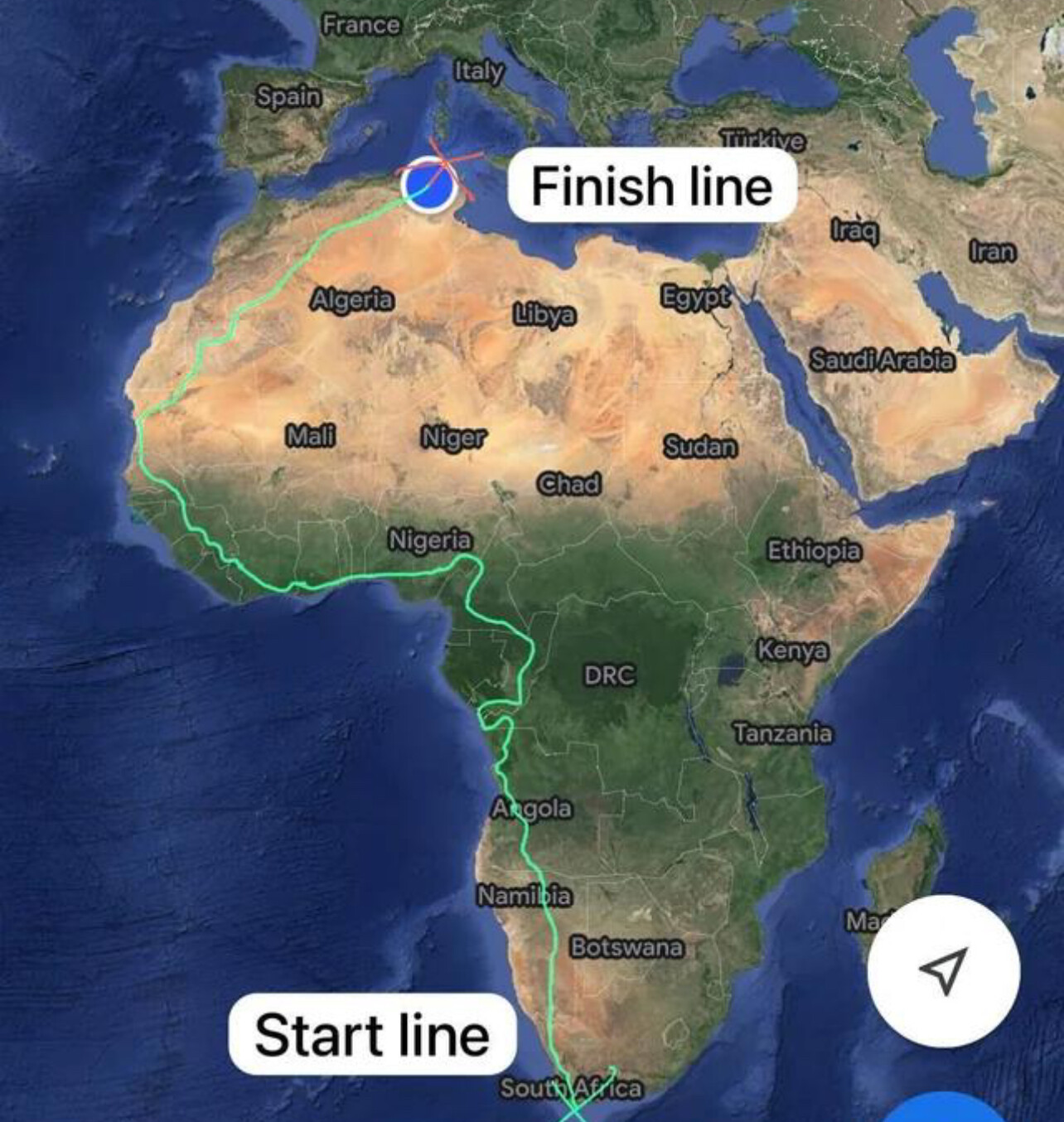
The 27-year-old from Worthing, West Sussex, said he had struggled with his mental health, gambling and drinking, and wanted to "make a difference".
After running through 16 countries, he has raised in excess of £700,000 for charity and has completed his final run.
As he crossed the finish line at about 16:40 BST in Ras Angela, Tunisia, Mr Cook was greeted by a shouting crowd, with many chanting "geezer".
"I'm pretty tired," he told reporters and in a post on X, formerly known as Twitter.
Mr Cook told those who had been following his journey to the finish line: "Mission completed."
Mr Cook initially planned to run 360 marathons in 240 days, with no rest days
A lot has changed since Mr Cook set off from home in February 2023.
His initial plan to run from Tunisia to South Africa, completing 360 marathons in 240 days with no rest days, was soon halted by a lack of an Algerian visa - a hindrance that would later resurface.
But after a last-minute switch, he set off on foot from South Africa's most southerly point on 22 April - a journey that would take him through cities, rainforests, mountains and the Sahara Desert.
Mr Cook and his team had cameras, phones, cash and passports stolen in Angola
After ticking off South Africa and Namibia in 50 days, Mr Cook encountered his first major setback - an armed robbery.
He and his support team had cameras, phones, cash, passports and visas stolen in Angola on 24 June.

However, as with many stumbling blocks he would face throughout the challenge, the ultrarunner vowed to soldier on.
Health scares
Consistently running more than a marathon a day began to take its toll.
After some minor tummy troubles in the early weeks, he was forced to take his first rest day after doctors found blood and protein in his urine on day 45.
But it was recurring back pain that caused the most concern.
On day 200, Mr Cook was forced to reduce his mileage and intensity at the request of a doctor in Nigeria - even missing consecutive days on day 205 and 206.
But in true Hardest Geezer style, he was not to be stopped.
He said: "I took a couple of days to get some scans. No bone damage so figured the only option left was to stop mincing about like a little weasel, get the strongest painkillers available and zombie stomp road again."
Visa issues
After overcoming everything in his path, it was a single piece of paper - an Algerian visa - that cast doubt over the entire challenge on day 278.
Mr Cook was forced to halt while he waited to find out his fate as to whether he could secure permission to cross the border into Algeria from Mauritania.
"If we don't get the visas, then it is game over," he said at the time.
His public appeal video on X, formerly Twitter, was seen by 11 million people - even catching the attention of the site's owner Elon Musk, as well as MPs Tim Loughton and Alexander Stafford and the Home Office.
The increased attention on the challenge eventually paid off as the UK's Algerian embassy announced he would receive a courtesy visa on the spot.
The final stretch
After the setbacks, all that separated Mr Cook and the finish line was the small task of the Sahara Desert.
The tarmac roads ran out, as did the signal and any signs of civilisation. But an end date was set: 7 April, 2024.
Ramping up his mileage to make up for lost time, Mr Cook made the decision to run through the night due to the intense daytime heat and sandstorms.
Party time
Mr Cook finished running the length of Africa on 7 April
Months turned into weeks, and weeks turned into days.
Finally, on Sunday afternoon April 7, 2024, Mr Cook laced his trainers one last time - at least for now - as he set off for Tunisia's most northerly point.
Joined by supporters from across the world for the final marathon, Mr Cook completed the challenge.
The celebrations will go long into the night - helped by a finishing party performance by British punk band Soft Play, formerly Slaves, at a hotel in Bizerte.
And the Hardest Geezer will finally get his hands on the one thing he has been craving since day one - a strawberry daiquiri.
(04/07/2024) ⚡AMPby Christian Fuller BBC News, South East
Boston Marathon dog Spencer honoured with statue on race route
In a heartwarming tribute to the “official dog” of the Boston Marathon, a statue of Spencer the golden retriever was unveiled in Ashland, Mass., on the weekend, CBS News reported. Spencer’s presence along the marathon route was legendary as he stood for hours, rain or shine, to bring joy to thousands of passing runners.
The beloved furry ambassador died of cancer in 2023 after a three-year battle, with his sister, Penny, dying only days later. In a 2022 ceremony, the Boston Athletic Association (B.A.A.) named Spencer the marathon’s official dog; they unveiled a portrait of Spencer in 2023 before he died.

Spencer’s story goes beyond being a marathon spectator–he is also a symbol of resilience and compassion. From carrying the Boston Strong flag after the 2013 bombings to excelling in his role as an official therapy dog, Spencer offered encouragement to many.”We had lines of people when Spencer was with us, lines of people,” Spencer’s owner, Rich Powers, told CBS News. “Not talking like three or four people, it was like 20 people deep waiting to take a picture. They’re stopping the marathon to take a picture with Spencer, and he loved every second of it!”
The idea to immortalize Spencer with a statue came from runners and community members. After some local fundraising, sculptor Jeff Buccacio meticulously crafted a tribute that captures Spencer’s essence. Though denied a place on town property, Spencer’s statue found a home on private land, graciously offered by local residents, that overlooks the route where Spencer once stood. Powers is now training two pups, called Jimmy and Jade, to step into Spencer’s shoes and carry on his tradition along the sidelines of the race every April. “Thank you to all that helped to make this happy,” Powers said at the statue reveal. “Spencer is back on the marathon route.”
(04/07/2024) ⚡AMPby Running Magazine
Kipkorir and Kebeda win a record Madrid Half Marathon
The Kenyan and the Ethiopian claimed victory in the 23rd edition of the event, marked by the record number of participants with 21,000 runners
Kipkorir and Ethiopian Aberash Shilima Kebeda were awarded victory at the twenty-third edition of the Madrid Movistar Half Marathon, marked by the participant record with 21,000 runners and the presence as godparents of Portuguese Rosa Mota and Ethiopian Haile Gebrselassie
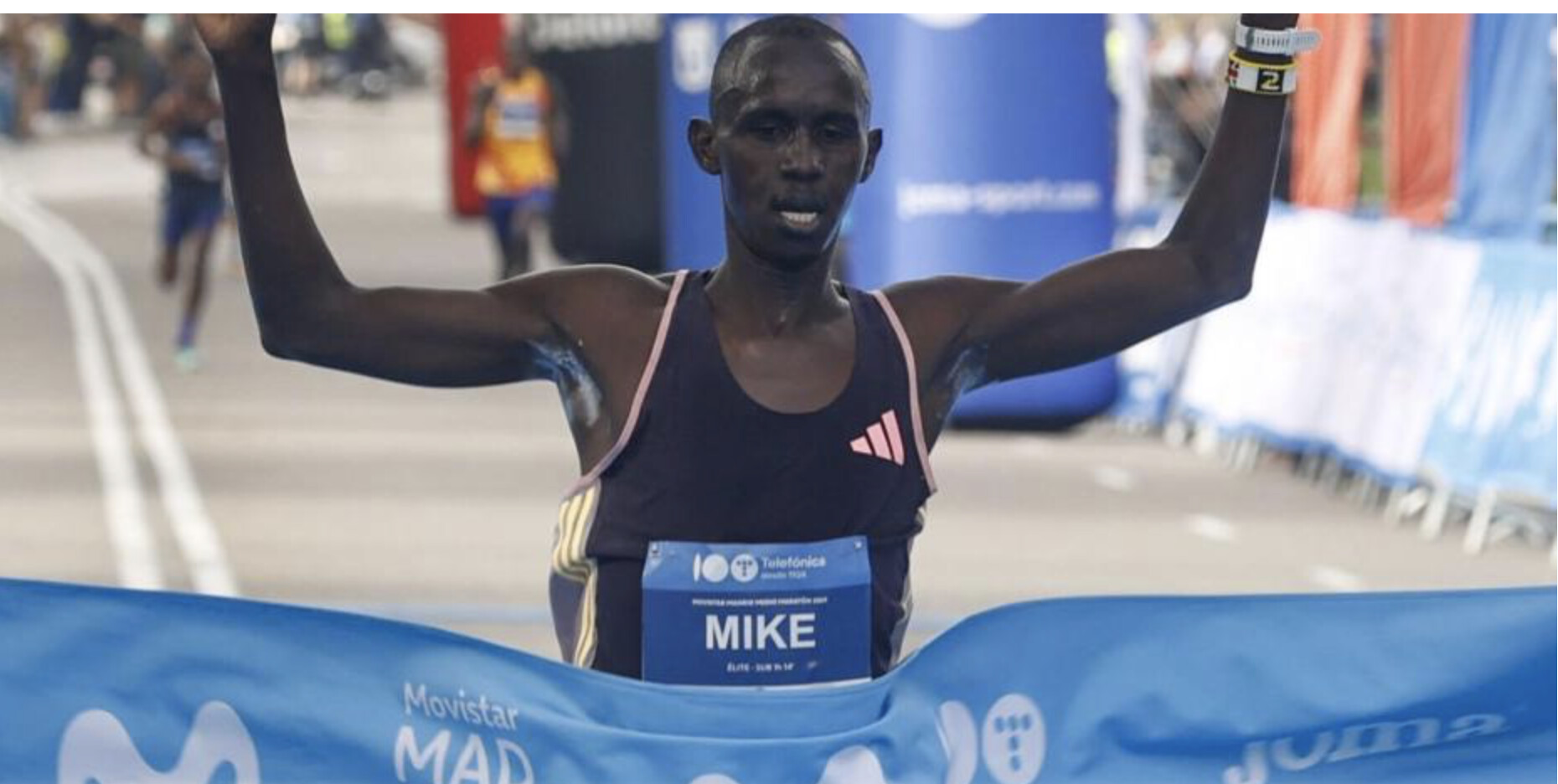
The Kenyan Mike Kipkorir and the Ethiopian Kikkorir took the victory in the men's category after a final attack that found no response from their pursuers, reaching the finish line in 1h01:07, thirteen seconds less than the Ugandan Ezekiel Mutai.
The first Spaniard at the finish line was Ayad Lamdassem, tenth at the finish line, with 1h06:45.
In the women's category, the Ethiopian Aberash Shilima Kebeda dominated the test quite well to take the victory with 1h08:31, almost a minute and a half ahead of her pursuers, the Kenyans Beatrice Nyaboke Begi and Vivian Jerotich Kosgei, second and third, respectively.
Clara Simal from Madrid, from the Marathon Sports Group, organizer of the event, was once again the first Spanish finisher, also repeating the ninth place overall that she already achieved in 2023.
ProFuturo Career
The ProFuturo 5km Race was also held parallel to the Movistar Madrid Half Marathon. This solidarity test was born in 2016 with a clear objective: running for education.
The victory went to Claudia Moreno (20:15) in the women's category and to Sergio Salinero (17:20) in the men's category
The Paralympic athlete Lorenzo Albaladejo, considered the best athlete with cerebral palsy in the history of Spain in speed events, also completed the test, as did Rosa Mota, the Portuguese marathon runner, holder of the triple crown with an Olympic, World Cup and European marathon.
(04/07/2024) ⚡AMPMedio Maraton de Madrid
Live running as ever. There is no insurmountable barrier in the Half Marathon of Madrid! The most spectacular and well-known Half Marathon is back. Lace up your running shoes and test yourself against the clock around the city centre. Dream with your goals and make them come true! ...
more...Another Kenyan clean sweep at Absa Gqeberha 10K
Another race, another Kenyan clean sweep! What’s new as the East Africans continue to show their dominance in road running circles with displays that leave their opponents wondering just what it is they should do to catch up?
Nothing really, except that some South African runners were left lamenting the presence of their adversaries from the east despite their having earlier welcomed it as good for competition.
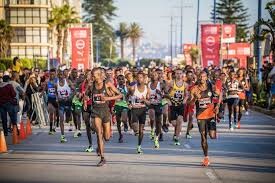
Vincent Largat and Diana Chepkorir reigned supreme in the men and women’s races respectively to be crowned champions of the Absa Run Your City Gqeberha 10K in windy conditions on Sunday morning.
It was a result similar to the one from the inaugural race in the Friendly City last year in which the Kenyan duo of Daniel Ebenyo and Fridah Nedina reigned victorious.
While Chepkorir started the race as favourite given her stellar PB of 29:56 ran in Castellon, Spain in February, Largat came out of left field to stun a confident group of South African runners who were out to run fast times.
Chepkorir ran home in a fairly good time of 31:15 ahead of Nancy Sang (31:39) and Ethiopian Selam Gebre (31:42) – with the three runners swelling their bank accounts by R30 000, R25 000 and R20 000 respectively.
The first South African woman home was Glenrose Xaba who finished way back in sixth place in a time of 33:04.Ahead of her in fifth place was Maxed elite Running Club’s Blandina Makatisi who broke Lesotho’s national record by a mere second in running a 32:05.
Such had been the low profile kept by Largat that he was not part of the elite men’s pre-race conference on Friday – so much so that the locals lamented the absence of the east Africans.
They did not know what hit them though as Largat pulled the proverbial rug from underneath their feat in a race that was tight until about the sixth kilometre when the top four – Largat, Elroy Gelant, Precious Mashele and Thabang Mosiako – broke away from the rest.
Fast finish
Largat proved to have a better kick at the end to breast the finish tape in a time of 28:01. National record holder Mashele appeared set for yet another runners-up berth as he did last year when he set the 27:35 mark only to be pipped at the finish by his Boxer Athletic Club teammate Gelant – the duo finishing just two seconds apart in 28:17 and 28:19.
Local boy Mosiako, who had been billed as the favourite, was fourth in 28:30 and surprisingly lamented the windy conditions as not being conducive to a good run. And to think there had been talk of him being at an advantage given he knows the route and is used to the conditions of his homeground.
The ‘slow’ race ensured that none of the local runners got to bank any of the incentives put aside for them for either breaking the national record or dipping under particular fast times.
All is not lost though, with the series still having four more races to go. Next up is the Run Your City Cape Town 10K on Sunday, May 12.
(04/07/2024) ⚡AMPGqeberha 10K
The Absa RUN YOUR CITY GQEBERHA 10K will treat all runners, elite and social, to a fantastic on route experience from start to finish! Boasting an exciting route that incorporates iconic landmarks and lively on route entertainment compliments of local entertainers and performance groups, runners (and walkers) can expect to see world class performances in the city that is well...
more...Portuguese kids 11 and under are not allowed to run a mile race in their own country and Bob Anderson feels this rule should be updated
"It is not fair that kids under the age 12 can not race a mile in Portugal nor kids under 18 can not race a 10k. These out dated rules need to be updated," says Bob Anderson who is setting up a KATA running retreat in central Portugal opening in June. In 2021 he opened his first KATA Running Retreat just 45 minutes outside of Nairobi Kenya. Bob posted this on FB:
As some of you might know, we are setting up our second KATA Running Retreat in Central Portugal. We are in a small village called Monforte da Beira. There are only 310 people in our village. It is a very cool village with cobblestone streets, olive and cork trees nearby and miles of roads and trails for running, hiking and walking.
We bought our Anderson Manor House Feb 1 of 2024. It is an amazing three story place of 15,000 square feet with another 12,000 feet of out buildings and caves plus two acres of land with olive, fig, orange trees and a big area of land for our garden and farm animals. We want to be as sustainable as possible like we are in Kenya and produce at least 50% of our food.
This is going to be our base in Europe for us personally and the location of our second KATA Running Retreat. We are welcoming our first guests in June.
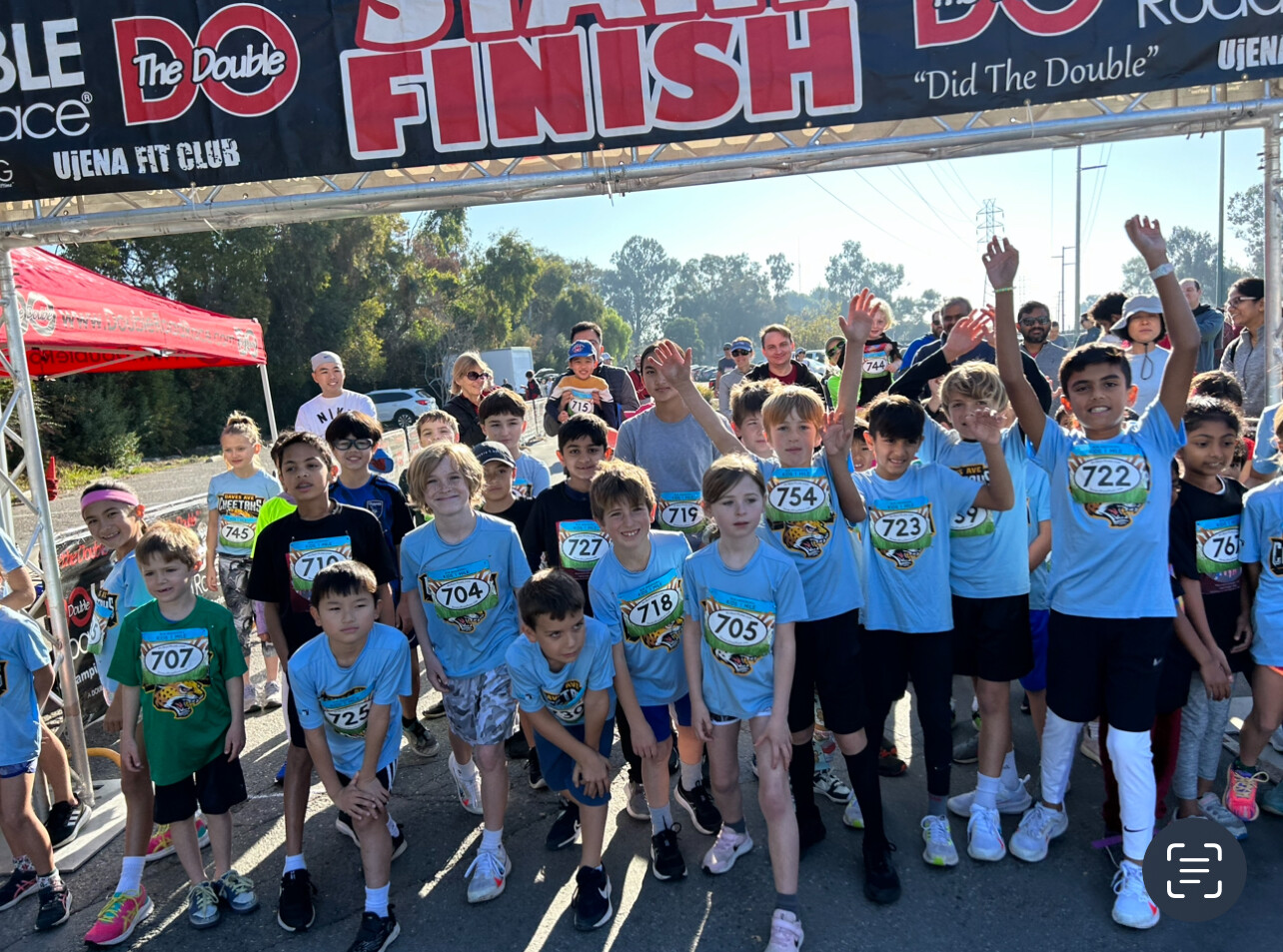
KATA (Kenyan Athletic Training Avademy) Running Retreat Kenya officially opened in Sept 2021. We currently have 22 Kenyan athletes living, eating and training with us. We have eight rooms for guests and already we have had bookings from England, France, Poland, New Zealand and the US.
Our training program is Train The Kenyan Way. We currently have five accredited AK coaches on staff. Already our top KATA runners are running world class times. Peter, one of our top runners just recently clocked 27:54 for a 10k race in the US. We also stage kids races at KATA. Kids of all ages. (Third photo)
Anyway, things are going well for us and we look forward to develope our second location in Portugal.
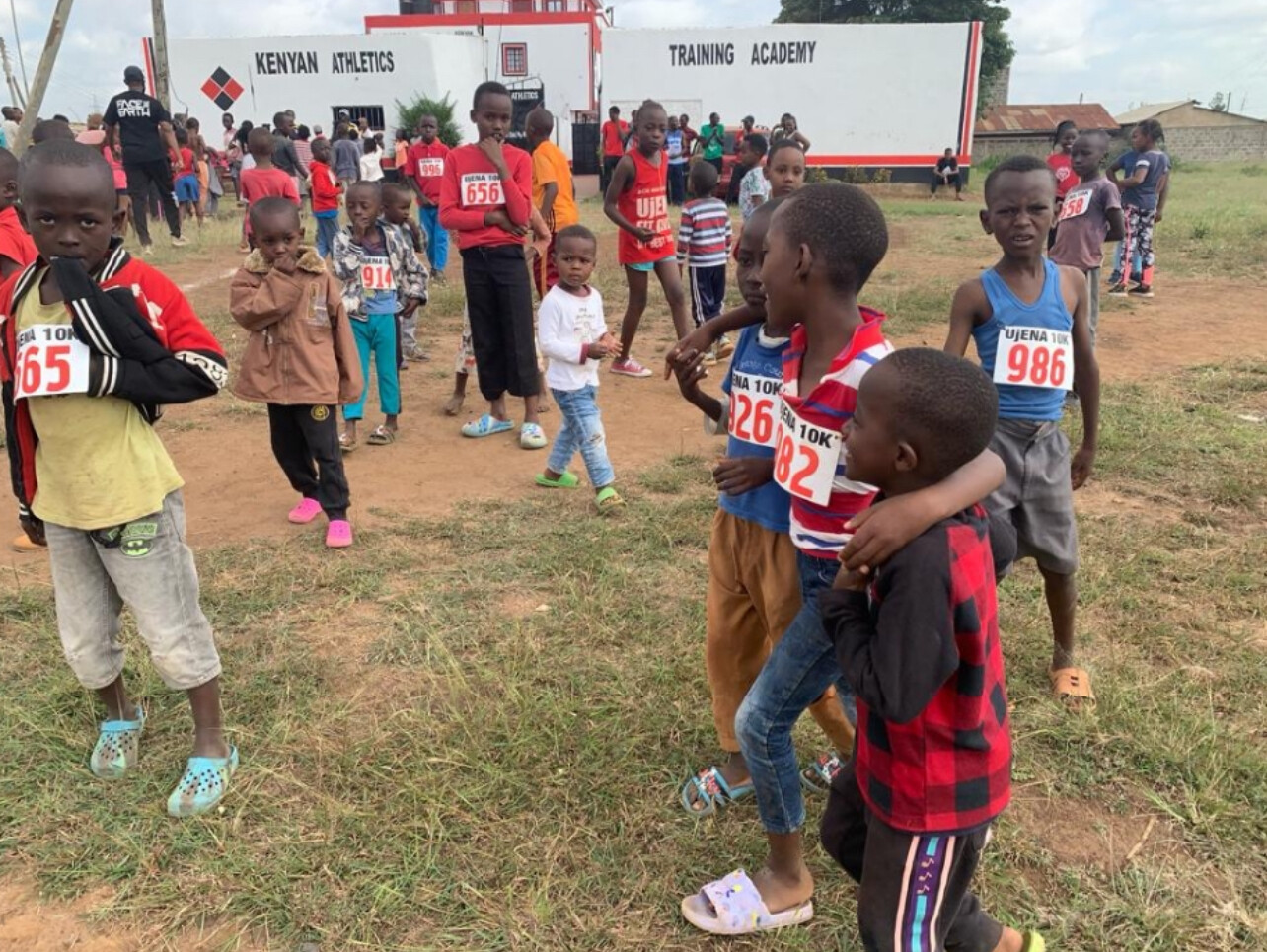
One thing we do monthly is a time trial plus we regularly stage races. Our Double Road Race Federation company founded in 2010 is the owner of these projects. We stage three races in Northern California annually attracting nearly 1500 runners as well.
One of the events we have been doing since 2010 is the Bob Anderson Kids mile. It is an event for kids 13 and under. In Palo Alto, California last December we had over 70 kids run our mile, some as young as 2. We let their parents decide if their child is capable of running (or walking) a mile.
Each of our kids get a medal, a t-shirt and a chance to win a raffle prize. We also give out a special medal for each winner for their age. 2-3-4-5 and so on. The kids love our event and we have had over one thousand kids participate over the years. There has never been a problem.
Let’s get back to the point of this post. To celebrate the opening of our new retreat in Portugal I asked the Mayor of our village if we could stage a race in conjunction with their summer festival in June. It would be Monforte da Beira first running race ever. The mayor thought it was a good idea and we started things rolling for our June 23rd event. Besides the 10k we also would do a 3k hike/walk and our Bob Anderson kids mile (for kids 13 and under).
So I hired a race director Nuno. He said he could handle everything. I did not know at the time that he had never put on a race before. He said he was very connected to the running scene since he had been running for like 15 or more years.
Things were moving along fairly well until April 5. After paying him for a month he informed me that only kids 12-13 could run our mile race and no one under 18 could run our 10k race.
I told him this was backward. Maybe it was too strong of a word but it reminded me of the time in the US where women were not allowed to run over a half mile and certainly not a marathon.
I mention that in the US we have thousands of kids under the age of 12 running one mile races and beyond. Plus even more kids under 18 running 10k and beyond.
I found this story from September 2023,
“Olivia Hawes of Blacksburg (USA) holds world records for running and when she crossed the finish line last week for a 6.15K in Virginia Beach, she topped 200 total miles in her young career. She has run more than 20 5Ks in nine different states and has a goal to run one in all 50 states. The unbelievable fact is that Hawes is only two years old.
She has the fastest mile and most 5ks for a 1-and 2-years old along with being the youngest and second youngest competitor in the VA Commonwealth Games’ 33-year history.” (First photo)
Now this is an extreme example. Two is young but there is even more examples of kids not only completing a mile or more race but loving every minute. My grand kids ran races at age 4 and loved doing so. I started running races at age 15 way back when and at 76 I still love running
According to Nuno this is the rules of the Portugal Athletics Federation. And since he “loves his country” he has to follow the rules. Sorry but these rules are just not fair for kids under 18 in my opinion,
So I told Nuno that I can’t endorse these rules. The Bob Anderson kids mile should be for all kids 13 and under. Nuno then said we have to follow the rules of Portugal.
I didn’t agree and even suggested not even doing a kids race as a compromise. But he did not want to listen to anything I was saying. So he resigned not giving any notice. Right now I have taken over the duties of race director of our June 23 event. I simply could not endorse this rule. We are new to portugal but certainly not new to running.
(04/06/2024) ⚡AMPby Bob Anderson
Rotich spearheads Kenyan quest at Paris Marathon on Sunday
Kenyan marathoners face a stern test at the Paris Marathon on Sunday as Elisha Rotich spearheads the country's charge.
Rotich, who won the event in 2021 and is currently the course record holder with a time of 2:04:21, returns to the event after a two-year absence.
Rotich won the 2016 Cannes Marathon in France; the 2017 Chuncheon Marathon in South Korea and the 2018 Eindhoven Marathon.
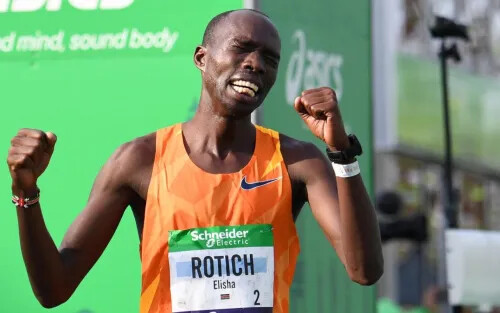
Hillary Kipsambu, who finished third and sixth in the French Capital in 2021 and 2022, will be aiming to go one place better this time round.
Kipsambu, who won the Kosice Marathon in Slovakia in 2019 in 2:09:33, will fancy his chance of going all the way.
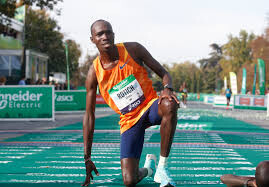
The 2023 Frankfurt Marathon champion Brimin Kipkorir is also in the mix for the title.
The Kenyan trio will be up against a formidable contingent from Ethiopia including the defending champion Gisealew Ayana.
The Ethiopian will be seeking to become the third person to defend the crown after Britain’s Steve Brace (1989 and 1990) and Kenya’s Paul Lonyangata (2017 and 2018).
Ayalew will have Mekuant Ayenew and Bazezew Asmare – all with PBs under 2:05:00 for the company in what is expected to be a competitive race
Japan’s Yuki Kawauchi will aim to challenge the African dominance while France’s Freddy Guimard will hope to impress on home turf. In the women's category, Vivian Cheruiyot lines up as a contender. Her last win was the 2018 London Marathon, where she clocked 2:18:31.
The 2016 Olympic 5000m champion will bounce back to marathon running at the age of 39 as her last marathon dates back to 2019.
Cheruiyot will have her work cut out against a strong Ethiopian field. Buzunesh Getachew, winner in Frankfurt last October, will lead the Ethiopian team and will be joined by Rahma Tusa, Etagena Woldu, Hailu Haven and Gelete Burka, winner of the 2019 Paris Marathon. More than 54,000 runners are set to take part in the event.
Following tradition, participants will set off from the Champs-Élysées to cover the gruelling distance of 26.2 miles, passing through some of the most beautiful Parisian spots.
The route will include the Place de la Concorde, the Opéra Garnier, the Louvre, Notre-Dame de Paris, the Musée d’Orsay, the Eiffel Tower, the Grand Palais and the Hippodrome d’Auteuil to name a few.
(04/06/2024) ⚡AMPby William Njuguna
Schneider Electric Paris Marathon
The Schneider Electric Marathon de Paris offers a unique opportunity to make the city yours by participating in one of the most prestigious races over the legendary 42.195 km distance. The Schneider Electric Marathon de Paris is now one of the biggest marathons in the world, as much for the size of its field as the performances of its runners....
more...Daniel Simiu eyes Berlin Half Marathon course record
Daniel Simiu is not resting on his laurels as he targets the course record at the Berlin Half Marathon on Sunday.
World Half Marathon silver medallist Daniel Simiu has eyes on the course record as he returns to the Berlin Half Marathon on Sunday, April 7.
The course record currently stands at 58:42 and was set by Eric Kiptanui during the 2018 edition of the event. Simiu has been unbeaten so far this season, claiming wins at the 67° Campaccio-International Cross Country and the Sirikwa Classic Cross Country.
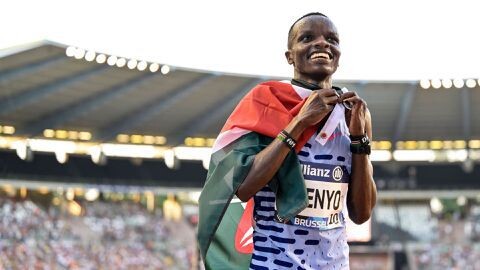
He now heads to the German capital confident and ready to pull off something unique with the course record part of his major plans. However, he faces a stern test from his compatriots since all the six runners that have personal bests of sub 60 minutes are from Kenya.
The 28-year-old has not yet run sub 59:00 and his PB stands at 59:04 which he will attempt to beat when he descends on the course. Last season, he stunned the world to win the Kalkutta 25k race with a world-best time of 1:11:13.
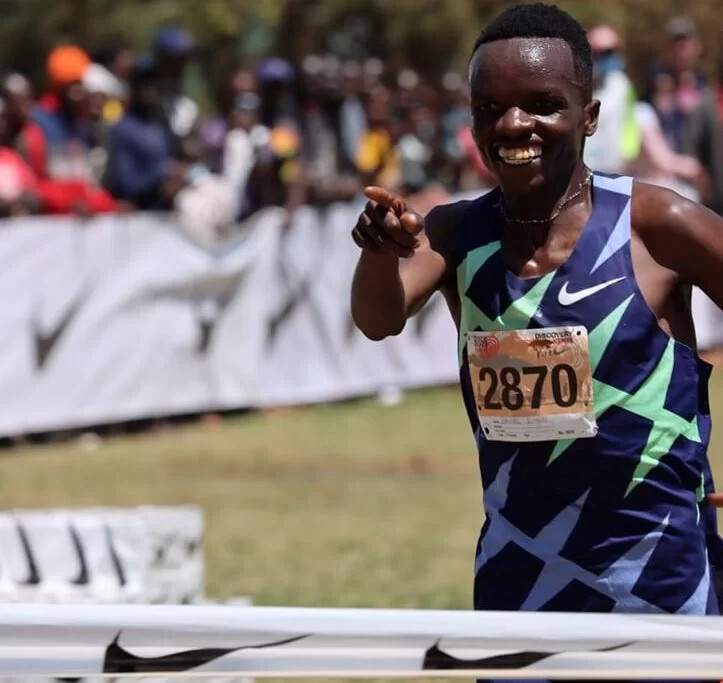
The record he set in India indicates that Ebenyo should be capable of running well under the course record in Berlin. Bravin Kiprop will also be in the mix after taking the Sevilla Half Marathon earlier this year and improving to 59:21, which at that time was a world-leading time.
Simon Boch is the fastest German on the start list with 61:23 while Samuel Fitwi returns to the race where he set his personal record of 61:44 a year ago.
Meanwhile, the women’s race will see Germany’s record holder Melat Kejeta, return to the streets of Berlin. Kejeta has won the race before but when she triumphed in 2018 with 69:04 she still competed for Ethiopia.
“My first goal is to run faster than the 66:25 I ran in Valencia last year. If all goes well during the race then I will try to attack my personal best,” she said.
Ftaw Zeray and Yalemget Yaregal from Ethiopia will certainly be her strongest challengers. Zeray has a PB of 66:04 while Yaregal was third at the Berlin Half Marathon last year in 66:27.
(04/06/2024) ⚡AMPby Abigael Wuafula
Berlin Half Marathon
The story of the Berlin Half Marathon reflects a major part of the history of the German capital. It all began during cold war times and continued during reunification. The events leading up to today's event could really only have happened in this city. Its predecessors came from East- and West Berlin. On 29th November 1981 the Lichtenberg Marathon was...
more...A Chunk of the Big Sur Marathon Course Has Fallen Into the Ocean
Race organizers are scrambling to find a solution with the race just a few weeks away.
With the news of Highway 1’s partial collapse near Rocky Creek Bridge earlier this week, Big Sur Marathon officials are scrambling to devise a solution before the race, set for April 28.

“As you can imagine, we have a variety of agendas,” Josh Priester told the Monterey Herald. “We have 25 days until the event.”
An official decision won’t be made until Friday at the earliest, but Priester says nothing—including running the full course—has been ruled out. The course typically begins at Big Sur Station and runs along Highway 1, ending in Carmel.
“CalTrans is still accessing everything,” Priester said to the Monterey Herald. “We are looking at a variety of options, including the race as it is. I would be hesitant, though, to say much more at this time.”
One lane remains open at the site of the collapse, which occurred just over half a mile from the Bixby Bridge, but only road workers are currently permitted to be in the area.
A similar incident in the past altered the 38-year-old race—a landslide in 2011 that occurred further south on Highway 1. The race has only been canceled twice, in 2020 and 2021, both owing to the COVID-19 pandemic.
The 2011 course was out-and-back, starting and finishing at the Crossroads in Carmel, veering off to Point Lobos State Park for one portion.
“That is a conversation we need to have with the State Parks,” Priester told the Monterey Herald. “We want to be able to collaborate with our agencies. Sometimes, courses have to change for a variety of reasons.”
This landslide occurred closer to the finish line than in 2011, making the prospect of altering the course a bit trickier, but Priester is hopeful. “As of now, we’re still offering all races,” Priester said. “We have a great committee of support for the marathon. I feel it more than ever.”
While the course is one of the most scenic marathons in the world, Priester admits that the very nature of its location, which provides such beauty, also makes it unpredictable.
“What makes the race so special and unique also makes it vulnerable,” Priester said to the Monterey Herald. “We have a great spot for these events. Sometimes Mother Nature does its thing.”
In a post on Instagram, race officials say they are working with various agencies, including CalTrans, California Highway Patrol, CAL FIRE, Monterey County Sheriff, and California State Parks, to find a possible solution for the marathon. An update is expected at 4 p.m. PT on Thursday.
“We’re working toward a great outcome for thousands of runners,” Priester said. “We want to be as transparent as much as we can. But we’re in holding pattern. We are optimistic the race will go on.”
(04/06/2024) ⚡AMPSan Quentin Prison Marathon Documentary to Air on ESPN
The award-winning film follows inmates as they train and run 105 laps around the prison yard.On April 8, ESPN will broadcast the long-awaited documentary, "26.2 to Life: Inside the San Quentin Prison Marathon."
The award-winning film has been eight years in the making, according to the filmmakers, who wrote on Instagram, "Our team never could have imagined going from the starting line at San Quentin to the finish line at Boston and now to ESPN!"The San Quentin Prison Marathon consists of 105 laps in the prison yard, a culmination event of the prison’s 1,000 Mile Club, the prison’s weekly run club, coached and sponsored by the Tamalpa Running Club.

The film documents the buildup to the prison’s marathon, following inmates on their journey to the finish line.
In 2023, a 2017 San Quentin Prison Marathon finisher, Rahsaan Thomas, completed the New York City marathon.
ESPN will broadcast the documentary at 9 p.m. ET on April 8. It will be available on ESPN+ immediately after.
(04/06/2024) ⚡AMPAmebaw and Yimer win 10km titles at Paris Festival of Running
Likina Amebaw, Jemal Yimer, Hagos Gebrhiwet and Caroline Nyaga were among the winners as athletes descended on Paris for the Festival of Running ASICS Speed Race 5km and 10km events on Friday (5).
Competition took place on an iconic 2.5km loop that started and finished at Palais-Royal in the shadow of the Louvre.
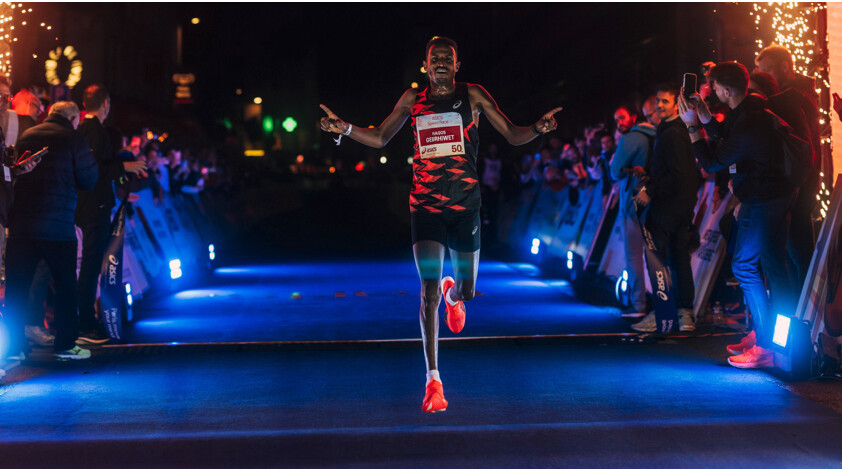
Ethiopia’s Amebaw and Kenya’s Loice Chemnung both dipped under 30 minutes in the women’s 10km, with Amebaw clocking a PB of 29:56 to win and Chemnung finishing just one second behind her. They were joined by Kenya’s Miriam Chebet during the first half of the race but Chebet was unable to maintain the pace and finished third in 30:41.
Finishing fourth, Nadia Battocletti improved her own Italian record to 31:19.
“It was a very amazing race. It was a fast race – I ran under 30 minutes, so I liked it,” said Amebaw, who was recently confirmed as joint runner-up in the 2023-2024 World Athletics Cross Country Tour.
She also voiced her ambition to return to Paris to compete in the No.1 Olympic sport at the Games in August.
“I have got to work hard, and I hope I will be at the Olympic Games,” she said. “Now I will get ready for track competition.”
Less than three weeks after his Seoul Marathon win in a PB of 2:06:08, Ethiopia’s Yimer matched his 10km best, running 27:43 to win the men’s race, also by one second.
Kenya’s Hillary Kipkoech was runner-up in 27:44 and his compatriot Vincent Kibet was third in 27:48.
Ethiopia’s multiple world and Olympic 5000m medallist Gebrhiwet was racing a couple of weeks out from his African Games 5000m victory, which followed a 5km win in the rain at the Podium Festival in Leicester, UK. In Paris he won the men’s 5km in 13:24 ahead of Mohamed Ismael (13:32) and Adel Mechaal (13:34).
Kenya’s Nyaga, who also raced in Leicester where she finished second, this time topped the women’s 5km as she secured a dominant win in 14:40 over Uganda’s Joy Cheptoyek and Belinda Chemutai, who ran 15:03 and 15:05, respectively.
(04/06/2024) ⚡AMP
by World Athletics
Sawe sets race record to win Prague Half Marathon
World half marathon champion Sabastian Sawe improved the 14-year-old race record by winning the Prague Half Marathon, a World Athletics Elite Label road race, in a world-leading PB of 58:24 on Saturday (6).
The 29-year-old was racing just a week after finishing seventh at the World Cross Country Championships in Belgrade, where he formed part of Kenya’s gold medal-winning senior men’s team.
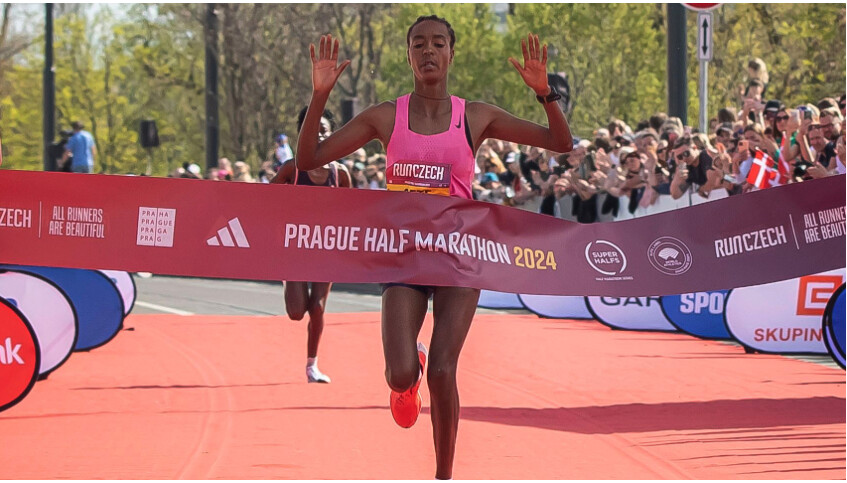
But he showed no signs of fatigue as he took control of the race in warm conditions in Prague. Despite running the second half solo, he maintained his pace and managed to take five seconds off his PB to claim a dominant win ahead of his compatriots Geofry Toroitich Kipchumba (1:00:01) and Patrick Mosin (1:00:15).
The women’s race was much closer and after exchanging the lead from 15km, Ethiopia’s Gete Alemayehu eventually strode away from Kenya’s Jesca Chelangat to win in 1:08:10. Chelangat finished three seconds behind the winner, while Ethiopia’s Nigsti Haftu was third in 1:09:30.
In the men’s race, the lead group set off behind two pacemakers and quickly created a gap on the rest of the field.
With the pacemakers gone, Sawe took charge and led through 5km in 13:48. As he forged ahead, his rivals couldn’t stick with the pace and by 10km Sawe was running alone. He passed that point in 27:32, nine seconds ahead of his compatriots Gideon Kiprotich Rop and Mosin.
Sawe increased his advantage to 45 seconds by 15km, which he reached in 41:25, and he continued untroubled to pick up his pace in sight of the finish line, which he crossed in 58:24.
Improving his PB, he moved from 14th to 12th on the world all-time list.
Behind Kipchumba and Mosin, Rop ran 1:00:45 and Jackson Muema 1:02:01 to complete a Kenyan top five.
In the women’s race, Alemayehu and Chelangat ran together through 5km in 15:43 but Alemayehu dropped back as Chelangat followed the pacemaker through 10km in 31:26. Alemayehu was 11 seconds behind Chelangat at that point but as the race approached 15km, Alemayehu caught and then passed her rival.
That lead was short-lived and Chelangat responded as they fought for top spot behind the pacemaker.
But as the race reached the closing stages, Alemayehu had a look of concentration on her face as she moved away from Chelangat and she managed to hold on to that lead, winning by three seconds in 1:08:10.
Kenya’s Vivian Jepkemei Melly followed Haftu over the finish line to finish fourth in 1:09:33, while Turkiye’s Sultan Haydar was fifth in 1:09:48.
(04/06/2024) ⚡AMPN Kolay Istanbul Marathon
At the beginning, the main intention was simply to organise a marathon event. Being a unique city in terms of history and geography, Istanbul deserved a unique marathon. Despite the financial and logistical problems, an initial project was set up for the Eurasia Marathon. In 1978, the officials were informed that a group of German tourists would visit Istanbul the...
more...Why you should keep eating plenty during your marathon taper
Do you eat enough during your marathon taper? As the Boston Marathon approaches and many Canadian runners enter the taper phase of their training, it is crucial to keep eating lots of calories. Many runners, unintentionally or intentionally, decrease their caloric consumption (particularly carbohydrates), during their taper, thinking they don’t need as many because they aren’t burning as many, but this could be a PB-ruining mistake.
We spoke with Vancouver-based runner and dietitian, Sandra Kilmartin, who stressed the importance of maintaining a consistent diet for optimal performance on race day.

Maximizing glycogen stores
Glycogen is the stored carbohydrate that gets used for fuel during exercise. “Carbohydrates are the body’s main source of fuel during a marathon,” says Kilmartin, “so the more carbohydrates stored in the form of glycogen, the better.”

By adhering to a high-carbohydrate diet leading up to the marathon, runners can ensure adequate glycogen storage. Kilmartin says that some runners may benefit from following a specific carbohydrate loading protocol 36-48 hours before the marathon to maximize performance. She stresses, though, that this increase in glycogen storage can only occur if runners maintain their regular eating habits during the taper period and do not drastically reduce their caloric intake.
This isn’t necessarily easy. Even during training, eating enough calories can be difficult for some, thanks to nerves, stress, a busy schedule or gastrointestinal issues that could suppress their appetite. Some runners may simply underestimate how many calories they need to support their training. During the taper, some runners’ appetites might decrease due to the reduction in training load. Even if this happens, you should prioritize eating plenty of calories.
“Tapering before a marathon is a situation where athletes may not be able to rely on intuitive eating to meet their calorie and carbohydrate needs and instead, can benefit from following a nutrition plan,” says Kilmartin.
Advice for runners during the taper
Kilmartin reminds runners that decreasing your training load during the taper is necessary for maximizing your glycogen stores–but you have to eat to fill them up. “Runners should also ensure they continue to eat regular meals and snacks during their taper, with a focus on carbohydrate-rich foods, such as grains, fruits, starchy vegetables and dairy products,” she says.
Kilmartin also suggests decreasing fiber intake a couple of days before the marathon, which can help you get more carbohydrate-dense food into your body while reducing the risk of gastrointestinal issues on race day.
If you’re struggling to figure out how to eat properly during training and during your taper, Kilmartin suggests consulting a sports dietitian. “Runners can work with a registered dietitian who specializes in sports nutrition to ensure they are nailing their nutrition during training, tapering and race day,” she says. “Most extended health benefits cover registered dietitian services, so I encourage all runners to check if they’re covered.”
Sandra Kilmartin is a competitive middle-distance runner, registered sports dietitian and founder of No Sweat Nutrition in Vancouver. She offers virtual nutrition coaching to athletes of all ages and abilities across B.C.
(04/05/2024) ⚡AMPby Brittany Hambleton
Stephen Mokoka — Ready to tackle the Two Oceans Marathon
Stephen Mokoka is arguably South Africa’s best all-round road athlete and one of the most consistent marathoners. He already boasts a proud Totalsports Two Oceans record – five gold medals out of five starts, including four wins, in the competitive Two Oceans Half Marathon.
But this year he steps up to the ‘big daddy’ in his first race in excess of 50km.If there had ever been any doubt about Mokoka’s ability to stay the pace beyond the standard marathon 42km, his world record win at the Runified 50km in Gqeberha in March 2022, which he won in 2:40:13, would have dispelled them. Had there been suspicions that the 39-year-old, Mokoka might have slowed in recent years, his 2:06:42 marathon PB in Japan last February – just 9 seconds outside Gert Thys’ national record – would have shushed the nay-sayers in no uncertain terms.
Mokoka has chosen to race the 2024 Totalsports Two Oceans 56km as part of his build-up to the Olympic Marathon in Paris in August and while Magawana’s mark may not be in Mokoka’s sights this year, there is little doubt that Mokoka’s stepping up to the 56km race has placed it in mortal danger in the not-too-distant future.
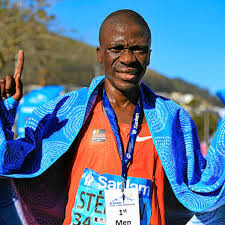
“I never met Thompson Magawana,” Mokoka admitted from Taipei on the weekend, where he competed in the New Taipei City Marathon. “But his time in the Two Oceans is impressive. From my side, I feel I need to learn the distance first. Before Gerda broke the women’s record, she had run it twice before.
“I don’t have the record in mind this year. My goal is to get strength and use the hills in preparation for the Olympic Marathon, which has an elevation gain of over 430 metres. I’ve seldom run a hilly marathon, only Cape Town Marathon in 2022 (which had a 380m elevation gain), so that’s why I chose to run the Hong Kong and Taipei Marathons (both incorporate testing climbs) this year in preparation for Two Oceans.
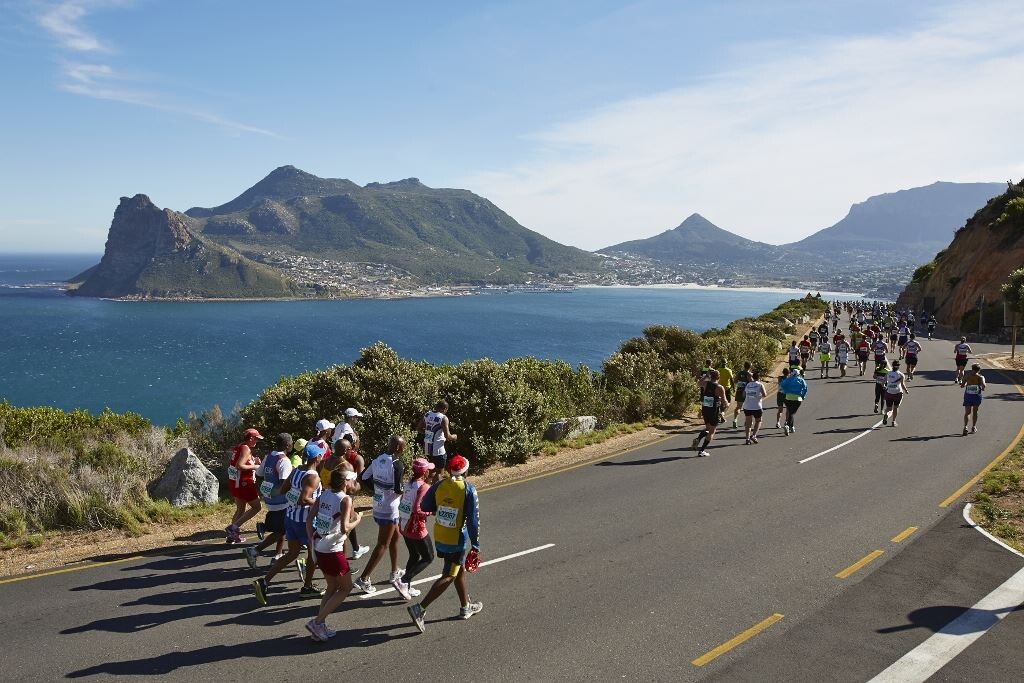
“As I’m new at the distance, my goal for this year is to have fun, enjoy and learn. I will need to build more strength and endurance to have a go at the record. Maybe in the next year or two.”
Unlike at the testing Hong Kong Marathon, where Mokoka raced to a competitive second in 2:12:58 in January this year, just 8 seconds behind Kenyan Anderson Seroi, Mokoka’s approach to the New Taipei City Marathon, just four weeks before the Two Oceans, was to use the hilly marathon as a training run, which he completed in a comfortable 2:24:20.
“The Taipei Marathon didn’t really disrupt my training.” Mokoka explained. “I arrived just three days before the race and travelled back home soon after. My target was to run 2:15 through 40km and I went through in 2:16. I plan to take off three days, just running easily, before my last block of training for Two Oceans. There is still much hard work ahead as we move into a speed cycle.”
Mokoka enjoys racing in Cape Town, the scene of multiple racing titles on road and track, and is excited about incorporating new elements to his training for the Two Oceans with his long-time coach, Michael ‘Sponge’ Seme.
“Much has changed in my training programme for the Oceans with longer runs incorporating longer hills,” Mokoka continued. “I’m no longer doing the sessions I did in my preparation for the 50km. Everything is new – I enjoy that.
“Taipei was my last longer run and from now I’m back to normal marathon preparation – the toughest part is behind me and now I’m back to something which I’m familiar with.”
Mokoka recently moved from the red-vested Boxer Club to Hollywood Athletics Club’s distinctive purple, saying the club has given him a new lease of life. “Hollywood’s priorities are different and I’m glad they are on board with all the things I mentioned before signing with them.
“They’re happy with my limited and focused schedule – Hong Kong Marathon, Totalsports Two Oceans then Olympics. They have made it possible for me to train at high altitude in Kenya for a solid block prior to the Olympics. I’ll be training with Kenyan athletes such as Cyrus Mutai, who won the New Taipei Marathon.”
Training with the Kenyans could take Mokoka to new heights, but before that is a date with ‘The World’s Most Beautiful Marathon’ and Two Oceans Marathon destiny. And in time, Magawana’s history.
(04/05/2024) ⚡AMPTwo Oceans Marathon
Cape Town’s most prestigious race, the 56km Old Mutual Two Oceans Ultra Marathon, takes athletes on a spectacular course around the Cape Peninsula. It is often voted the most breathtaking course in the world. The event is run under the auspices of the IAAF, Athletics South Africa (ASA) and Western Province Athletics (WPA). ...
more...Mark Armstrong: Why I'm pulling out of the Manchester Marathon
It's the column that I really didn't want to write, but unfortunately I won’t be running the Manchester Marathon this year.
I’ve had to take the difficult decision that due to my calf that I won’t be able to toe the start line in little over a week’s time.
Yet another test run ended with the same discomfort by around 4K that I’ve been experiencing and it’s time to accept that I’m just not going to be ready to do myself justice.
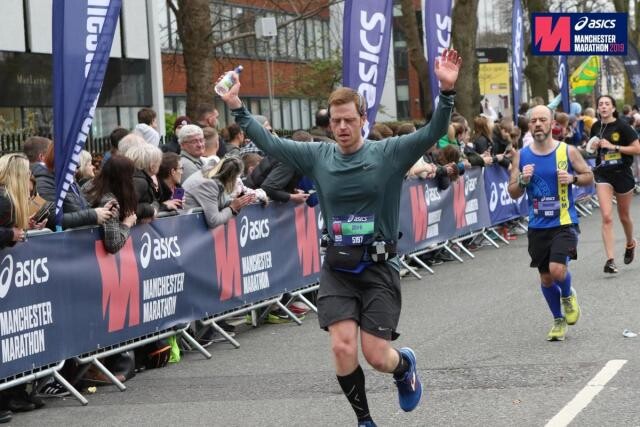
There is of course disappointment and frustration; to some extent I’ve never felt fitter and if my calf was intact then I’d be confident of setting a new PB there.
I needed to stop trying to force this recovery. Hopefully, it’s a relatively minor injury, but it needs time and some concerted work without the impact running has to make it better.
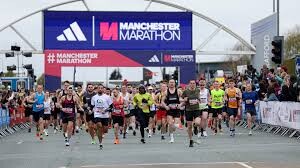
To my mind I’ve got April to really get on top of it before easing back into things in May and kicking on with the rest of the year.
I’ve tried to be proactive and listed all the races I want to run in 2024 with the emphasis obviously on getting to the Berlin Marathon start line in September in the best possible shape.
I’ve learned so much from this training block already and it’s been nice to surprise a few people with the progress I’ve made.
I’ve run times I’ve never thought I was capable of at 10K and half marathon distances but I also have to accept that at this stage my body doesn’t always cope particularly well with a high volume of running.
That’s obviously relative to everyone but I’ve found that once I get to around 40-45 miles per week in my training that my body starts to complain.
But that’s okay - I can work with that - it doesn’t mean I can’t achieve the goals I’ve got, notably a sub three-hour marathon. It just means I have to be a bit more strategic in how I get there.
I’ve grown to really enjoy the strength and conditioning side of things and I’m more than happy to get on the bike to supplement my training. The heart and lungs don’t know what exercise I’m doing so I’m confident I can build fitness there.
Running is just one part of the build towards a marathon goal; strength and conditioning, nutrition, sleep, stress levels are all other factors that can impact what your body is capable of.
Rather than feel envious of my running friends on the way to the marathon start line, I feel inspired in the knowledge that one day in the near future it will be my time to produce a marathon run that I can feel proud of once again. A run that I can look back on with my children to demonstrate that if you put your mind to something then you can achieve goals you never thought possible.
Unfortunately, we live in a world where people want instant gratification and patience is a dirty word. You can’t expect to be good at something straight away; there are always going to be setbacks when chasing something you really want, tests that will make you question how much you really want something.
But building resilience is a key life lesson - tough times don’t last, tough people do.
That’s why I’m focusing on coming back fitter and faster…
With very strong calves…
(04/05/2024) ⚡AMPby Mark Armstrong
Manchester Marathon
We pride ourselves on welcoming all to take on our 26.2 mile challenge, from some of the world's greatest elite runners, to those who thought completing a marathon would never be possible. Many regular runners find this the ideal event to get a personal best time, whilst everybody finds the incredible Mancunian support throughout the course unforgettable. ...
more...Defending champion Eliud Kipchoge will lead the unveiled marathon team to the Paris 2024 Olympic Games
Defending champion Eliud Kipchoge will lead Team Kenya's men’s marathon team to the Paris 2024 Olympic Games, Athletics Kenya has announced.
Kipchoge goes to Paris with history in his mind as he intends to become the first man to win three Olympic titles over the marathon. If he manages to achieve the feat, he will also become the oldest marathoner to have successfully defended his title at the Olympics.
Kipchoge had a false start at the Tokyo Marathon where he finished a disappointing 10th but he has since gone back to training and will be sharpening his talons ahead of the global bonanza.
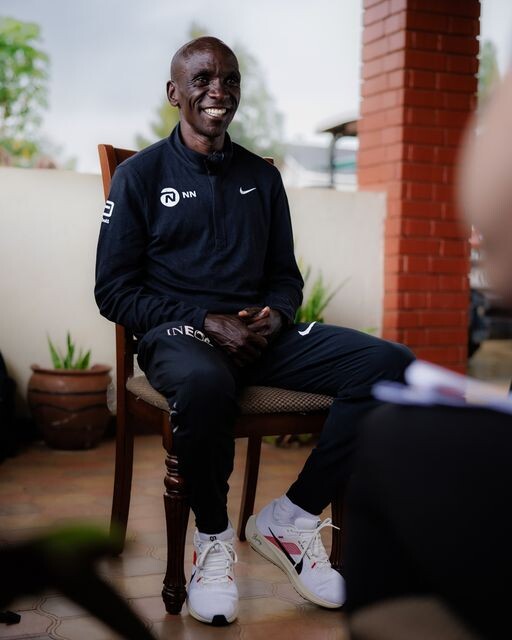
Joining Kipchoge will be reigning Tokyo Marathon champion Benson Kipruto who stunned heads at the Tokyo Marathon to take the top prize just as a debutant. Kipruto is a well-known marathoner and with a man of such quality in the field, Kenya is assured of a medal.
Kipruto goes to the Olympic Games hungrier than ever since he will be in the hunt for his first title under the Team Kenya jersey. With the motivation from winning the Tokyo Marathon, he will be out to impress.
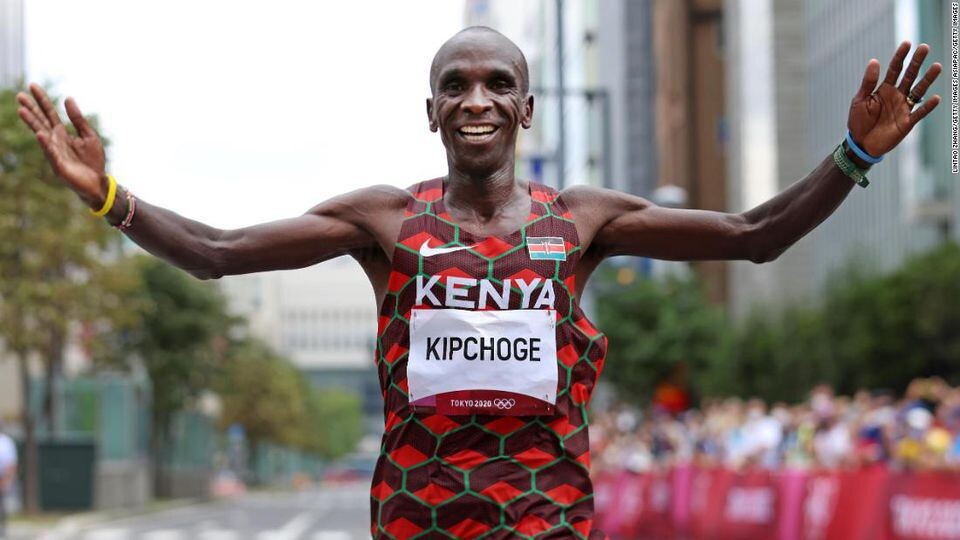
Another athlete to watch will be Timothy Kiplagat, the 2022 Abu Dhabi Marathon champion. Kiplagat is laid back but when it comes to the marathons, he knows how to execute his races well and finish in the podium bracket.
Alexander Mutiso has also made the cut to the national team in his first senior assignment. Mutiso bagged silver for Team Kenya during the 2018 World Under-18 Athletics Championships.
He will be hoping to impress one more time, having a great record of previous marathon successes including a win at the 2023 Prague Marathon and a second-place finish at the 2023 Valencia Marathon.
Little-known Vincent Ngetich, the young man who traumatized Kipchoge at the 2023 Berlin Marathon will also be part of the star-studded field. Ngetich proved to be a great marathon runner, finishing second behind Kipchoge in his debut over the distance.
(04/05/2024) ⚡AMPby Abigael Wuafula
Paris 2024 Olympic Games
For this historic event, the City of Light is thinking big! Visitors will be able to watch events at top sporting venues in Paris and the Paris region, as well as at emblematic monuments in the capital visited by several millions of tourists each year. The promise of exceptional moments to experience in an exceptional setting! A great way to...
more...Defending champ Gisealew Ayana and Vivian Cheruiyot lead fields for Paris Marathon
More than 54,000 runners are set to gather at the starting line of the 47th Schneider Electric Marathon de Paris this Sunday (April 7).
Following tradition, participants will set off from the Champs-Élysées to cover the gruelling distance of 26.2 miles, passing through some of the most beautiful Parisian spots.
The route will include the Place de la Concorde, the Opéra Garnier, the Louvre, Notre-Dame de Paris, the Musée d’Orsay, the Eiffel Tower, the Grand Palais and the Hippodrome d’Auteuil to name a few.

The marathon has attracted a strong field of elite athletes who will be aiming to clinch the title and walk away with the prize money, which stood at €50,000 last year.
Gisealew Ayana, a 21-year-old Ethiopian who secured victory last year, will lead the men’s race as he will aim for a double that only Britain’s Steve Brace (1989 and 1990) and Kenya’s Paul Lonyangata (2017 and 2018) have achieved.
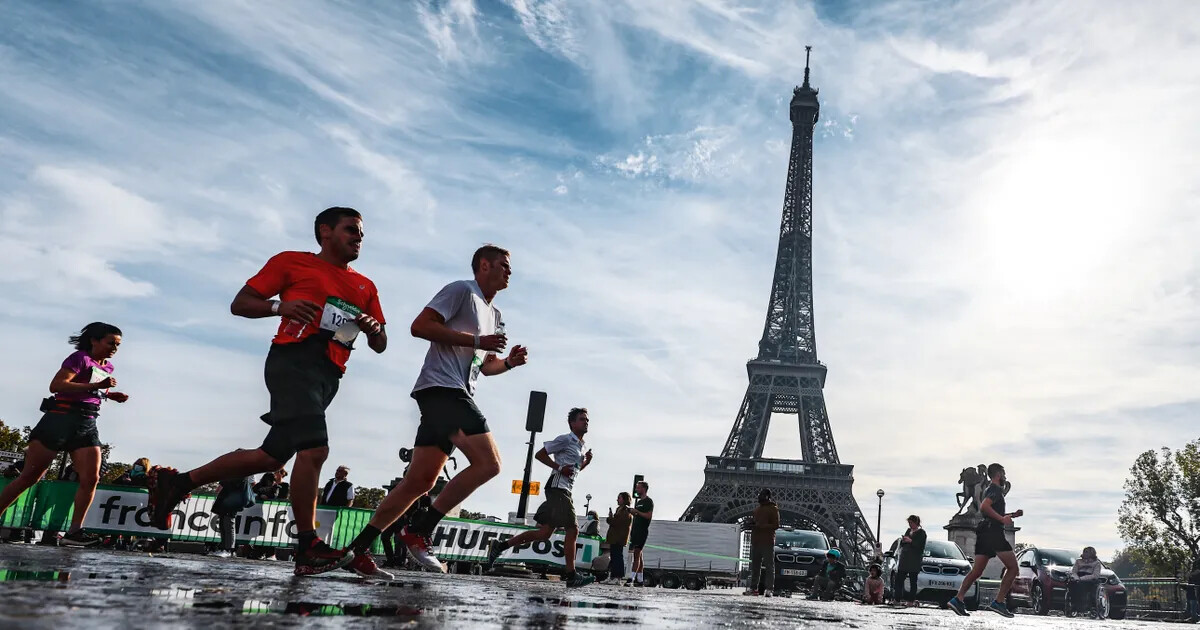
Ayana will face tough competition as he goes up against two previous Paris winners, 2022 champion Deso Gelmisa and Elisha Rotich, winner of the 2021 Pairs Marathon and event record holder (2:04:21). Rotich, 33, will return to the marathon after a two-year absence.
A strong contingent of Kenyan and Ethiopian runners will join the trio of recent winners in leading the field including Hilary Kipsambu (2021 bronze medallist), Brimin Kipkorir (2023 Frankfurt Marathon winner), Mekuant Ayenew and Bazezew Asmare – all with PBs under 2:05:00.
Japan’s Yuki Kawauchi will aim to challenge the African dominance while France’s Freddy Guimard will hope to impress on home turf.
In a change from previous years, the elite women will start on the same line as the men rather than having a separate start. The adjustment provides the women with an earlier start time, aimed at allowing them to take advantage of favourable conditions to achieve faster times.
Kenya’s Vivian Cheruiyot lines up as a favourite. Her last win was the 2018 London Marathon where she clocked 2:18:31.
The 2016 Olympic 5000m champion will bounce back to marathon running at the age of 39 as her last marathon dates back to 2019.
Cheruiyot will have her work cut out against her rivals as there is a strong Ethiopian field. Buzunesh Getachew, winner in Frankfurt last October, will lead the Ethiopian team as she will be joined by Rahma Tusa, Etagena Woldu, Hailu Haven and Gelete Burka, winner of the 2019 Paris Marathon.
There is more than just the marathon on offer this weekend as ASICS, partner of the Schneider Electric Marathon de Paris, is hosting a three-day Festival of Running event.
The unique festival will feature elite 5km and 10km speed races on Friday evening, with Eilish McColgan being one of the athletes set to run. A pre-marathon shake-out run is scheduled for Saturday.
(04/04/2024) ⚡AMPby Jasmine Collett
Schneider Electric Paris Marathon
The Schneider Electric Marathon de Paris offers a unique opportunity to make the city yours by participating in one of the most prestigious races over the legendary 42.195 km distance. The Schneider Electric Marathon de Paris is now one of the biggest marathons in the world, as much for the size of its field as the performances of its runners....
more...Western States unveils new anti-doping policy
The legendary 100-mile race has partnered with the U.S. Anti-Doping Agency as part of an "ongoing commitment to clean sport".
On Tuesday, Western States Endurance Run (WSER) revealed a new partnership with the U.S. Anti-Doping Agency (USADA), unrolling new regulations around anti-doping and reaffirming the race’s “continuing commitment to clean sport,” as their website explains. Here’s what you need to know.
While WSER has for years had drug testing in place, the previous policies were not as stringent (and were not governed by USADA). For some runners eager to toe the line in Auburn, Calif., on June 29, the rules and expectations around testing are now more clearly laid out; others have more questions and are requesting further clarification.
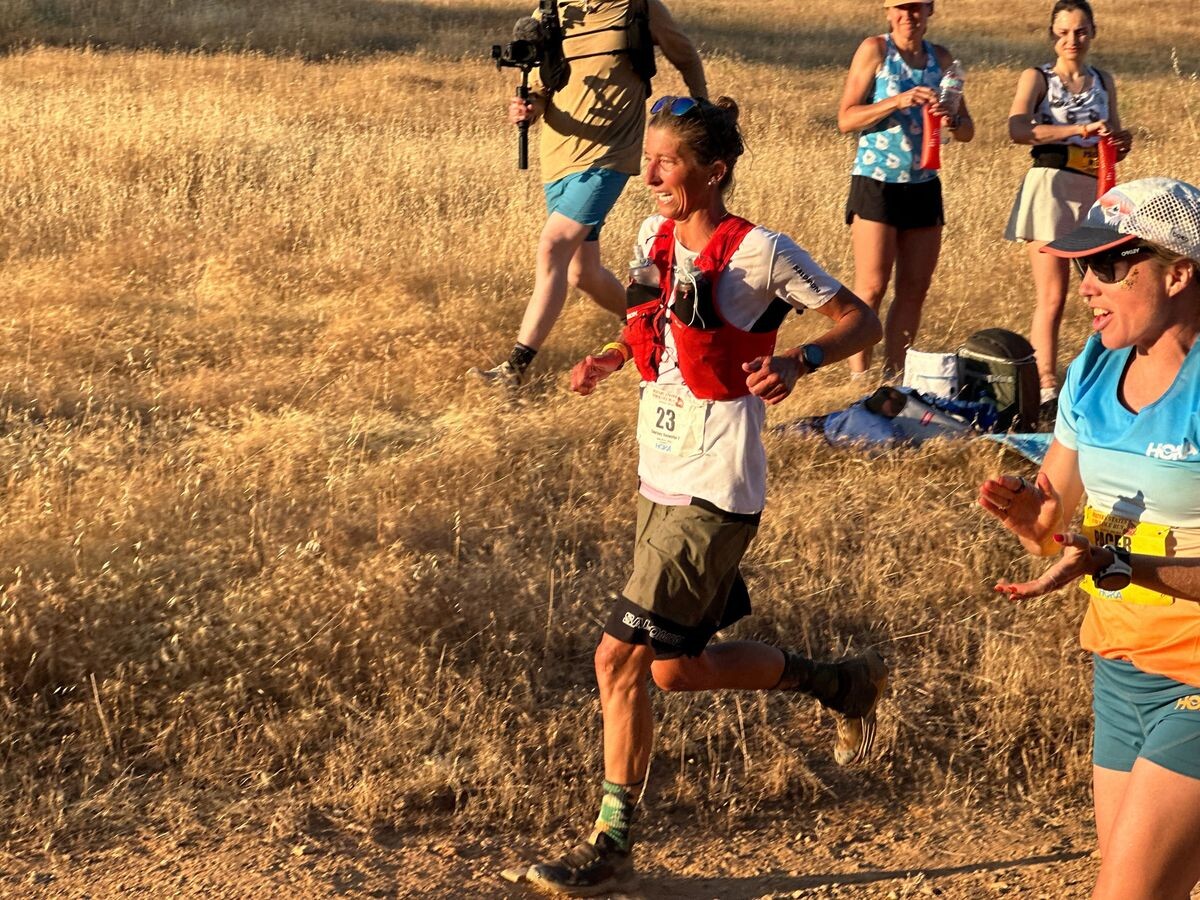
Entry rules
WSER’s entry rules explain that athletes found guilty of doping offenses by governing bodies like WADA or USADA are barred from participating in WSER during their period of ineligibility. Additionally, any athlete subjected to a ban of three months or more is ineligible unless otherwise approved by WSER. Previously, athletes who had any infractions against the WADA code were banned for life from participating in WSER—but, as ultrarunning world champ Camille Herron explains on X, the new policy allows for “more leniency of entry for those who were given a warning/1-2 month ban.”
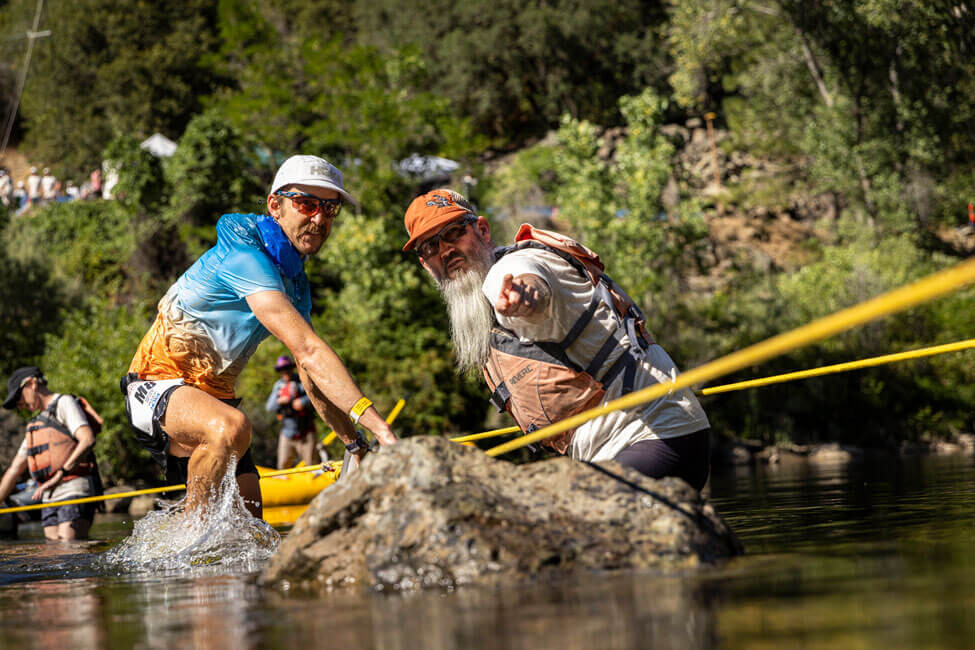
Levelling the playing field
WSER will be taking testing seriously and targeting elite athletes and top age-group competitors for post-race urine and/or blood testing. Sample collection and analysis will be handled by USADA, ensuring a thorough and transparent process. USADA will also be responsible for results management, including communicating with athletes regarding test results, investigating violations and imposing sanctions as necessary. WSER also reserves the right to impose its own sanctions.
Prohibited substances
WSER strictly adheres to the WADA (World Anti Doping Agency) Code, prohibiting the use of substances on the WADA Prohibited List. Athletes are responsible for knowing and complying with these rules. The WSER website provides resources to help athletes check their medications and suggests that runners be extremely cautious when using supplements.
Athlete response
The updated drug policies have garnered some positive responses on social media, while some athletes, such as Canadian pro mountaineer and ultrarunner Adam Campbell, are asking for further explanation.
WSER has a partnership with trail running giant UTMB, and while NSAIDs (nonsteroidal anti-inflammatory drugs, including aspirin and ibuprofen) are, notably, banned at all UTMB races, runners at WSER would not be tested for them under these new guidelines.
“The issue is the terms are not clearly defined,” Campbell posted on X. “Strong stances usually demand greater clarity. If UTMB sanctioned someone for a doping violation how would WSER handle it? Their possible violations do not necessarily sync with WADA—seems like a reasonable question to clarify.” At the time of publication, the race had not yet responded.
The 2024 edition of WSER will take place on June 29-30.
(04/04/2024) ⚡AMPby Keeley Milne
Western States 100
The Western States ® 100-Mile Endurance Run is the world’s oldest and most prestigious 100-mile trail race. Starting in Squaw Valley, California near the site of the 1960 Winter Olympics and ending 100.2 miles later in Auburn, California, Western States, in the decades since its inception in 1974, has come to represent one of the ultimate endurance tests in the...
more...Kenya announces Paris 2024 Olympics women's marathon squad
Athletics Kenya has finally unveiled the deep women's field that will don the Kenyan jersey in the women's marathon at the Paris 2024 Olympic Games.
Athletics Kenya has finally unveiled the women’s marathon team to the Paris 2024 Olympic Games through the National Olympic Committee of Kenya.
Defending champion Peres Jepchirchir headlines the strong field as she attempts to win her second successive marathon title at the Olympic Games. Jepchirchir will hope to bounce back from injury woes stronger and she will be joined by a strong team.
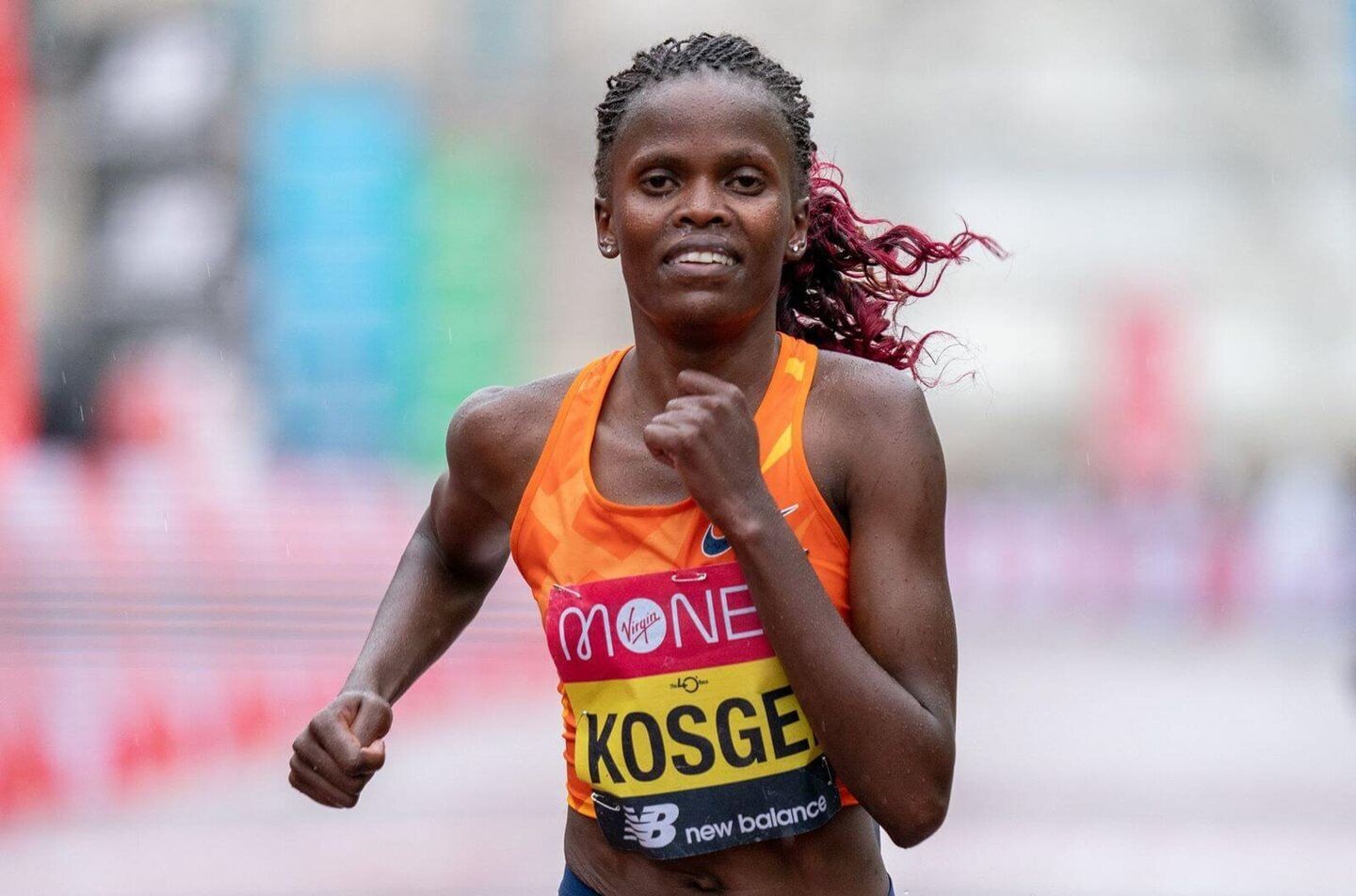
She will build up for the global showpiece at the London Marathon, hoping to improve on her third-place finish last season.
Also included in the team will be reigning New York City and Boston Marathon champion Hellen Obiri who seeks to make history with Team Kenya. Obiri aired her interest to win gold and as she joins Jepchirchir, she is also eyeing the coveted title.
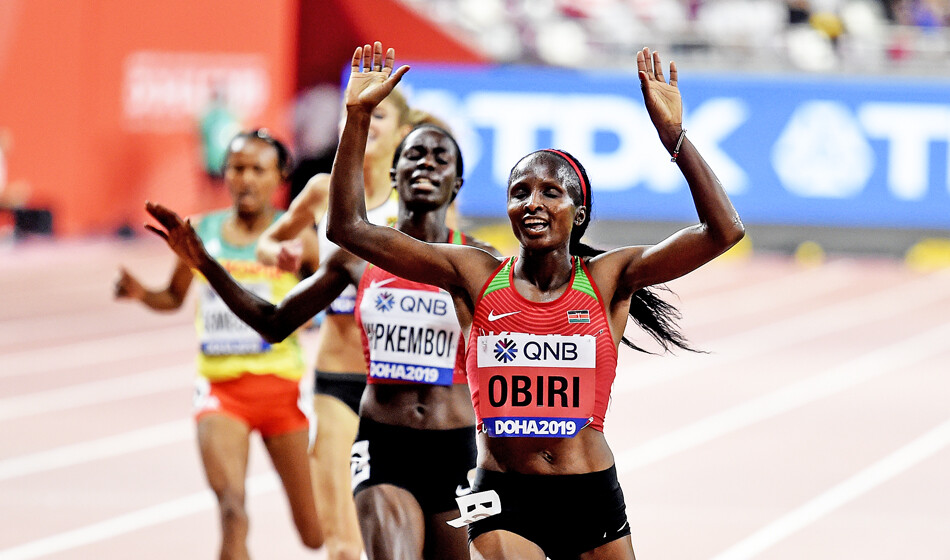
Obiri will be building up for the Olympics at the Boston Marathon where she is the defending champion and she seeks to have a great run in the streets where she claimed her first victory in the marathon.
In an interview with Citius Mag, Obiri exuded confidence ahead of the event, revealing that her body is now used to training for the marathon.
Another strong athlete who adds depth to the field will be former world marathon record holder Brigid Kosgei who was runner-up at the delayed 2020 Tokyo Olympic Games.
Kosgei has been down with injuries but bounced back this season with a win at the Abu Dhabi Marathon and she now heads to the Olympic Games, hungry for the title. Sharon Lokedi, the 2022 New York City Marathon champion will also be among the stars to descend on the course for the Olympic Games as she has made the cut to the team.
Two-time Chicago Marathon champion Ruth Chepng’etich has also not been left behind and she hopes to also claim her first Olympic title. Chepng’etich has been in great form and she will certainly not disappoint when it comes to representing Kenya.
The 2023 Tokyo Marathon champion Rosemary Wanjiru has also been included in the team, thanks to her great form and fighting spirit.
(04/04/2024) ⚡AMPby Abigael Wuafula
Paris 2024 Olympic Games
For this historic event, the City of Light is thinking big! Visitors will be able to watch events at top sporting venues in Paris and the Paris region, as well as at emblematic monuments in the capital visited by several millions of tourists each year. The promise of exceptional moments to experience in an exceptional setting! A great way to...
more...Four tips for transitioning from winter to spring running
Runners across Canada are embracing the arrival of spring. Milder temperatures, longer day and more sunshine are just a few of the things we look forward to as runners in the northern hemisphere. Here are some tips to help you transition from winter so that you don’t miss a stride in your spring training.
1.- Layer up
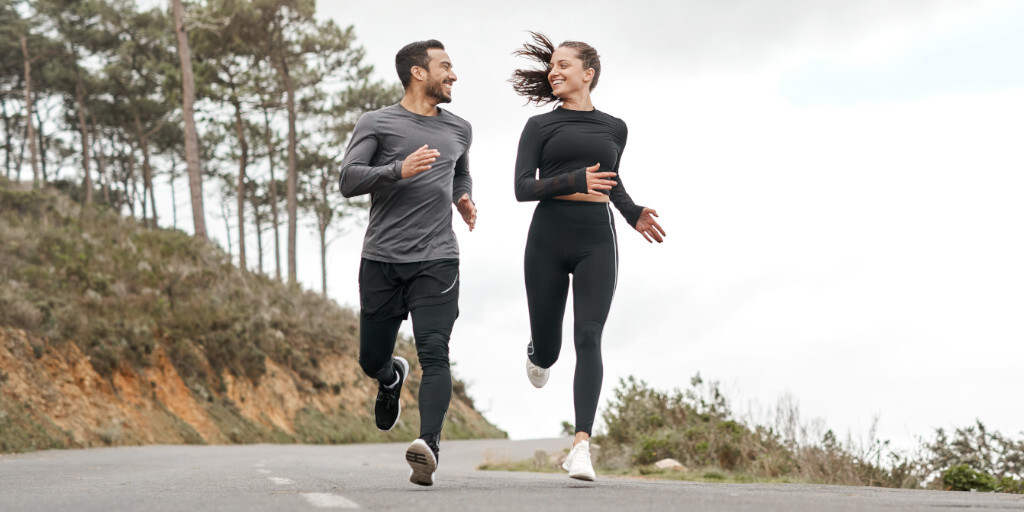
Most Canadian runners can put away the heavy-duty thermals now that April is here. But dressing for runs in spring can come with its own challenges. Light layers can help you stay warm when you first head out and prevent you from overheating as the temperatures rise with the morning (or vice versa). Here are some great running pieces we’re loving this spring.
2.- Choose the right shoe

While most of us spend our winter runs finding ways to not slip on the ice, spring can mean mud, wet ground and soft terrain. All of these changes can affect the way we run, so it’s important to find shoes that can transition between seasons . Our March favourites feature some great versatile options (think road-to-trail, which can be useful on the mud).
3.- Stay safe on the roads
We’ve got longer days to look forward to, but spring mornings can be dark, damp and overcast. Think about your visibility on the road and bad weather and head out with reflective gear, and even lights, to help you stay visible on early morning and evening runs.
4.- Challenge yourself
You’ve made it through another winter. Why not test your fitness with a spring goal? Many provinces’ 2024 race seasons are kicking off this month. Signing up for a race or challenge is a great way to realize the work you put in this winter and give yourself something to look forward to. If racing isn’t for you, spring is also a great time to check out running clubs welcoming new members. If you’re generally a solo runner, adding some social runs into your week can be an uplifting change.
(04/04/2024) ⚡AMPby Claire Haines
New York City Marathon fights massive new bridge toll
In November, more than 50,000 runners will run the New York City Marathon on an iconic route that includes numerous bridge crossings, including, at the start, the spectacular Verrazzano-Narrows Bridge, which connects Staten Island with Brooklyn. Both upper and lower portions of the bridge have been used for the marathon since 1988.
As The New York Times reports, however, this year, the Metropolitan Transportation Authority (M.T.A.), is demanding that the New York Road Runners (NYRR), who organize the marathon, pay $750,000 for lost toll revenue while the bridge is closed to traffic.
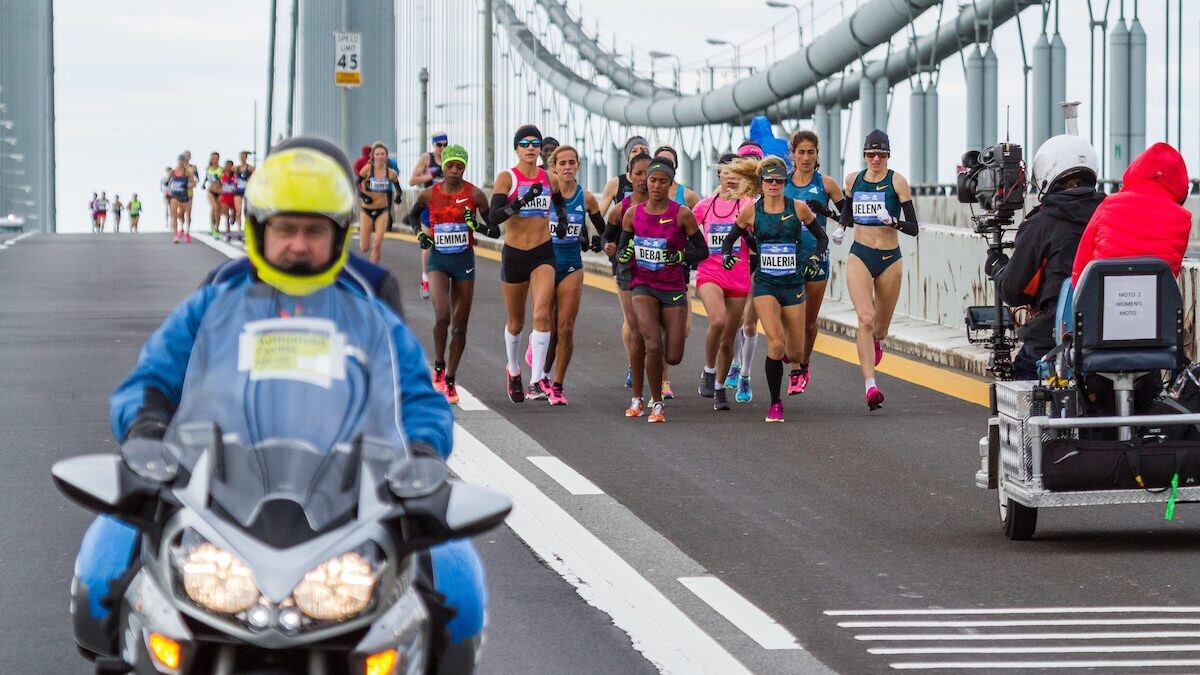
This demand has sparked a standoff, with the M.T.A. initially threatening to confine runners to the bridge’s lower deck, then deciding to allow use of the upper level, albeit contingent on a payment agreement.
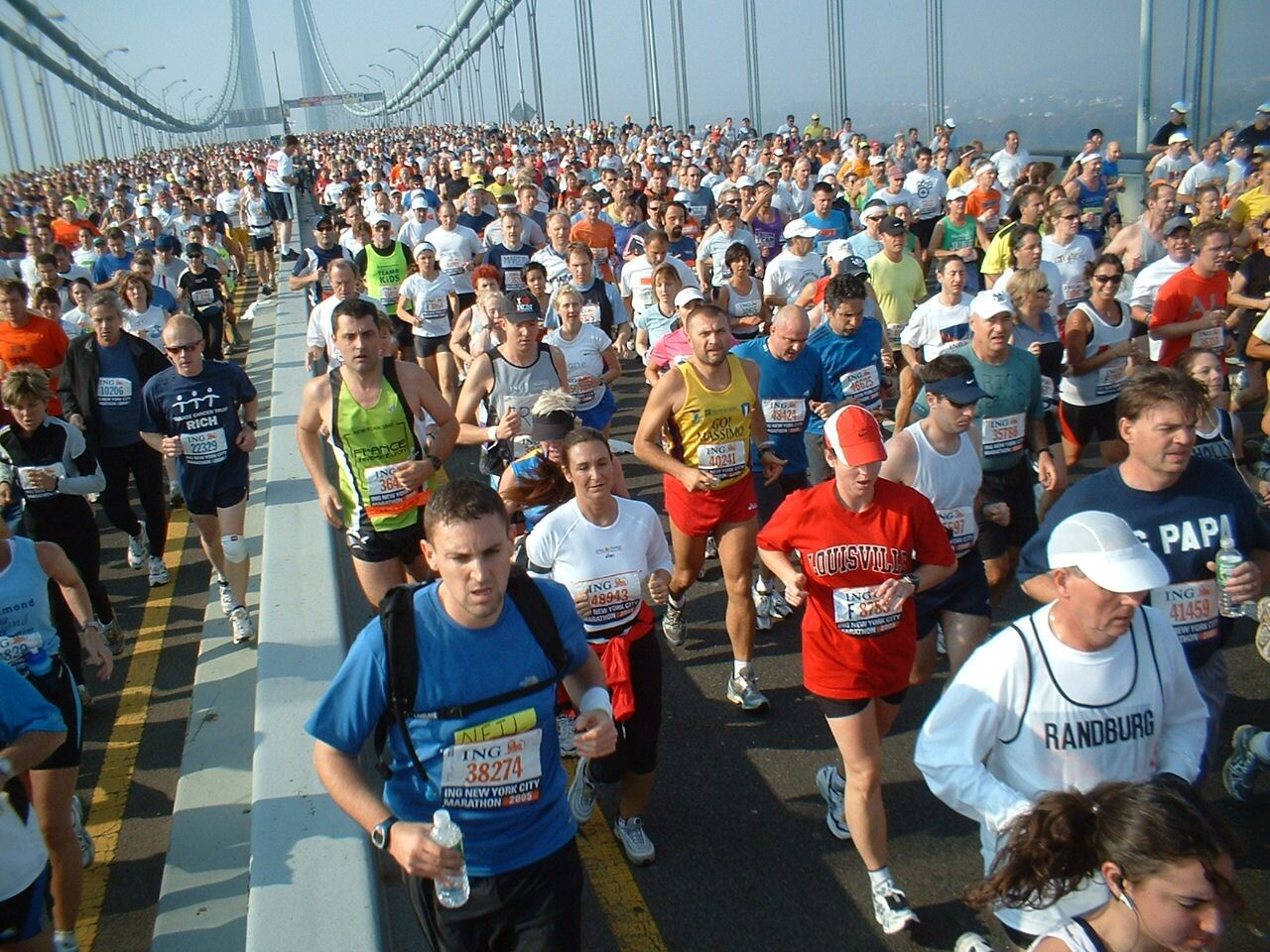
NYRR, highlighting the marathon’s significance as a homegrown institution and an economic boon for the city, has appealed to Governor Kathy Hochul for intervention. It argues that the event’s benefits outweigh the lost toll revenue, citing increased subway ridership on race day as evidence. NYRR began paying the personnel costs of closing the bridge in 2021; last year, the organization says it paid $150,000.
Should the two groups not come to an agreement, NYRR says it may have to extend the length of the race to allow all runners to finish (resulting in longer road and bridge closures and more competitors running in the dark) or reduce the number of participants accepted.
(04/03/2024) ⚡AMPby Keeley Milne
TCS New York City Marathon
The first New York City Marathon, organized in 1970 by Fred Lebow and Vince Chiappetta, was held entirely in Central Park. Of 127 entrants, only 55 men finished; the sole female entrant dropped out due to illness. Winners were given inexpensive wristwatches and recycled baseball and bowling trophies. The entry fee was $1 and the total event budget...
more...Canadian Olympic marathoner Malindi Elmore pulls out of Boston Marathon due to hamstring injury
Canadian Olympic marathoner Malindi Elmore will not be racing at the Boston Marathon on April 15, she announced on Instagram on Tuesday. Elmore, of Kelowna, B.C., has been dealing with hamstring tendinopathy, a condition in which the tendon that connects the hamstring muscles to the pelvis becomes irritated, resulting in pain and limited function.
While Elmore had hoped to feature in a strong field (including reigning champion Hellen Obiri and 2022 New York Marathon champion Sharon Lokedi), she is focused on the Paris 2024 Olympics. “Boston on hold for another year, all eyes towards being FIT and HEALTHY for Paris on August 11,” she wrote.
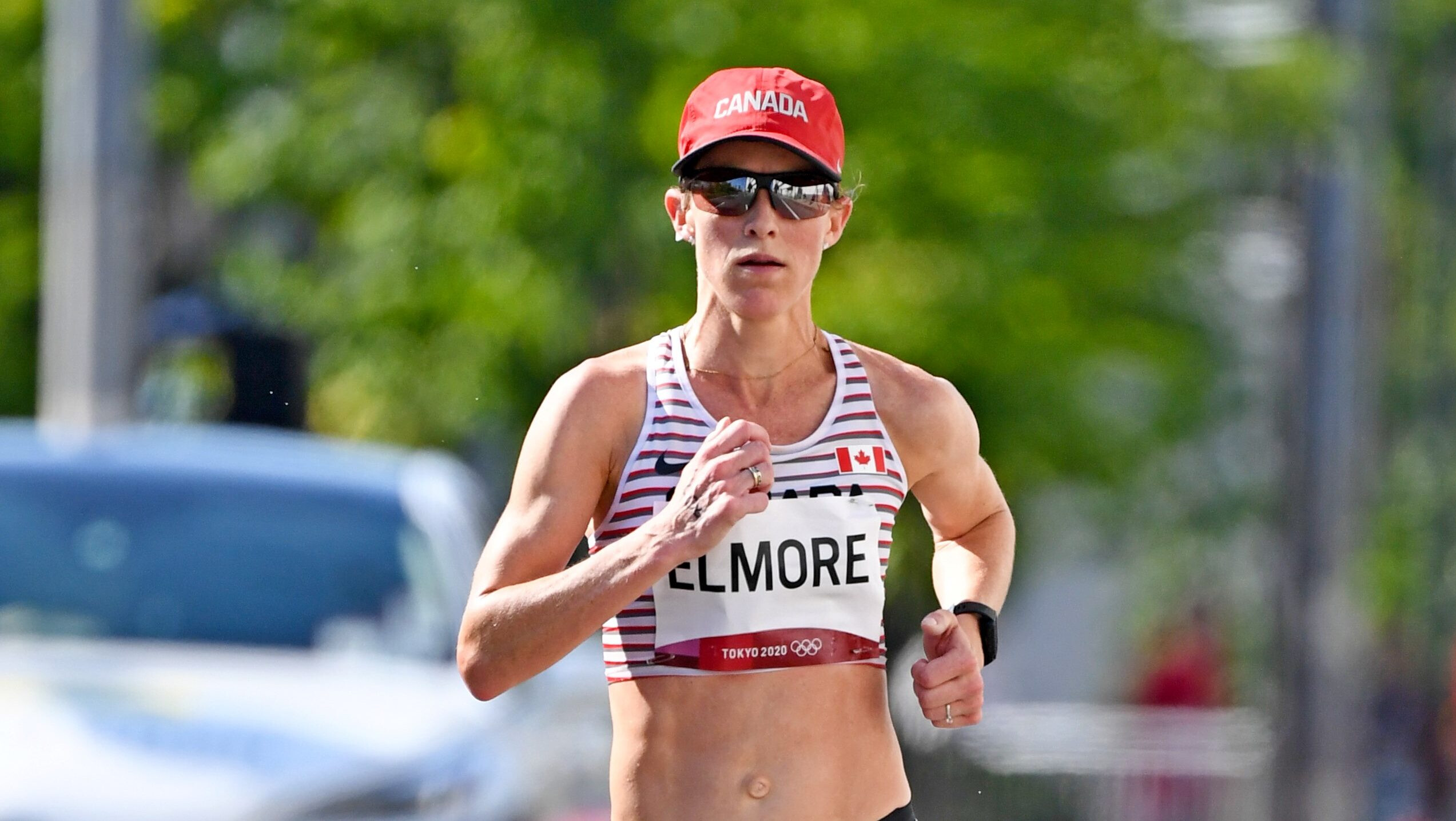
This would have been Elmore’s second time lining up in Boston; in 2022, she ran to an impressive 11th-place finish, posting a time of 2:27:58—the fastest-ever time in Boston by a Canadian woman. She left Boston wanting to return, saying, “It’s a blast to run the crowd-lined streets, where there is always someone cheering you on and shouting your name.”
In February, Elmore (along with national marathon record holder Cam Levins) received a nomination from Athletics Canada and the Canadian Olympic Committee to represent Team Canada in the marathon at the 2024 Paris Olympics. This will be both athletes’ third Olympic appearance for Team Canada.

Elmore made her Olympic debut at Athens 2004 in the women’s 1,500 meters. Though she initially retired in 2012, she returned to the sport in 2019 to compete at the Houston Marathon. She ran the Houston Marathon again in 2020 and qualified for the Tokyo Olympics with her Canadian record-setting performance of 2:24:50. In her Olympic return, Elmore placed ninth overall–the second-best finish by a Canadian in the women’s marathon.
While Elmore isn’t able to race this month, she is still training.”After experimenting with more miles, hills and weights this winter to prepare for a hilly and challenging Paris course, my hamstring tendinopathy reared its ugly head again and told me to back off,” she explained on Instagram.”I listened, so here we are, running my favorite easy long runs but holding off intensity and hills until it returns to 100 per cent again. Thankfully (due to my easy paces shuffle) easy running is no problem as I basically have no hamstring extension at this pace so I can still hit my favorite long runs.”
(04/03/2024) ⚡AMPby Claire Haines
Boston Marathon
Among the nation’s oldest athletic clubs, the B.A.A. was established in 1887, and, in 1896, more than half of the U.S. Olympic Team at the first modern games was composed of B.A.A. club members. The Olympic Games provided the inspiration for the first Boston Marathon, which culminated the B.A.A. Games on April 19, 1897. John J. McDermott emerged from a...
more...Manchester Marathon: Seven Tips for marathon week preparation With Steph Kessell
Event week is fast approaching, which means excitement and nerves are running high!
So, what should you do the week before the adidas Manchester Marathon to make sure you succeed and – most importantly – enjoy the challenge?
We spoke to Team GB Olympic marathon runner and professional adidas athlete Steph Kessell, who shared her 7 tips for marathon week preparation.
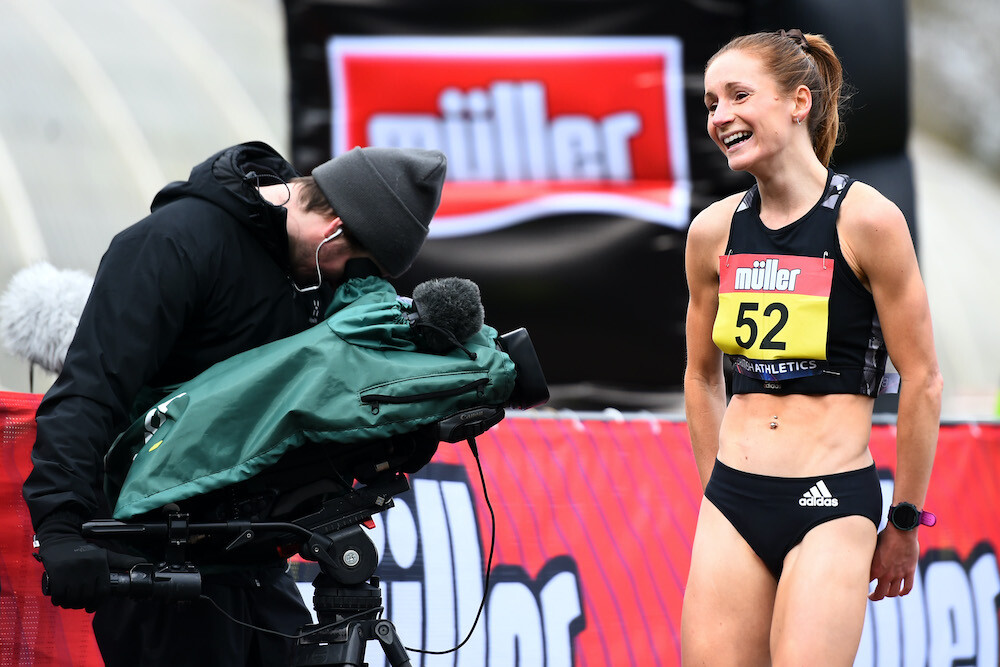
So, grab your notes and don’t miss this great advice from Steph!
1. TAPER

“In the final week, your overall training volume and intensity should have dropped to less than 50% so you can get to the start line of the marathon feeling fresh and raring to go. Your last higher intensity session should be 4-5 days before the marathon and include some marathon paced intervals, but not many of them!
2. SLEEP
“Sleep is the most important recovery aid. Hopefully you have been getting plenty of sleep throughout your training block but during this final week prioritise early nights and aim to get your 8 hours. It is common to not sleep very well the night before the challenge but don’t stress! If you’ve been able to sleep well in the build up then this won’t affect your event. If you can’t sleep, try to stay in bed and relax; this is still good rest and recovery”.
3. HYDRATE
“You want to go into race day feeling hydrated, as dehydration has a negative effect on performance, even if it’s not that warm outside! Carry a water bottle around with you to remind you to drink regularly aiming for at least 1.5 litres a day (NHS guidance). If you have some electrolyte tabs handy then take one daily as well as the evening before the event to ensure you are extra hydrated!”
4. PREP YOUR KIT
“If you haven’t worn your event day kit for a run yet then this is your final chance to test it out. You want to feel comfortable, wear the right amount of layers and avoid chafing. From sports bra, socks, heart rate monitor, race belt or hydration pack, try everything that you plan to wear on the big day, so you can feel confident on the start line.”
5. PLAN YOUR STRATEGY
“At the start of event week write out a plan for the event day. What pace will you start at (or do you plan to join a pacing team to reach your target time?) When will you take on fuel? Where are the water, gels and toilet stops?
When you have planned this out in advance and read over it again and again before the day, then it will help you feel more relaxed, in control and confident. A detailed plan can be a good distraction from the nerves as it gives you something to focus on. Break it down into 5-7 stages and take each part as it comes.”
6. CONSIDER YOUR TRAVEL ROUTE
“Another one that will help ease your nerves! Don’t leave it until the morning of to decide how you are going to travel there. Plan out your route and leave plenty of time to get there. A leisurely start to the day will be more pleasant than a last minute frantic dash trying to find the bag drop and loos!
7. STAY WARM
“Marathons often require an early start which means it can be cold. To combat this, bring a top or jumper you want to donate to charity to keep you warm at the start line. At the adidas Manchester Marathon, you can keep wearing this until the end of the start chute where you will see signs to show you where to donate it as you get close to the start gantry – just make sure that you don’t drop it too early!”.
(04/03/2024) ⚡AMPManchester Marathon
We pride ourselves on welcoming all to take on our 26.2 mile challenge, from some of the world's greatest elite runners, to those who thought completing a marathon would never be possible. Many regular runners find this the ideal event to get a personal best time, whilst everybody finds the incredible Mancunian support throughout the course unforgettable. ...
more...Bethwell Yegon and Chala Regasa head start list in Vienna
Bethwell Yegon returns to the Vienna City Marathon where he was runner-up in unusually warm conditions last year. The Kenyan hopes to go one better this time and win his first marathon on 21st April. He will be challenged by Ethiopia’s Chala Regasa, who is also targeting a first major marathon triumph.
Both athletes have personal bests of slightly over 2:06 and head the competitive men’s field of the Vienna City Marathon. Over a dozen athletes on the current start list have personal records of sub 2:10 and a number of them hope to qualify for the Olympic marathon in Paris this summer.
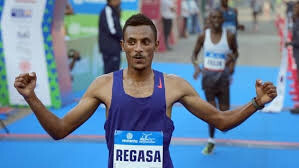
With over 40,000 entries the Vienna City Marathon is Austria’s biggest one-day sporting event and the only road race in the country that features a World Athletics Elite Label. The figure includes entries for shorter races staged parallel to the marathon.
Bethwell Yegon ran a stunning marathon race in Berlin in 2021, when he came from far behind, overtook Ethiopia’s superstar Kenenisa Bekele and almost challenged for victory in the final stages. Yegon finished second and improved his personal best by more than two minutes to 2:06:14. This remains the fastest time of the 31 year-old who trains in Iten, the heart of Kenyan long distance running. “I am happy to return to Vienna and my goal is to fight for victory and take a place on the podium. Hopefully the weather conditions will be fine and there will be a strong group to run with,” said Bethwell Yegon, who clocked 2:06:57 a year ago, which is the fifth fastest time ever run in the history of the Vienna City Marathon.
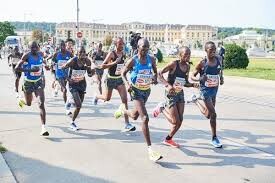
Chala Regasa has already run on Vienna’s roads as well, though in a different role. The 26 year-old Ethiopian was part of the pacemaking team that supported Eliud Kipchoge when he sensationally broke the two hour marathon barrier in 2019. It was a year ago when Regasa finally ran his marathon debut in Rotterdam with a fine 2:06:11 for fifth place. With this time he is currently the fastest runner in the field. Vienna will be his second marathon and his strong half marathon PB of 59:10 suggests that there is some room for improvement. His biggest career win so far came in the New Delhi Half Marathon in 2022, where Regasa clocked 60:30 and beat a strong field.
Felix Kibitok is another runner who features both, a personal best of sub 2:06:30 and a very fast half marathon PB. The Kenyan was fifth in Barcelona in 2022 with 2:06:28 and achieved 59:08 in the Prague Half Marathon back in 2019. On two more occasions Kibitok ran sub one hour half marathon times. Samsom Amare from Eritrea, who won his marathon debut in Abu Dhabi in 2023 with 2:07:10 and was ninth at the World Half Marathon Championships in 2023, plus Kenyans Albert Kangogo (2:07:48) and Leonard Barsoton (2:09:06) could well challenge for a place on the podium as well.
The Vienna City Marathon is one of the last few races during the second half of April giving athletes a chance to qualify for the Olympic Games’ marathon in Paris this summer. The official qualifying time is 2:08:10 and the qualifying window shuts on 30th April. There are a number of athletes who will try to fulfill their Olympic dream in Vienna: Belgium’s Lahsene Bouchikhi has a personal best of 2:08:36 from Valencia last year while Daniel Paulus is the national record holder of Namibia. He clocked 2:08:40 in his debut in Daegu, South Korea, in 2023. Juan Pacheco from Mexico is also expected to try to qualify for Paris. He has a personal record of 2:09:45 while Tiidrek Nurme from Estonia has run 2:10:02.
The Vienna City Marathon will also be hosting the Hungarian national marathon championships for the second time in a row. Around 40 of the best athletes from the neighbouring country will come to Vienna to determine their champions.
(04/03/2024) ⚡AMPby AIMS
Vienna City Marathon
More than 41,000 runners from over 110 nations take part in the Vienna City Marathon, cheered on by hundreds of thousands of spectators. From the start at UN City to the magnificent finish on the Heldenplatz, the excitement will never miss a beat. In recent years the Vienna City Marathon has succeeded in creating a unique position as a marathon...
more...Four ways to be a more consistent runner, according to science
For runners, motivation can be the game-changer between smashing personal bests and falling short. But what exactly fuels our drive when the going gets tough? According to The New York Times, it often comes down to external factors—like a supportive friend, a motivating app or a commitment made to someone else.
Recent research underscores the power of a workout buddy in boosting motivation, especially for those struggling to stay consistent. Whether teaming up with a friend already crushing their fitness goals or mentoring a newcomer, accountability is key. Ready to stay on track with your consistency goals? Here are some snappy strategies to keep you going strong.
1.- Signing up can help (but keep it secret)

For those who thrive on structure, signing up for a race or athletic event can provide the necessary framework to stay on track. However, it’s wise to keep these ambitions close to the chest until you’re well on your way to the finish line. Research suggests that sharing your goals prematurely, particularly on social media, might trick your brain into feeling accomplished without putting in the effort.
2.- Excel with accountability
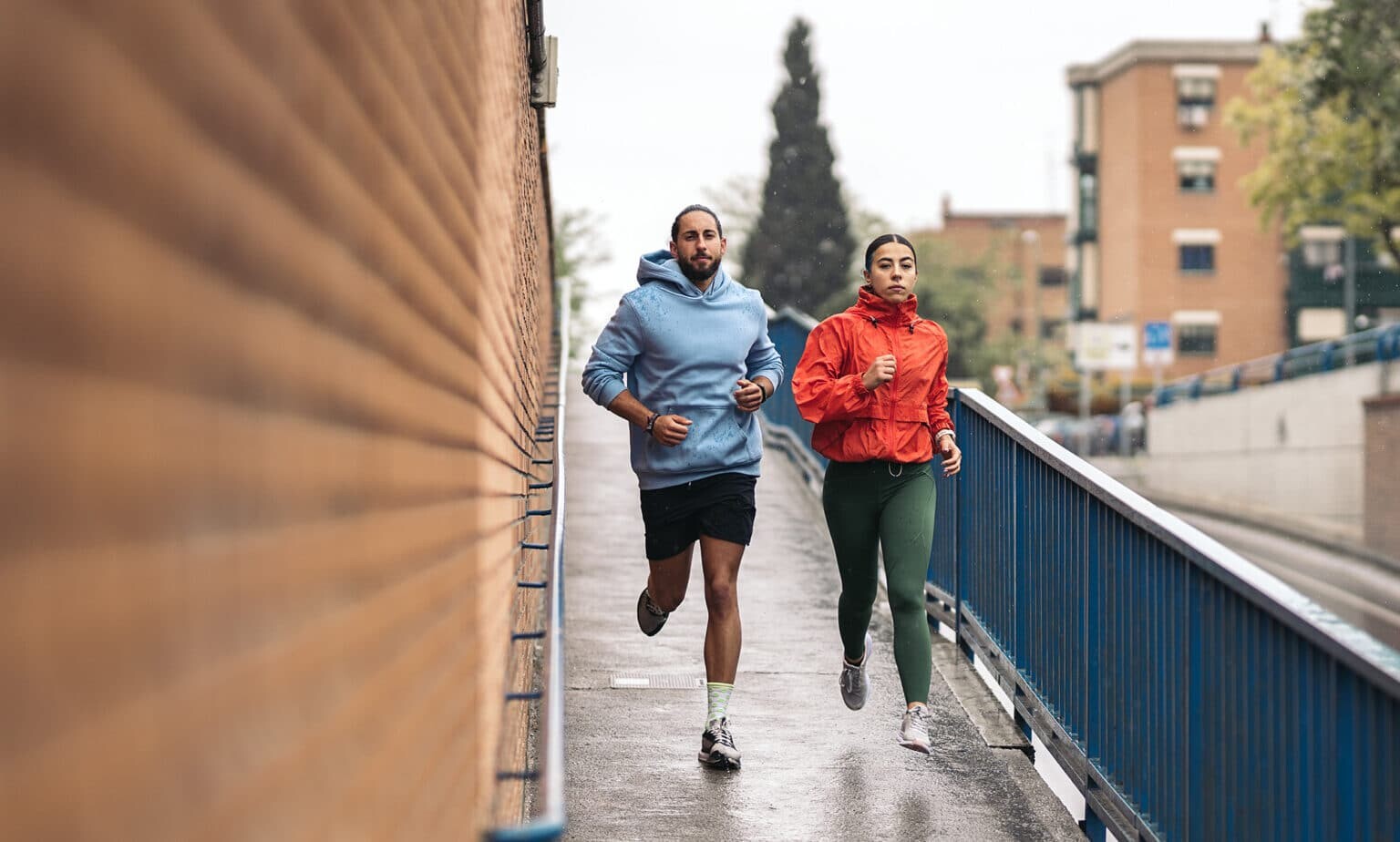
Personal trainers or fitness instructors can also serve as powerful sources of accountability. By committing to attending a scheduled class or session, you’re not just investing in your health but also avoiding the discomfort of flaking out.
Denver-based clinical psychologist Justin Ross specializes in athlete mental health and performance, and says when he coaches newer athletes he experiences the benefit of accountability firsthand: “I’ve got to show up, not just for me but for them as well,” he said.
3.- Paper clips for the win
For individuals who respond well to visual cues, creating a tangible representation of progress—such as a paper-clip chain or rubber band ball—can provide the necessary motivation on those days when motivation is lacking. “On days when you’re really not feeling it,” Ross told The New York Times, these visual reminders “can help provide a little bit of that energy to get you started.”
4.- Money motivates
For those seeking an extra push, some apps offer monetary rewards for meeting fitness goals, turning exercise into a profitable endeavor. By tracking metrics like time or distance through your wearable fitness device, apps like Charity Miles make charitable donations in your name; others offer discounts.
Finding what works for you might require some trial and error. Whether it is finding the right workout partner, setting achievable goals or leveraging external incentives, staying accountable can be the key to unlocking your fitness potential.
(04/02/2024) ⚡AMPby Keeley Milne
Pulse Sports: Kenyan media caught some people with this April Fools' prank
Eliud Kipchoge has not suffered any injury or withdrawn from the Paris 2024 Olympics with the marathon GOAT having put the disappointments of Tokyo behind him.
You might have fallen for our April Fool’s Day story about two-time Olympics champion Eliud Kipchoge withdrawing from the Paris 2024 Games.
Well, the marathon GOAT is very much on the road to Paris as he has not withdrawn or suffered any injury.
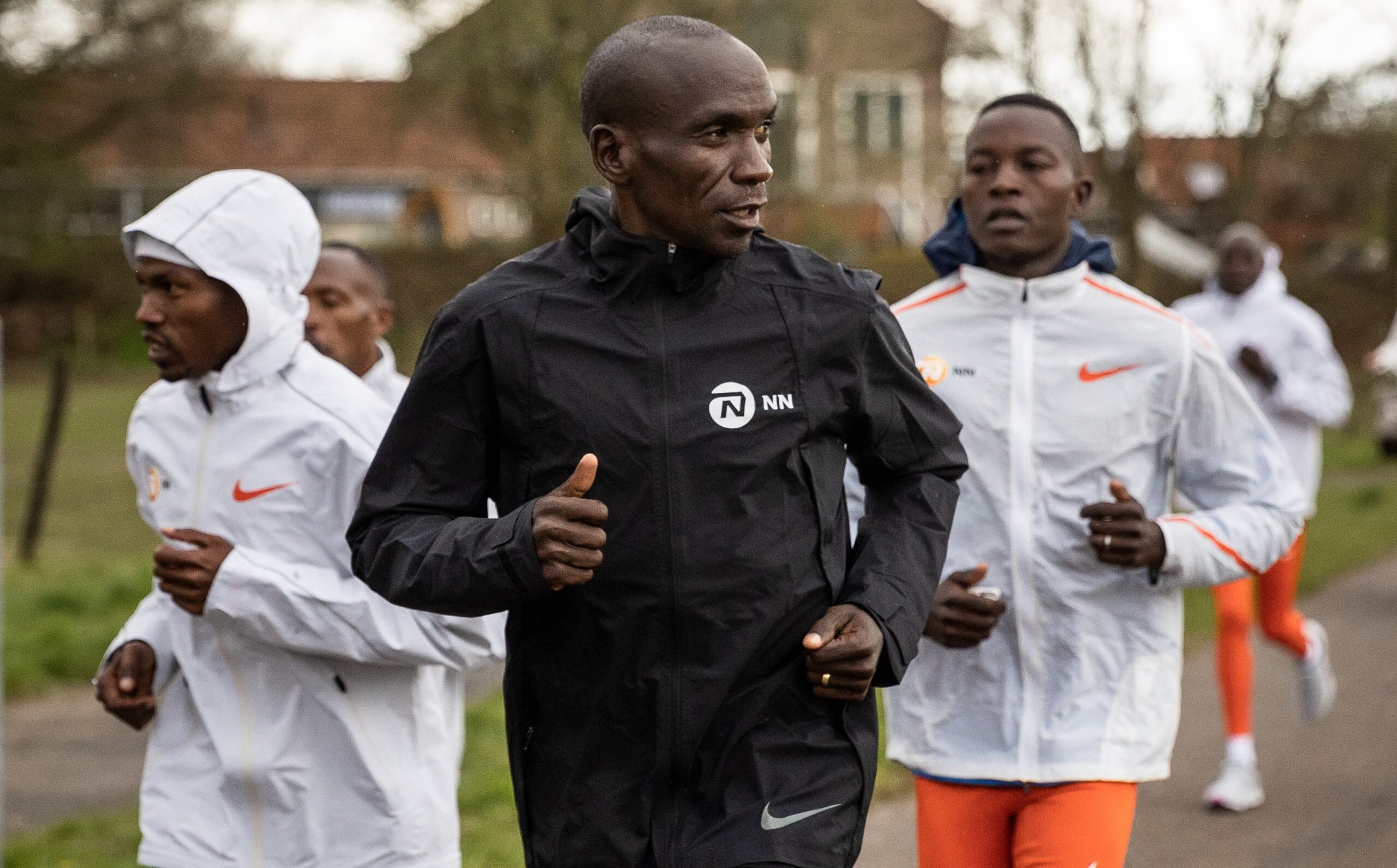
Kipchoge will be heading to Paris with the aim of becoming the first man to win three straight Olympics marathon gold medals and is back in training ahead of the Games.
ipchoge was selected among Team Kenya’s provisional squad for the Olympics alongside with 2024 Tokyo Marathon champion Benson Kipruto, Timothy Kiplagat and Vincent Ngetich, who finished second and third in Tokyo, Bernard Koech, two-time New York Marathon champion Geoffrey Kamworor, Cyprian Kotut, 2022 London Marathon champion Amos Kipruto and Titus Kipruto.

With Athletics Kenya set to add another name to the roster before naming the final three, Kipchoge is hot favourite to be on the list that will head to Paris and he is fully focused on making history in the French capital.
“My aim is to inspire as many people as I can. I am aiming for three gold medals consecutively,” Kipchoge told the LOAF Podcast.
“Back-to-back-to-back. This is in my mind. I will try my best to push myself to win it three times and tell the next generation that longevity is the key and you can make a goal, pursue it and make it happen.”
Kipchoge is coming off a disappointing outing in Tokyo where he managed a 10th-place finish, having started well, something that saw some observers doubt whether he can win Olympics gold.
While he has put the disappointment behind him, he admits the defeat took its toll on him after toiling for so long to ensure he achieved success.
“I have learnt that you can train in a good way, be in a good shape but putting in it practice, something will remain unlocked and disappointments will come in but a coin has two sides but in life, it has three sides, that is thinking big,” he added.
“I did not succeed as far as Tokyo marathon is concerned. I feel disappointed to train for four, five months without getting the real results but it is not the end of life.”
With the marathon being the last event on the Olympics programme on August 11, Kipchoge has four months to prepare for what could be his final appearance at the Games and possibly right the wrongs of Tokyo in Paris.
(04/02/2024) ⚡AMPby Joel Omotto by Pulse Sport
Paris 2024 Olympic Games
For this historic event, the City of Light is thinking big! Visitors will be able to watch events at top sporting venues in Paris and the Paris region, as well as at emblematic monuments in the capital visited by several millions of tourists each year. The promise of exceptional moments to experience in an exceptional setting! A great way to...
more...2 weeks to Boston: tips to prepare
You've started your taper. Here are some things to keep in mind.
April 1 means it’s officially race month for those headed to the Boston Marathon on April 15. If you’ve spent your winter training for the 2024 edition of this storied race, you’re probably starting to think about the final preparations you can make to set yourself up for success on April 15. Here are five tips to consider:
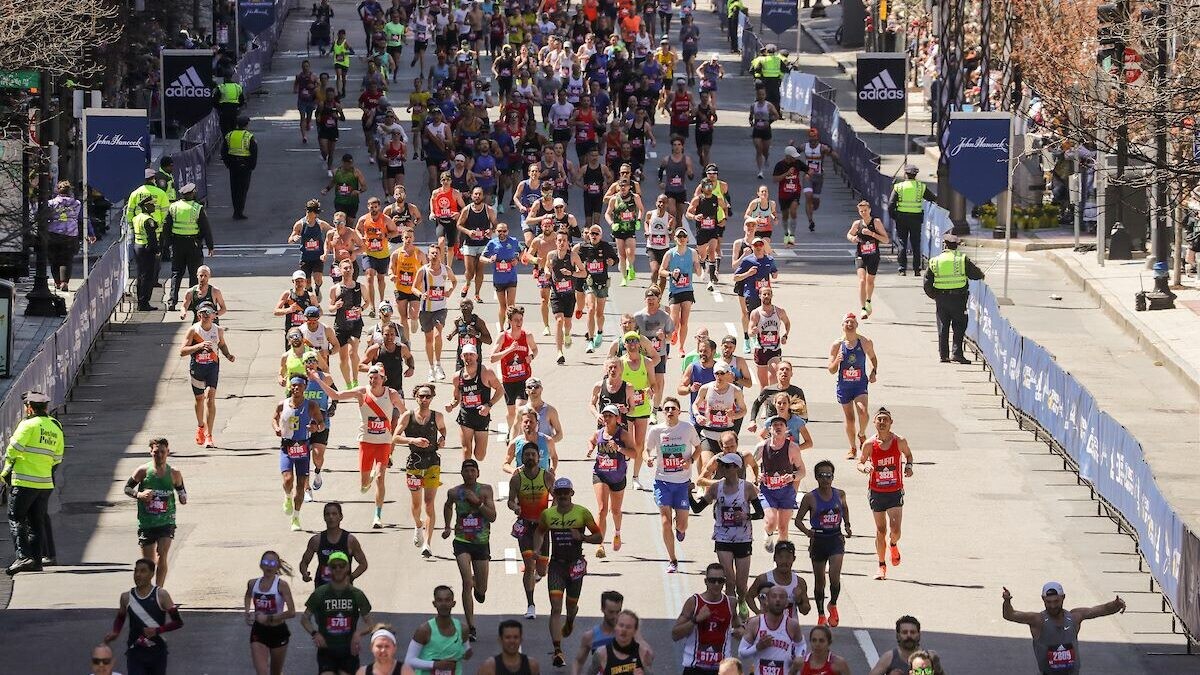
Weather
It’s not too early to start checking the forecast and thinking about how the weather will factor into your race day plans–from what you’ll wear on the bus to Hopkinton to what you’ll run in. Boston in April can bring all types of weather, as we’ve seen on race day many times. As of today, race-day conditions are predicted to be a lovely 15 C, mainly sunny with a low chance of precipitation. While this could change, it appears we can look forward to a near-perfect day for running. However, packing for all conditions is still advised!
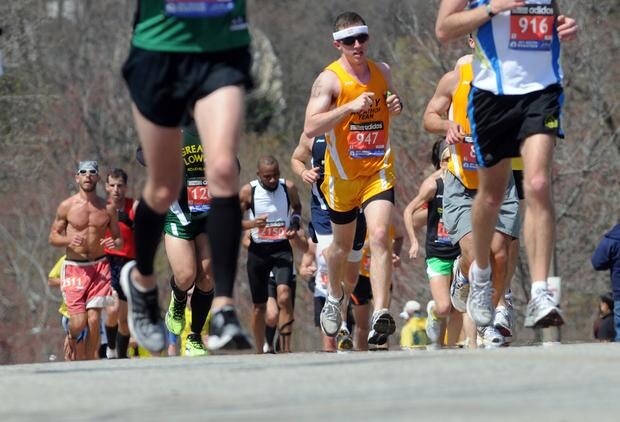
The right mindset
With more time (and energy) on their hands (thank you, taper!), runners often experience feelings of excitement but also stress, doubt and anxiety. This is normal. Reading how the elites handle these emotions can really help. Check out this summary of running mindset tips from some of the greats.
Make a race weekend checklist
Now is the time to locate your registration information, review travel plans, make that pre-race dinner reservation and start to pack. Many runners prefer to travel with their race-day nutrition with them, so ensuring you’ve got the right supplies and some backups will reduce the risk of forgetting anything in the final days.
Prep for the hills
The hard work is done. As runners enter their taper, it’s a good time to start thinking about the unique nature of the Boston course. You’ve probably done lots hill reps in training. As you head into the last two weeks of easier training, now’s a good time to continue practicing some downhill running so the legs get used to what’s coming on April 15.
(04/02/2024) ⚡AMPby Claire Haines
Boston Marathon
Among the nation’s oldest athletic clubs, the B.A.A. was established in 1887, and, in 1896, more than half of the U.S. Olympic Team at the first modern games was composed of B.A.A. club members. The Olympic Games provided the inspiration for the first Boston Marathon, which culminated the B.A.A. Games on April 19, 1897. John J. McDermott emerged from a...
more...American youngster Quincy Wilson reacts after beating Usain Bolt's 400m record
Quincy Wilson has reacted after beating Usain Bolt's and Kirani James' records in the 400m.
American youngster Quincy Wilson has reacted after his scintillating run in the 400m at the Bullis Track sophomore where he was opening his outdoor season.
Wilson stopped the clock in an impressive Personal Best time of 45.19 to cross the finish line first. The time he clocked placed him in the books of records as a 16-year-old where he surpassed the times the fastest man in the world Usain Bolt ran when he was the same age.
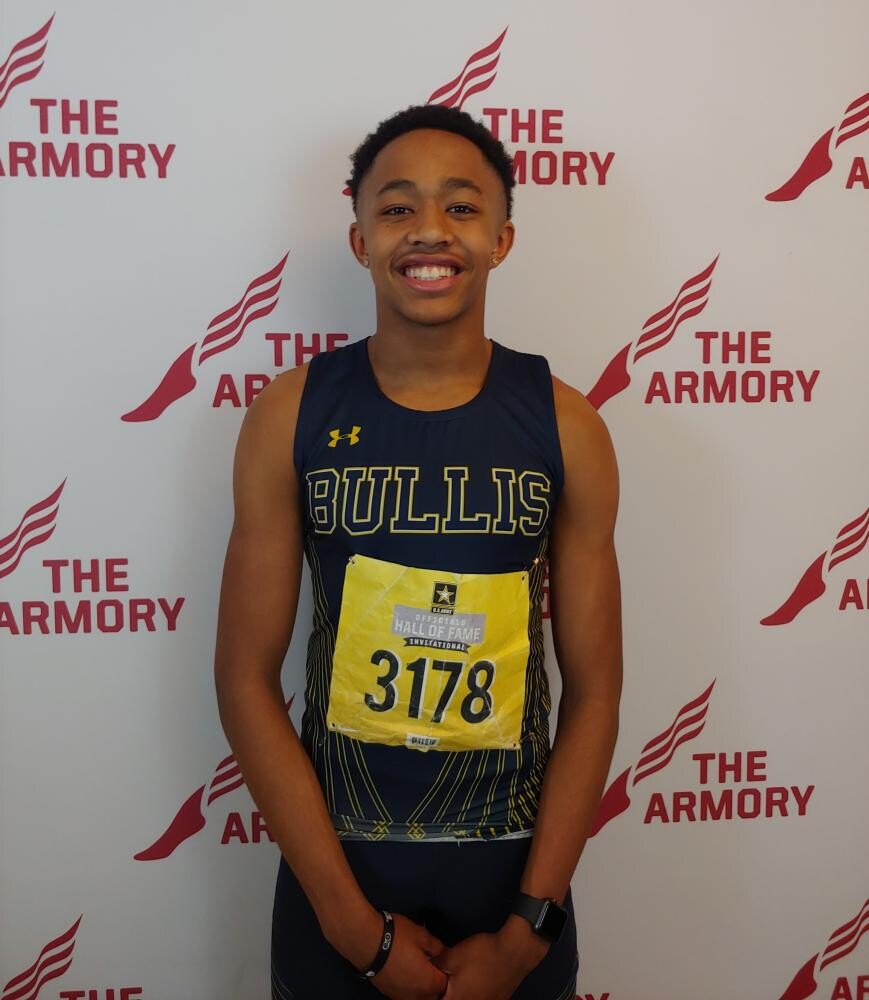
Wilson also beat former Olympic champion Kirani James’ record of the times he would run when he was the same age. At 16, Bolt’s Personal Best time was 45.35 while James had a Personal Best time of 45.24.
“I feel great…I feel like I executed the race pretty well but there are a lot of things that I have to work on. Coming up from one week of training since the indoor, I feel pretty good.
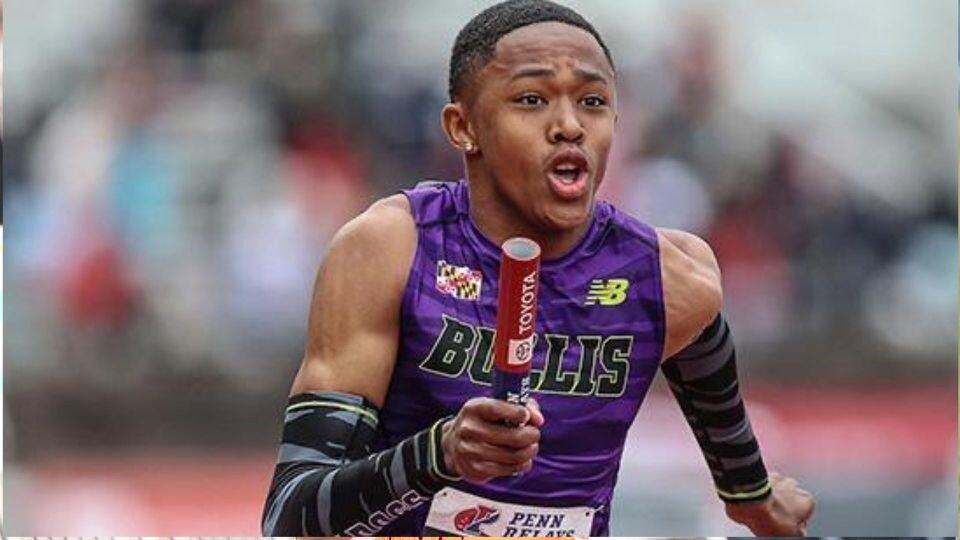
“It’s feeling great coming out here and trying to stay healthy until the end of the season because it’s a long season. I just want to stay healthy and be able to keep getting ready for my craft and things like that and just keep working hard towards the goal,” Wilson said.
He added that this season, he will be targeting the Olympic Games in Paris, France where he intends to make an impact.
“I also want to be able to just run a great race and remain thankful for what I’m able to do. I’ve been watching all those races, studying them, and breaking them down from 50m to 100m…I learn how to execute my race from those videos.
“I don’t really know where I’ll be racing next and I just want to go week by week learning different things and just executing so you never know. I just want to accept the challenge and go with it,” he added.
(04/02/2024) ⚡AMPby Abigael Wuafula
Mary Moraa confirms next assignment in the build up to the Paris 2024 Olympics
Commonwealth Games 800m champion Mary Moraa has confirmed her next destination as she builds up steadily for the Paris 2024 Olympic Games.
Reigning World 800m champion Mary Moraa has disclosed her next stop after a fruitful outing at the African Games where she bagged a gold medal in the 400m and propelled Team Kenya to a bronze medal in the 4x400m mixed relay.
Moraa will be eyeing her maiden appearance at the Olympic Games in Paris, France and also looking for a podium finish in the event which has very strong opponents waiting for her to descend on the starting line.
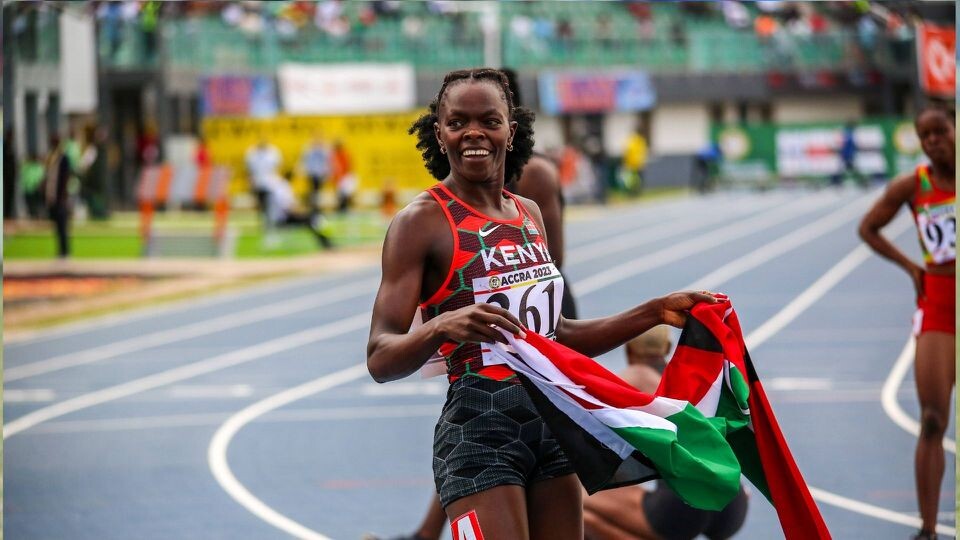
The Commonwealth Games champion has confirmed participation at the Kip Keino Classic, where she intends to showcase fireworks just like last year. This year’s event will be held at the Nyayo National Stadium and the likes of Africa’s fastest man Ferdinand Omanyala and world leader Letsile Tebogo have already confirmed participation.
In a post on her Facebook page, Kisii Express said: “From African Games, I shift my gears to Kip Keino Classic Continental Tour.”
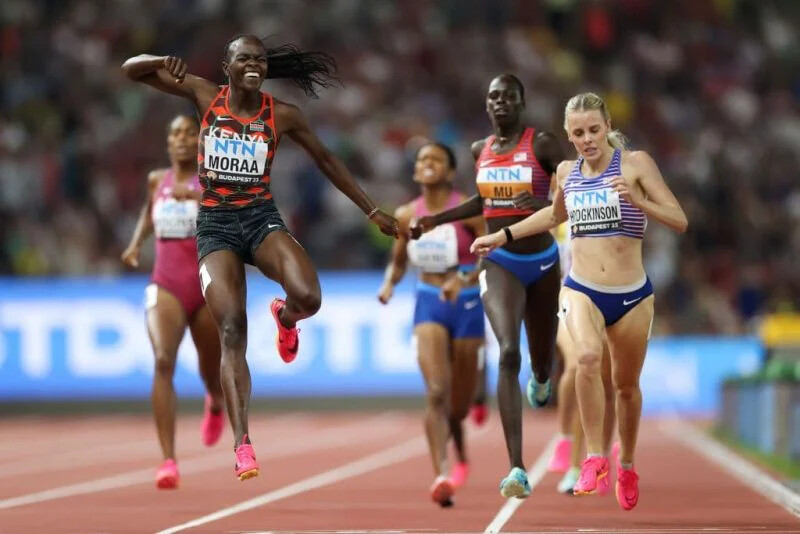
Moraa has been off to a good start to the season and she will hope to enjoy 2024 just like she did in 2023. The Kenyan was only beaten once in the 800m, at the Prefontaine Classic, the Diamond League Meeting final, where she finished fourth.
In the race, Athing Mu won the trophy as Great Britain’s Keely Hodgkinson and Jamaica’s Natoya Goule completed the podium.
This season, she has competed in the 400m unbeaten and her speed seems to be in perfect condition. At the Kip Keino Classic, Moraa will compete in her specialty, the two-lap race.
(04/02/2024) ⚡AMPby Abigael Wuafula
Paris 2024 Olympic Games
For this historic event, the City of Light is thinking big! Visitors will be able to watch events at top sporting venues in Paris and the Paris region, as well as at emblematic monuments in the capital visited by several millions of tourists each year. The promise of exceptional moments to experience in an exceptional setting! A great way to...
more...Kibor turns focus on Ottawa Marathon after ruling Kapsabet race
After winning the inaugural Kapsabet Half Marathon, Marion Kibor's next stop will be the Ottawa Marathon on May 26 in Canada.
Kibor, also the 2023 Paris Half Marathon silver medalist, said the Kapsabet race was part of her build-up ahead of the Ottawa Marathon, where she will seek her maiden win in the 42km distance.
“ I am trying to work on my endurance by racing in some of these events. Last year, I competed in the Amsterdam Marathon and finished eighth. I want to improve on that,” said Kibor.
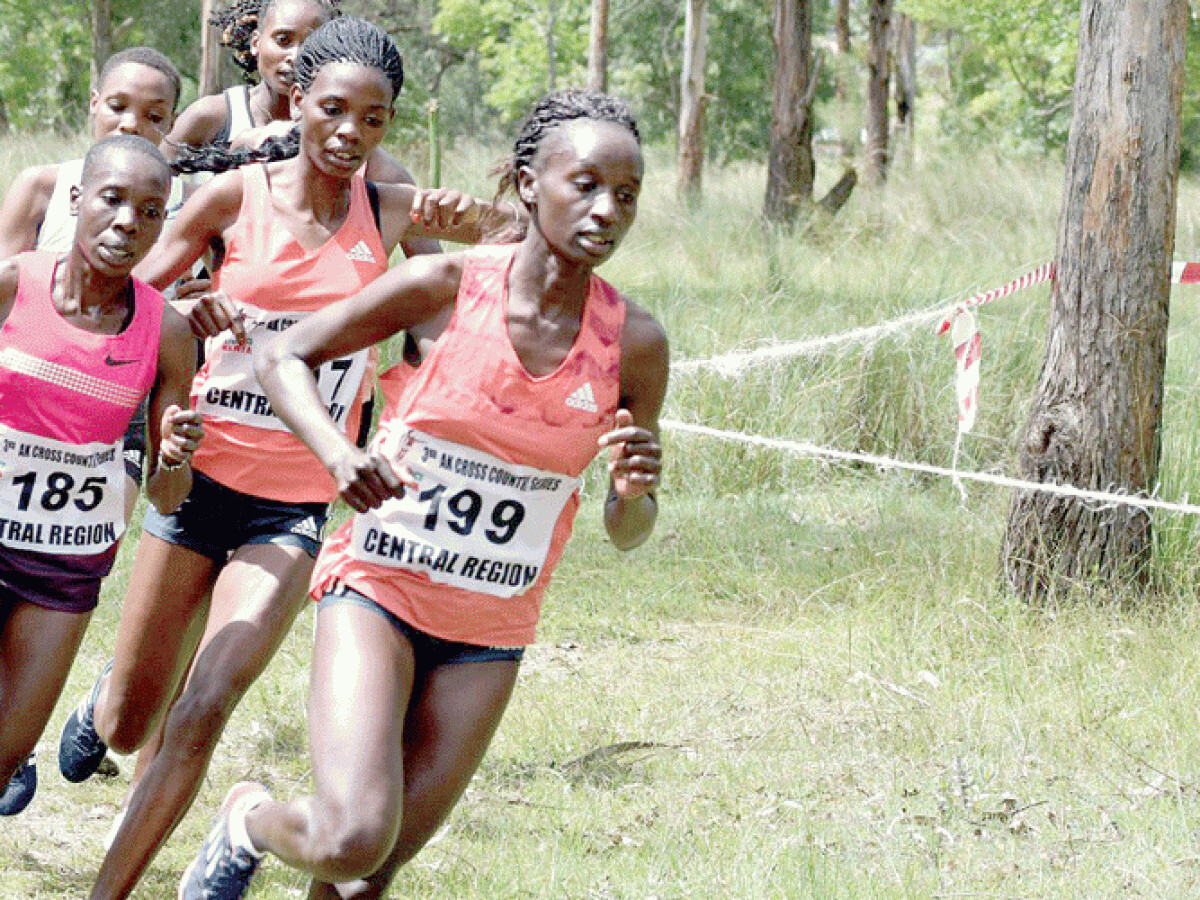
Kibor won the Kapsabet Half Marathon in 71:34.56 ahead of Gladys Songol (73:29.31) and Joan Chepkosgei (74:03.39).
She said she won easily because she trains on the same course. “Since I train here, it was easy for me despite the hilly course posing challenges. I was prepared for this race and the victory did not come as a surprise,” She said.
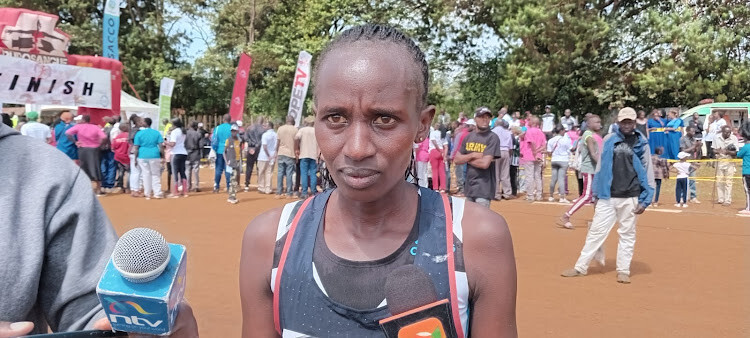
She said such local races are good for the upcoming athletes to build careers. These are the kinds of races they are supposed to use to showcase their talents.
(04/01/2024) ⚡AMPby Emmanuel Sabuni
Ottawa Marathon
As one of two IAAF Gold Label marathon events in Canada, the race attracts Canada’s largest marathon field (7,000 participants) as well as a world-class contingent of elite athletes every year. Featuring the beautiful scenery of Canada’s capital, the top-notch organization of an IAAF event, the atmosphere of hundreds of thousands of spectators, and a fast course perfect both...
more...Robert Kiprop wins Paderborner Osterlauf 10k
Former All-African Games 5000m champion, Robert Kiprop took the top honors at the Paderborner Osterlauf 10k race held on Sunday (31) in Paderborn North Rhine-Westphalia, Germany.
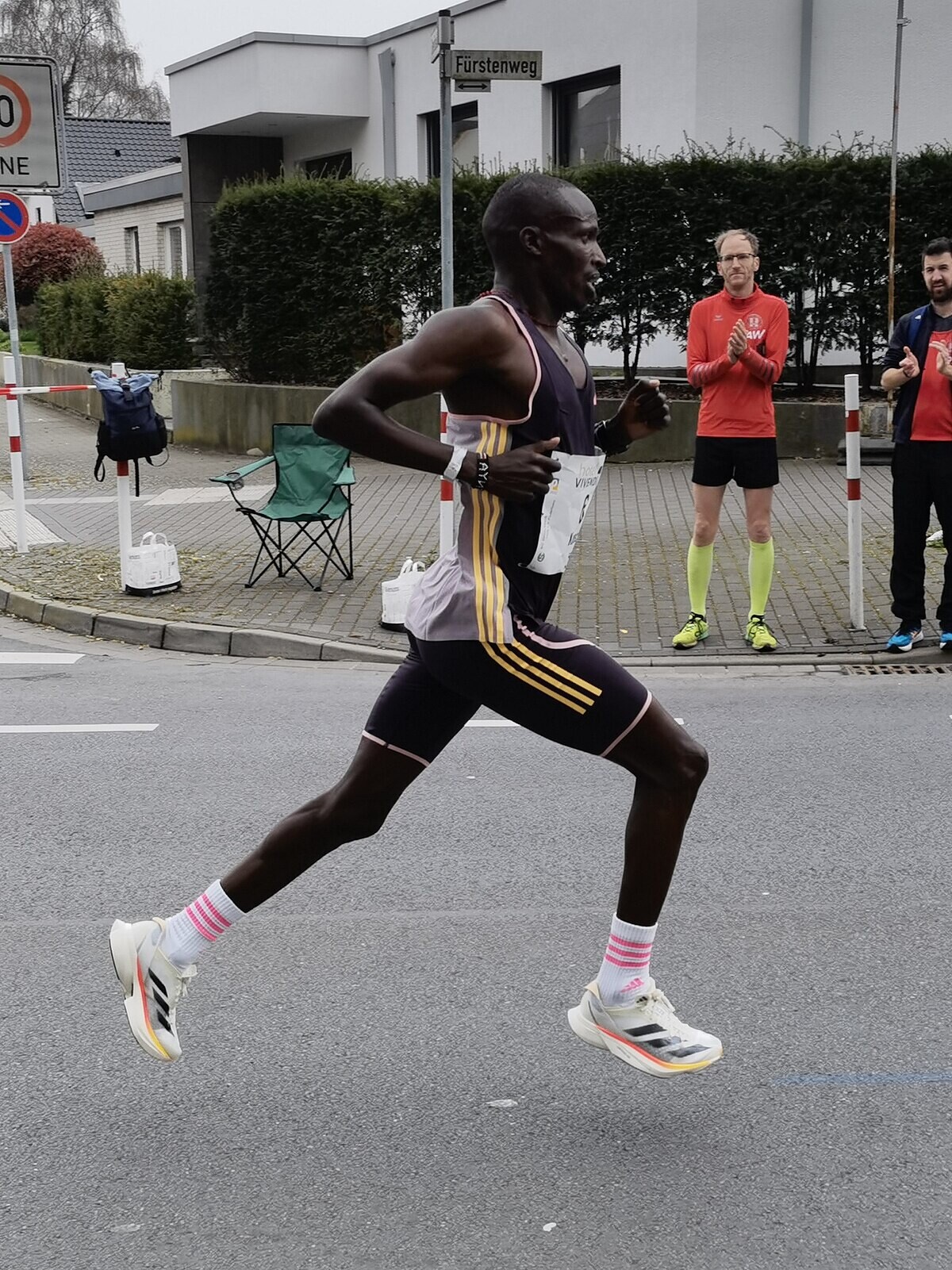
The 27 year-old took the honors in a season best of 27:54 and was followed in second place by Ethiopia’s Kifele Kefyalew in 28:11 with Ireland’s Fearghal Curtin closing the podium three finishes in 28:25.
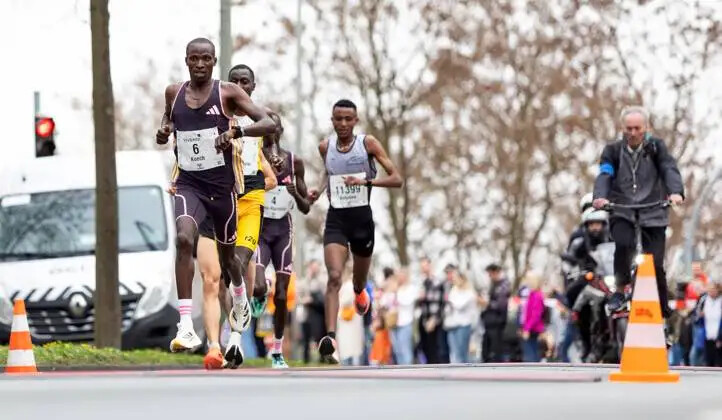
German’s Simon Boch and Vincent Kimutai from Kenya finished in fourth and fifth place tied in 28:37.
LEADING RESULTS
10KM MEN
Robert Kiprop (KEN) 27:54
Kifele Kefyalew (ETH) 28:11
Fearghal Curtin (IRE) 28:25
Simon Boch (GER) 28:37
Vincent Kimutai (KEN) 28:37
Titus Kiprotich (KEN) 29:15
Stephen Mwangi (KEN) 29:16
(04/01/2024) ⚡AMPby James Koech
Paderborner Sterlauf
It is well known that the fascination of running has steadily increased in recent years.But the Paderborn Easter Run has been around for 72 years. It is the oldest street race in Germany, organized by the SC Grün-Weiß Paderborn, enjoys even after so many decades of growing popularity and belongs to many already traditional Easter.There are even runners and helpers...
more...Sawe sets focus on Prague Half Marathon
After what is considered a poor show at the World Athletics Cross Country Championships in Belgrade, Sebastian Sawe will hope to do better when he takes part in the Prague Half Marathon on Saturday, April 6.
He has some days to work harder and be ready for the half-marathon action after finishing seventh in Belgrade on Saturday, March 30, 2024.He has some days to work harder and be ready for the half-marathon action after finishing seventh in Belgrade on Saturday, March 30, 2024.
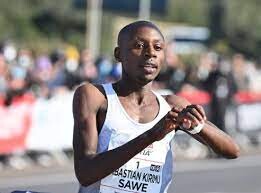
At the World Cross Country, Sawe was one of the favorites, but he faltered as Jacob Kiplimo of Uganda made history by defending the title. However, his seventh place helped Kenya win team gold.
Although, individually, it was not a good performance, Sawe has a chance to right the wrongs in Prague.
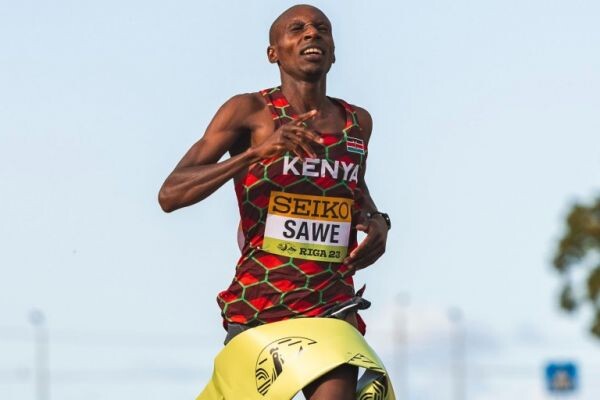
He is the fastest entrant for the Prague action as he enjoys a 58:29 personal best that he achieved at the 2022 Bahrain Royal Night Half Marathon. He will have Geoffrey Kiprotich challenge him as a teammate.
Kiprotich is a sub-one-hour runner on the field with a 59:13 personal best, and Gideon Kiprotich, who holds a 1:00:28 personal best, will also be in action.
Uganda, Kenya's emerging arch-rivals, will be led by Maxwell Rotich, who enjoys a 1:00:06 personal best from last year's Praha Half Marathon.
Although the Ugandan unit is seen as Kenya's main challenger, Ethiopia's Haftamu Abadi Gebresilase (1:00:27) is considered a strong rival too.
In the women's race, Jesca Chelangat and Vivian Melly will carry the flag. Nigistu Haftu of Ethiopia, who holds a personal best of 1:06:17, just 17 seconds shy of Irene Kimais' winning time from last year, will offer Kenyans the needed challenge.
(04/01/2024) ⚡AMPby Kiplagat Sang
Prague Half Marathon
Start the RunCzech season with one of the biggest running events in the Central Europe! Every year the Sportisimo Prague Half Marathon excites spectators with performances of elite athletes breaking records. Enjoy a course with incomparable scenery in the heart of historic Prague that follows along the Vltava river and crisscrosses five beautiful bridges. Take in majestic views of the...
more...Shock as Eliud Kipchoge withdraws from Paris 2024 Olympics
Five-time Berlin Marathon Eliud Kipchoge has released a statement explaining why he will not be defending his marathon title at the Paris 2024 Olympic Games.
In a shocking turn of events, two-time Olympic marathon champion Eliud Kipchoge will not be defending his Olympic title at the Paris 2024 Olympic Games scheduled for later this year.
In a heartfelt message to his fans, Kipchoge announced his withdrawal from the global showpiece. The decision, which has sent shockwaves throughout the sports world, comes as a surprise to many fans and analysts alike.
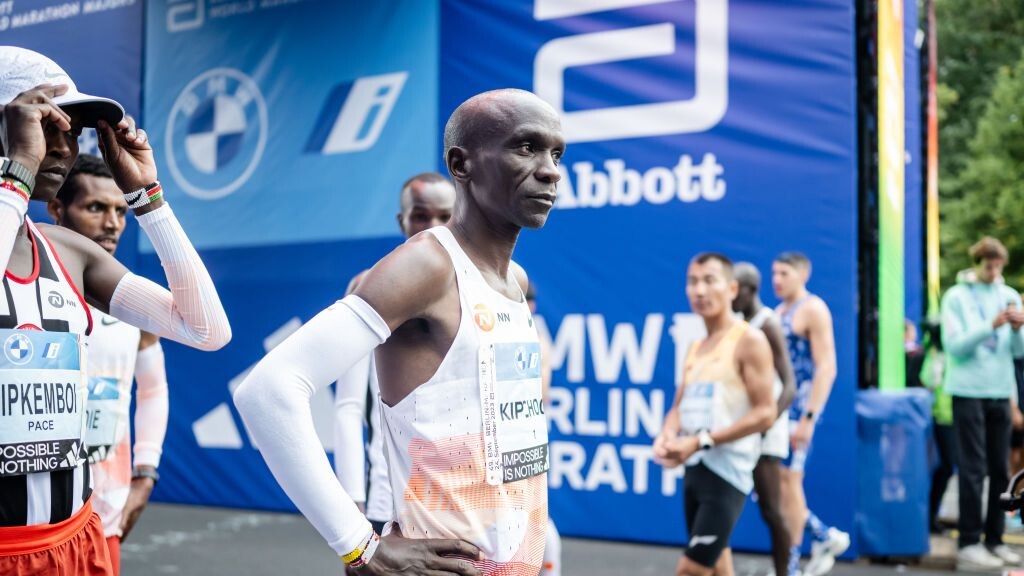
Kipchoge cited personal reasons, noting his desire to focus on other endeavours. The five-time Berlin Marathon champion issued a statement earlier today expressing his gratitude for the support he has received throughout his career, but also his need for a change in direction.
"It is with a heavy heart that I announce my decision to withdraw from the Paris 2024 Olympics. Competing at the Olympics has always been a great thing and I was looking forward to winning my third successive title.
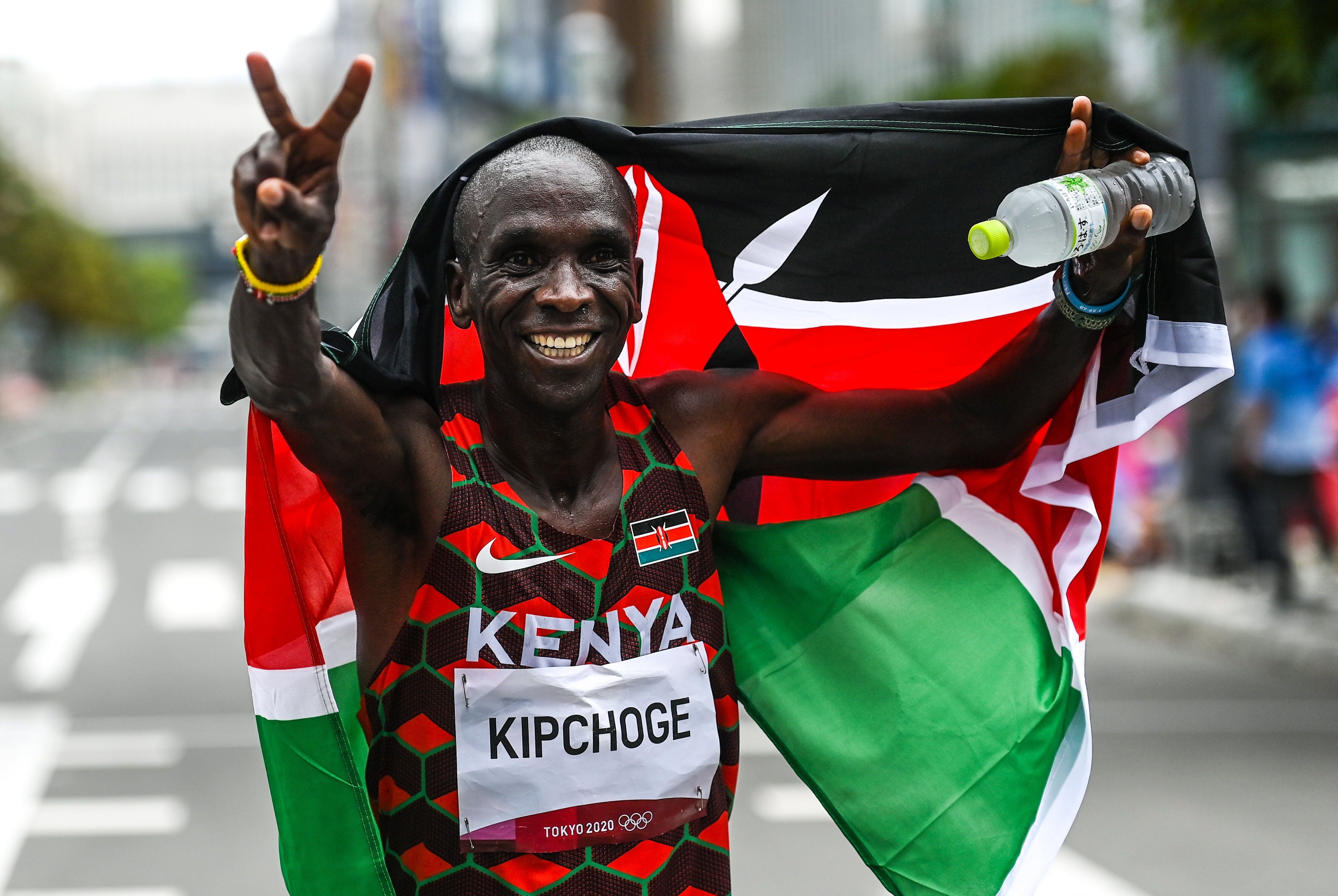
“However, at this juncture in my life, I feel compelled to explore new opportunities and challenges,” a part of the statement from the four-time London Marathon champion read.
Kipchoge has achieved so much on the track and the roads with numerous accolades to his name, including multiple Olympic medals and a world record to his name that was shattered by the late Kelvin Kiptum at last year’s Chicago Marathon.
Kipchoge has long been regarded as one of the greatest marathon runners of all time and his decision has not been taken lightly by his fans who were hoping to see him descend on the start line one more time.
Fans of the sport have taken to social media to express their disappointment at the news, with many expressing their admiration for Kipchoge's accomplishments and wishing him well in his future endeavours.
While Kipchoge's absence will undoubtedly be felt at the Paris 2024 Olympics, the event is expected to showcase a new generation of talented athletes vying for glory on the world stage.
(04/01/2024) ⚡AMPby Pulse Sport
Paris 2024 Olympic Games
For this historic event, the City of Light is thinking big! Visitors will be able to watch events at top sporting venues in Paris and the Paris region, as well as at emblematic monuments in the capital visited by several millions of tourists each year. The promise of exceptional moments to experience in an exceptional setting! A great way to...
more...High School Cross-Country Runner Mistaken for Bigfoot
“It moved so fluently with little arm movement, unlike a human running,” a passing motorcyclist said. “It easily was 10 feet tall.”
Recently, the Bigfoot Field Researchers Organization (BFRO) investigated a sighting of the eponymous cryptid near Ground Mound in Washington state. The sighting, by a group of motorcyclists passing through South Thurston County, involved spotting a figure running on a ridge half a mile ahead of them.

According to the report given to the BFRO, “It was very large and human-shaped. It was one color, tan/brown, moving across very rugged terrain, making a beeline for the tree line.”
The group watched the figure run for 30 seconds before it left their vision.
“It moved so fluently with little arm movement, unlike a human running,” the motorcyclist said. “It easily was 10 feet tall for us to be able to see it from so far away.”
After the story of the biped’s sighting was reported in The Chronicle and shared thousands of times via social media, the paper received an email from a Rochester High School student.
Gunnar Morgan, a cross-country runner, self-identified himself as the creature. “That Sasquatch running was me,” Morgan said in an email to the paper.
In the email, Morgan, who is not 10 feet tall, explained his case of mistaken identity. “My cousin and I are adept cross-country runners and live in the area and run often in that exact wilderness area,” he said. “The reason we appeared larger than usual is because we were running side-by-side, and we run extremely fluidly compared to most people.”
Morgan’s Garmin GPS watch provided data that showed he and his cousin were running along the same ride at the same time the sighting occurred.
“We were running fast and headed for a tree line,” Morgan said. “I can pinpoint exactly where the motorcyclists must’ve spotted us and where we must’ve been … I stand 6-foot-1, and from a distance, we could be mistaken for a larger creature.”
While Washington State tops the nation in what the BFRO deems “credible” bigfoot sightings, with 708, Morgan himself says he has never seen the mythical creature while running in the area but loves the attention it has brought.
“I think this story is all very funny,” Morgan added.
(03/31/2024) ⚡AMPby Runner’s World
Texas 16-Year-Old Breaks Two High School 5K Records
Elizabeth Leachman ran 15:28 for 5,000 meters indoors and 15:25 outdoors—but she’s taking the long view.
Elizabeth Leachman has built an impressive running résumé during her first two years of high school. Last December, the sophomore won the Foot Locker Cross Country Championships in San Diego in 16:50, finishing 14 seconds ahead of the second-place runner.
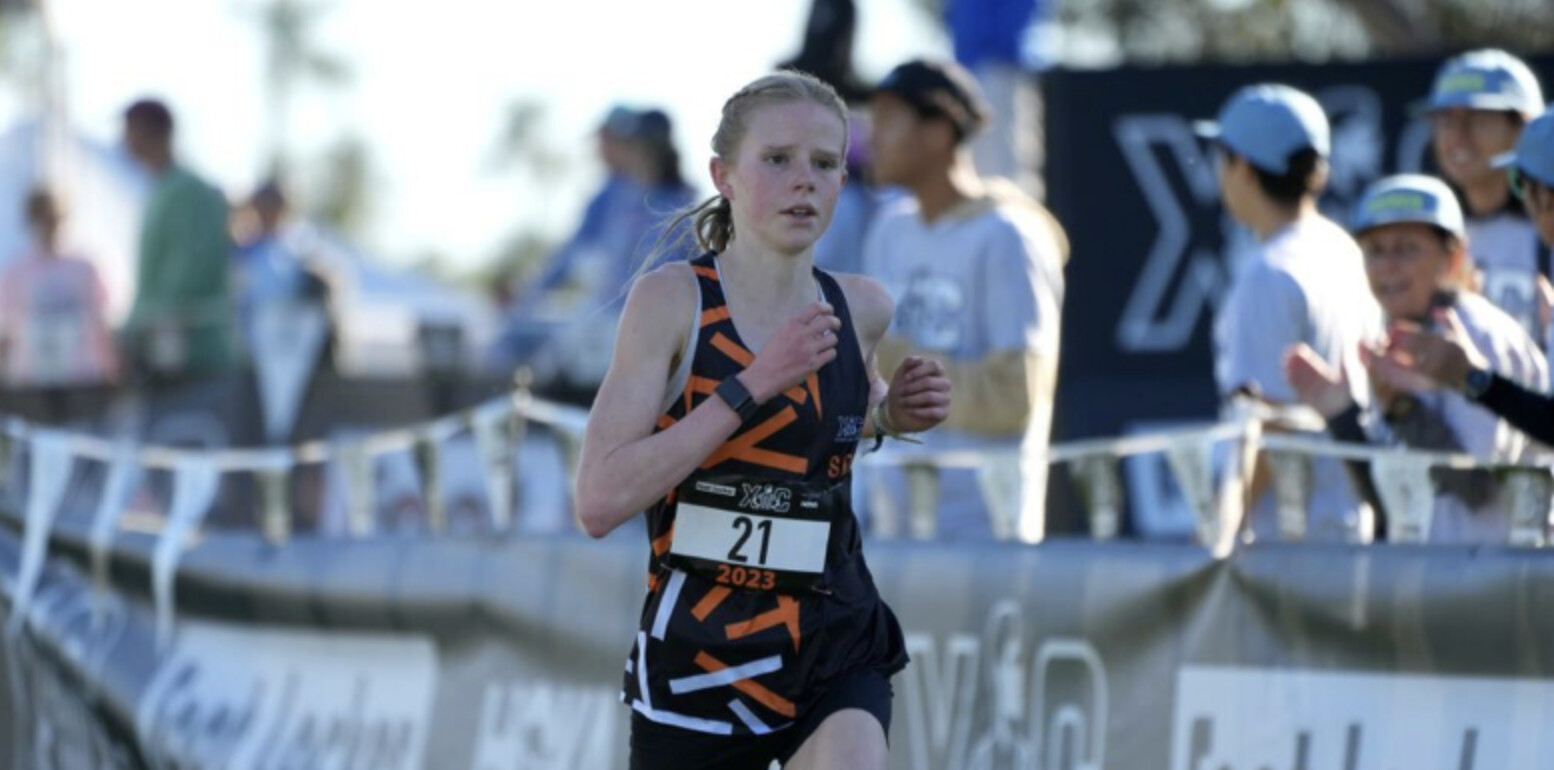
She made headlines on March 10 at the Nike Indoor Nationals meet in New York, when she broke an indoor track record for previously held by Katelyn Tuohy. Leachman, 16, ran 15:28.90 for 5,000 meters, bettering Tuohy’s high school record (15:37.12), set in 2018, by more than 6 seconds. Leachman averaged 4:59 per mile.
Then on March 28, she ran the 5,000 meters at the Texas Relays and took an additional 3 seconds off. Her time, 15:25.27, broke Natalie Cook’s high school record (15:25.93) from 2022.
Her coach, Jenny Breuer, doesn’t care about any of that. She just wants her athlete to run even splits.
Leachman, who goes to Boerne Champion High School, in Boerne, Texas, a suburb of San Antonio, knows her pacing can be a weakness. But she’s working on it.
“That’s definitely been a struggle for me,” she said. “I really like to go out hard and just kind of get after it. But I pay for it at the end, for sure.”
That’s why according to Breuer, the 5,000-meter record wasn’t even the most important race Leachman ran at the Nike indoor meet. Two days earlier, Leachman won the 2-mile in 9:44.16, splitting 5:03 for the first mile and 4:41 for the second.
The 4:41 was (unofficially) a mile PR for her. It also proved to her that she didn’t have to lead. Leachman has had some poor (for her) races after going out too hard, most notably at Nike Cross Nationals last fall, the week before her Foot Locker win, when she rocketed out to a 17-second lead in the early miles before fading to 15th place.
“You can’t keep doing the same thing and expecting a different result, so [for the 2-mile] we really just talked about waiting for the 1200, six laps in, then go,” Breuer said. “She likes to lead. It stresses her out not to lead. I think that gave her a lot of confidence she could race differently and still win.”
Breuer says Leachman is easily the most talented athlete she has had in 28 years of coaching college and high school athletes. But she spends most of her time holding Leachman back.
After she contended with hip bursitis and tendinitis in her hip and hamstring as a freshman, Leachman embarked on a vigorous cross-training regimen, alternating sessions of pool running, the elliptical machine, and the ARC trainer.
Her weekly schedule is similar to that of Parker Valby, the University of Florida star who is a four-time NCAA champion. Leachman’s routine includes only three or four days each week of running, for about 30 miles total. She’ll do a 90-minute session of cross-training on the days she doesn’t run, and on the days she does, she’ll put in an extra 30 minutes of cross-training after the workout.
A typical week, Breuer said, will include a long run, a threshold run or intervals, and a shorter interval workout. The long run is usually 9–11 miles. She tried to have Leachman run by time, but she ended up running too fast and too far, so they went to a mileage limit.
A recent threshold workout was 4 x 1 mile at about 5:10 pace, with a one-minute recovery between miles. The speed day was 4 x 600 meters with a 200-meter float between each. She never does more than a mile for warmup or cooldown, so that workout totaled less than 4 miles.
They’ve also spent a lot of time doing 200s in 36 seconds and 400s in 72. Breuer will sometimes have Leachman do those after the main part of the workout, just to get the feeling of the pace she should not exceed.
“If you have to take the lead, do not go faster than 36 or 72,” Breuer said she instructed Leachman before the 2-mile. “Do not run a 68. Please.”
The coach and the runner sometimes challenge each other. Leachman wants to do more. Breuer wants her to stay healthy and develop over time. “I’m always pulling her back,” Breuer said. “Err on the side of caution.”
For all the unusual ability Leachman has—a powerful aerobic engine, the discipline to work hard at cross-training—there’s one thing that she doesn’t have that most 16-year-olds do: an Instagram account.
That’s been a deliberate choice on the part of Leachman and her parents, who don’t want to see their daughter swept up into the frenzy and pressure that can sometimes descend on young, female runners. (See: Tuohy and Valby.)
“I think if it was fully up to me, I probably would have it,” Leachman said. “But my parents don’t want me to, and I’m okay with it. I haven’t really fought it.”
When she was at Nike Indoor Nationals in New York, it was the first time she had encountered fans who wanted to take pictures with her. It wasn’t too weird, she said. “It was mostly other high school girls and then a couple of younger girls,” she said. “It was sweet. I never expected that.”
The social media moratorium is a way to keep Leachman’s high school experience as typical as possible. She maintains a perfect GPA. She works occasional shifts at a gym after school, staffing the front desk or the babysitting area, where parents drop their kids while they work out. She likes to be with her teammates, helping score points for Boerne Champion, even though she does many of her workouts alone or with the boys’ team during cross-country season.
She follows what’s happening in pro and college running, but not obsessively. She knew Valby ran 14:52 in winning the NCAA indoor title—“insane” Leachman called it—but then she didn’t give it much more thought.
“Because running is important to me, it’s the focus of what I’m doing a lot of the time,” she said. “When I’m away from it, I try not to make my whole life focused around it, so that I can be more balanced in general.”
The adults in Leachman’s life sound a constant drumbeat: You are more than your performances.
“We talk a lot about external expectations, and just because you’re good at running doesn’t mean that it’s everything that defines you,” Breuer said. “That’s what’s really hard, I think, for a 16-year-old to remember sometimes when the spotlight is on. I try to remove that pressure as much as possible and remind her that this is supposed to be fun.”
There is plenty of time for all the extras. Leachman will have to wait to see if her 15:25 gets her entry into the Olympic Trials this summer, but Breuer is playing the long game.
“She has a really good perspective,” Breuer said of Leachman. “Her parents have done a super job. And also, I say, ‘I want you to be an amazing college runner, I want you to be an amazing professional runner, if that’s what you want to do. We don’t want you to peak in high school. That’s not the goal.’”
(03/31/2024) ⚡AMPby Runner’s World
6 Ways to Be a Great Training Partner
These 2024 Olympians know how to help each other while keeping it fun.
Pianist Harold Mabern said that jazz is “competition without animosity.” He might well have been describing the running relationship of Conner Mantz and Clayton Young, who finished first and second, respectively, at the U.S. Olympic Marathon Trials in February.
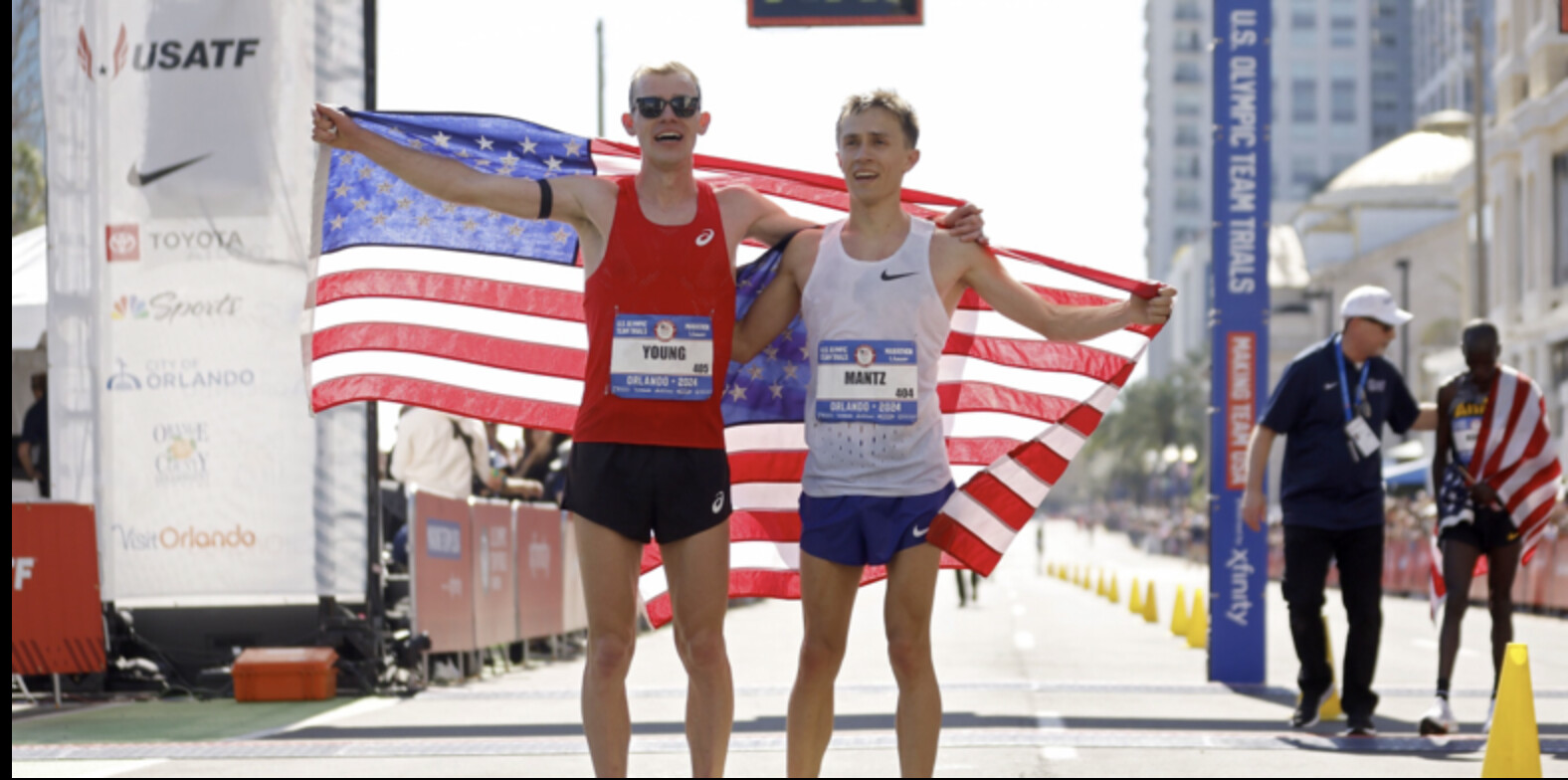
That Mantz and Young are not just two guys who run together, but true training partners, became obvious over the second half of the Trials race. Zach Panning, who wound up finishing sixth, took the lead in the sixth mile and dropped the pace by more than 10 seconds per mile. Mantz and Young tucked in; by the 19th mile, when they were Panning’s only company, they slapped each other’s hands in an apparent celebration of making the team.
When Panning started to slow a few miles later, Mantz and Young pushed on ahead. With two miles to go, Mantz was visibly struggling. Young, looking great by comparison, repeatedly talked to Mantz and stayed with him rather than running the faster pace he looked capable of. In the closing strides, Young eased back as an exhausted Mantz heaved himself over the finish line, one second ahead of his training partner.
Seven years earlier, their first run together was also memorable. Both are members of the Church of Jesus Christ of Latter-Day Saints (LDS), the largest Mormon denomination. Many LDS members go on a one- to two-year mission in their late teens to early 20s. Even for members who are top athletes, the mission is primary; most do little to no training and gain a significant amount of weight.
In 2017, Mantz returned from his mission weighing 150 pounds, compared to his usual 120. A little more than a month later, down to 140, he showed up for his first day of practice with the Brigham Young University team. The group was doing an 8-mile tempo run a little slower than 5:00 per mile. “I held onto the pack for as long as I could,” Mantz recalls. “I almost made it 5 miles until I had to slow down.”
Young, who was in the pack, says, “When Conner stuck with us past halfway, I thought, ‘Oh my gosh, he’s only a month and a half off his mission. Conner is the real deal.’”
They began training together regularly in 2019, the year when Young went pro after winning the NCAA 10,000-meter title. Young remained in Provo to train under BYU coach Ed Eyestone, a two-time Olympic marathoner. While at BYU, where he won two NCAA cross country titles, Mantz mulled going pro. He initially stayed in Provo, but thought that he would soon move and join the Oregon-based Bowerman Track Club or another group. Instead, a few months became several months, then several months became a year. After Mantz ran 2:08:16 at the 2022 Chicago Marathon in his debut, he thought, “Alright, this is working.”
That’s an understatement. Here are six takeaways about being good training partners from Mantz and Young, who will run the Olympic Marathon in Paris on August 10.
Find people with similar goals and outlooks
Since their build-up for the 2023 Chicago Marathon, where both PRed (Mantz 2:07:47, Young 2:08:00), they’ve had near-identical competitive schedules. Mantz and Young typically run together six days a week. They do their main run of the day in the morning. Depending on their schedules, the two, who live a few miles away from each other, sometimes also meet for their shorter afternoon run.
Why don’t they run together seven days a week? Both run their 100-plus-mile weeks while devoting Sundays to their faith. Being an outlier in that regard was one reason that Mantz decided not to join a more formal pro group. “I knew nobody else would be taking Sundays off,” he says, “and that added to the list of reasons to stay here.”
Good training partners help you get more out of yourself
Mantz is a notoriously hard trainer. Young is probably better aware of that than anyone else.
“My best workouts are keeping up with Conner, but Conner’s worst workouts are staying with me,” Young says. “I can’t remember the last time I dropped him in a workout or a long run. That’s one of the beauties about working out with Conner—you really do get pushed to your limit. My workouts with Conner are usually far better than they would be by myself. I just have to make sure I don’t go too hard.”
But pace-pushing Mantz also benefits from having Young to gauge himself by.
“For the most part, I would be way worse on my own,” Mantz says. “I can put a lot of pressure on myself and run too fast early on. I’m all about, ‘Let’s run faster than we did at this point last build-up.’ I see it as I want to get better every day. It’s a little difficult, because I may have gone a little too hard in workouts over the last few years, and so now to even match what I did a year or two ago is quite difficult.”
Compare yourself to you, not your training partners
“There are definitely workouts where Conner is totally trashing me the last interval,” Young says, “and I just have to say, ‘Okay, I did what Coach said and I’m faster in February 2024 than in February 2023. I just really need to compare myself with myself.”
If, like Young, you have a training partner who likes to hammer, do like Young and listen to what your body is saying on that day.
“Typically, Coach will give us some splits he thinks we should start at,” Young says about hard workouts. “But it’s not uncommon for Conner to go faster than those splits, and so I have to do these mental gymnastics of, ‘Do I go with Conner or do I do what Coach said?’ Conner and I are obviously really competitive, and you get a lot of confidence training with one of the best athletes in the marathon, so should I stick with what feels good and with what Coach said, or should I try to close this gap and run with Conner? Sometimes I do, sometimes I don’t.”
Share both the joys and the struggles
As pros, Young and Mantz are unlikely to come up with reasons to blow off runs. But we all need an occasional pick-me-up.
“If I’m not feeling good during a workout, I turn to Clayton and say, ‘You’re leading the next one,’” Mantz says. “And he’s always like, ‘Alright, I’ll help out,’ even if he’s also having a bad day.”
For many of us, meeting our running partners doesn’t just help us get out the door. Doing so is often a dependable source of pleasure. That’s as true for Olympians as it for the regular runners. “I just get excited sometimes thinking about the camaraderie and that I get to run with Clayton today,” Mantz says.
Acknowledge irksome behaviors but keep them in perspective
Some days with your training partners won’t be exciting or fun. You might even find yourself wishing you were running alone. But as with a romantic partner, it’s the overall quality of the relationship that matters.
“There are times I’m like, ‘Conner, why did you go that fast? I thought Coach said to do this,’” Young says. “I can get frustrated. But at the end of the day, it’s making me faster. As long as I recognize that balance and look at the big picture, having Conner with me as a training partner far outweighs the little frustrations that I have every now and then.”
Use your time together to improve your lives
Like a lot of us, Young and Mantz spend a good amount of their running time talking about running—how their most recent workout went, what races they have coming up, how the BYU team and other top runners are doing, what the weather will be like on their next hard day. But, says Young, “we’re kind of unique professional runners in that we have a lot of stuff going on outside of running. So we’ll also talk about family, real estate, investments, taxes.”
Mantz, who at age 27 is three years younger than Young, has used a lot of their run time to discuss marriage. “That’s the biggest benefit of having Clayton as a training partner—asking questions and getting advice on things like adjusting to having somebody in your life at a new level,” he says.
Young, who had knee surgery less than a year before making the Olympic team, says, “We’ve gone through some tough stuff. We’ve been able to lean on each other a lot. Our runs together are often like a therapy session.”
(03/31/2024) ⚡AMPby Runner’s World
Early Morning Race Start? Here’s How to Reset Your Sleep Schedule
Training plans include time and distance on your feet, but rarely do they block out time in bed—maybe it’s time they do.
At first glance, the start times of most marathons—around 9 a.m. or 10 a.m.—seem easy enough. But when you factor in travel and wait time, runners often have to leave their home or hotel rooms before dawn to get to the start. That leaves typical sleep schedules in the dust.

“I had four races last year and all of them required getting up as early as 3:30 a.m.,” Joe English, elite-level master’s multi-sport athlete and former national coach for the Leukemia and Lymphoma Society’s Team-In-Training program, tells Runner’s World. Especially for the bigger races, where there are a lot of logistics involved, it’s necessary to get up and race super early.
So if you need to reset your sleep schedule before a race to accommodate those pre-dawn times, how do you do it and how long will it take?
Why You Should Reset Your Sleep Schedule
“Sleep used to take a back seat to exercise and nutrition, but in the past decade, we’re starting to realize that it’s really a tripod when it comes to athletic success,” James Maas, Ph.D., author of Sleep to Win: Secrets to Unlocking Your Athletic Excellence in Every Sport tells Runner’s World. “I have personally seen runners who adjusted their sleep and nothing else and have greatly improved their running as a result.”
Extensive research confirms this observation. A systematic review published in Sports Medicine in 2023 about sleep and athletic performance, found that while elite athletes feel rested with eight hours of sleep every night, they often sleep less than seven. Long travel and resting in unfamiliar environments often disrupted their sleep, as did the same things that keep many of us awake: social demands, work and family commitments, and lifestyle choices like diet.
The researchers also found, though, that extending sleep by about 45 minutes to two hours, rather than napping, improved both sleep quality and performance, as shown by metrics like strength and power.
To gain the same benefits, here’s how long it takes to reset your sleep schedule in order to wake up early for a race and how to make it happen so you’re ready for a solid performance.
How to Reset Your Sleep Schedule
If there is a race in your schedule that involves travel crossing time zones, both experts say it takes up to four weeks to adjust your sleep schedule, so start planning for that new wake-up time well in advance.
Here’s what you should do to adjust:
1. Set an Alarm—for Bedtime
You may have the best intentions to go to bed at a reasonable hour, but then OME (One More Episode) Syndrome sets in. Set an alarm to tell you it’s time to wind down.
Consider taking 30 minutes to an hour to move from your couch to your bed, giving yourself enough time to take care of that process. “I have an alarm that goes off at 9:15 every night and that’s when I know to start my wind-down time no matter what,” Ryan Hurley, a sleep performance coach and former ultramarathoner and Ironman racer tells Runner’s World.
2. Create a Consistent Routine
Part of good sleep hygiene—creating the ideal environment for getting a good night’s rest—is consistency. “If your focus is on having a regular sleep cycle all the time, an early race is going to have less of an impact, because you’ll be better rested [overall] and therefore more capable of dealing with that bump in the road,” says English. To help keep him consistent, English sets his lights to automatically dim at the same time in the evening to cue his bedtime.
3. Write Tomorrow’s To-Do List
Writing down your to-do list for the next day before you go to bed can help keep nighttime ruminating at bay. “By writing it down, you’re making space for it but you’re not bringing it into the bedroom with you to worry about,” says Hurley.
4. Act as Your Own Sleep Detective
Tracking your sleep can change your rest game in ways you don’t even yet realize, says Hurley. “I always thought that I was getting enough sleep because I was getting seven hours, and the common recommendation is seven to nine hours,” he says. “But it wasn’t until I started tracking my sleep that I realized I wasn’t getting enough REM sleep.”
“I’ve found that people aren’t very good at judging how much sleep they got,” Maas adds.
To assess your rest, ask yourself these questions: Do you tend to feel tired when you’re in a warm room, a dull meeting, have a heavy meal, or after a couple drinks? Do you typically fall asleep within five minutes of hitting your pillow? Do you sleep extra hours on the weekend? Do you need an alarm to wake up? If yes to any of these, you probably need more rest, he says.
5. Get Grateful
Having an “attitude of gratitude” sounds like a nice catch-all phrase we hear a lot these days, but it can actually help turn your mood around. “Every night, I review the good things that happened to me that day, and it helps puts me into a good mindset to fall asleep,” says Hurley.
6. Replicate Start Times
Replicating race conditions—which includes time of day—can help your body adjust by the time you hit the start. “You should do at least some portion of your training at the time of day of your race,” says English. “It helps acclimate you to running under the conditions in which you’ll be racing.”
How to Schedule Your Sleep the Night Before a Race
If adjusting your sleep schedule for four weeks before a race is unrealistic, English emphasizes that it’s likely, with the help of adrenaline, you’ll be able to push through a race on less sleep than usual. It’s more important to be well-rested the two weeks leading up to the race. Then, if you can, squeeze in a nap if you know you won’t get a full night’s rest before the race.
If you don’t sleep well the night before, don’t let it derail you. Instead focus on the training you’ve done to remind you that you’re ready for the race, English suggests.
To make sure you get the best sleep possible in the days leading up to the start to support your performance, here’s what to do:
Stay Awake Until Bedtime
If you have a 3 a.m. wake-up call, simple math would deduce that you should go to bed much earlier that night. Not so, says English. “The number one thing runners would tell me the night before the big race is ‘I’m going to go to bed at 4 p.m.,’ and I tell them that is a recipe for a disaster, because you’re going to confuse your body into thinking you’re taking a nap, and will wake up after two to three hours,” he says. “My advice instead is to go to bed at a reasonable hour, but not more than an hour or two earlier than normal.”
Go With the Flow
Whether it’s a 24-hour relay, a time zone change, or simply a super-early start time that you couldn’t prepare for, there will be some races that basically happen in your middle of the night. “I remember once I was at the Disney World Marathon which has a really early start, and I was on the bus at 3 a.m., which was midnight my time, and here I was just about to start running,” recalls English. Times like that, there’s only so much you can do, he says. “Just do what you can, and know that your training will carry you through.”
Make Time for a Well-Timed Nap
When you can’t get a full night’s rest, count on the power of a short-and-sweet nap. “Napping can increase your alertness, reaction time, and coordination,” says Maas, who coined the term “power nap.” The sweet spot for nap timing is less than 30 minutes or more than 90 minutes, according to Maas. “Otherwise, you’ll be groggy,” he says
Don’t Sweat the Alarm
The “will I wake up for the race?” panic is so ubiquitous that Jerry Seinfeld was put in charge of waking up a New York City Marathon runner who famously slept through his Olympic race. But let’s separate fact from fiction: According to English, this scenario likely won’t happen. “I’ve probably helped 5,000 runners reach the starting line of a race and I don’t recall anyone oversleeping,” he says. “If anything, it’s the opposite—they’re up at 2 a.m. because of the adrenaline.”
(03/30/2024) ⚡AMP
by Runner’s World
Why Jasmin Paris is about to become a household name
British ultrarunner Jasmin Paris made history on Thursday when she became the first woman runner to finish the Barkley Marathons, charging to the finish with only 99 seconds to spare before the 60-hour cutoff. But this is not the first time Paris, who runs free of sponsorships and is an environmental advocate, has achieved something remarkable in the trail running world. Here’s what we know about the 40-year-old ultra-trail champion.
Paris is a veterinarian and research scientist from Midlothian, Scotland. In 2019, she jumped to world attention on the ultra scene when she smashed the overall (men’s) course record–by 12 hours–at Britain’s 268-mile Montane Spine Race, finishing in 83 hours, 12 minutes, 23 seconds–while also pumping breastmilk for her infant daughter.
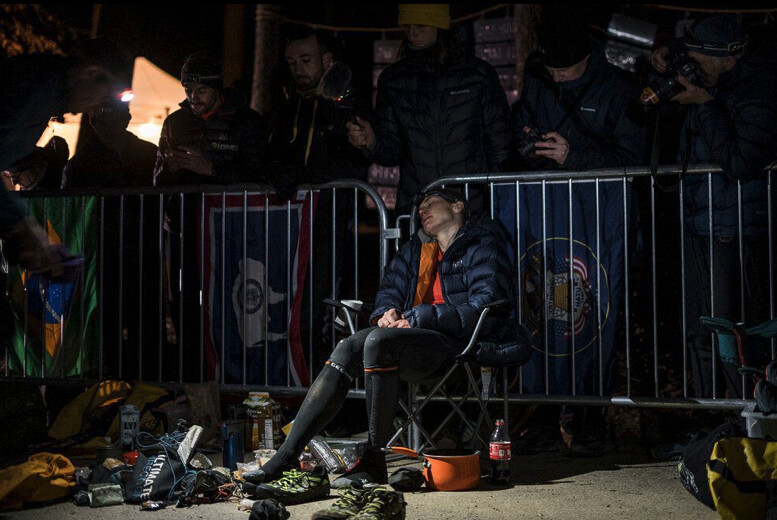

“When it was really difficult I made myself think about my daughter and imagined the different things she does—that kind of kept me distracted and entertained,” she told British Vogue after her Spine Race success.“Some of the time you don’t really think about anything. It’s mindful, you’re just putting one foot in front of the other.”
The Barkley Marathons is five loops of a 20+ mile course in Frozen Head State Park, near Wartburg, Tenn. (distances vary; the race is thought to be well over 100 miles) featuring thousands of metres of elevation gain, with a time limit of 60 hours. It was first run in 1986, and was inspired by the prison escape of James Earl Ray, who was serving time at Brushy Mountain penitentiary for the murder of Martin Luther King, Jr. (He was captured soon after.) Gary Cantrell (a.k.a. Lazarus Lake, or “Laz” to his friends) dreamed up a 100-miler in the vicinity of the prison, which is now abandoned and is a feature of the course. GPS watches are not allowed; each runner is issued a cheap watch set to “Barkley time,” i.e., the 60-hour limit. Runners must collect pages corresponding to their bib number from 13 books hidden on the course (they receive a new bib for each loop); missing pages mean disqualification. There is water available on the course, but no aid stations. Runners may only receive aid from their crew between loops, in camp, where they are on the clock.
Paris was always passionate about the outdoors, but only took up running in university. She began winning local and national fell-running and ultrarunning events, including the Scottish Hill Running Championships, British Fell Running Championships and then the 2016 Extreme Skyrunner World Series. Paris ran a hill race 10 days before giving birth to her daughter.
While Paris says it has been challenging to juggle training as a parent to a young child, she adds that it’s important to maintain a balanced life.”It doesn’t make you a worse parent if you have something else that is just yours; in fact I think that it’s probably inspirational to your child, she told British Vogue.”I hope my daughter will be inspired when she grows up to believe that she can do anything.”
Barkley creator Laz Lake asked Paris to run the race after her victory at the Spine Race—he thought Paris might be the only woman who could possibly finish. In 2o22, she completed three loops (which is dubbed a “fun run”); in 2023, she was eliminated after four loops, falling short of the 48-hour cutoff time to begin the fifth loop. Paris was only the second woman ever to attempt a fourth loop; the first was Sue Johnston of Vermont, in 2001.
Fellow British runner and two-time Barkley Marathons competitor, Damian Hall, made it to loop five for the second year in a row, but was unable to complete the race. He commented on Paris’s remarkable finish to his sponsor, Inov8: “It was still an amazing experience, and incredible to see Jasmin finish and make history. That wiped away most of my personal disappointment. It was the greatest sporting achievement I’ve seen in the flesh.”
“The final minutes were so intense, after all that effort it came down to a sprint uphill, with every fiber of my body screaming at me to stop,” Paris told The New York Times post-race.“I didn’t even know if I’d made it when I touched the gate. I just gave it everything to get there and then collapsed, gasping for air.”
Renowned photographer Howie Stern is a regular at the Barkley Marathons, and captured Jasmin throughout the race.”Thank you Jasmin for putting your heart and soul into the dark world that takes place in a little park in Tennessee, which has captivated and inspired women and men the world over,” he said on Instagram.
(03/30/2024) ⚡AMPby Running Magazine
DJ Diplo creates run club with a cool twist
It seems like everyone and their cousin is part of a different run club in 2024, and it’s hard for one club to distinguish itself from another besides pace, meeting time and location. Grammy award-winning DJ and producer Diplo (Thomas Pentz) found a way to make his new run club a little different, combining a few of his favourite interests—running, music and travel.
The club, which is titled, Diplo’s Run Club, involves a large 5K group run, followed by a music festival that will apparently “ignite your senses.” Instead of just going to a bar or club with your running friends after a run, Diplo says he’s bringing the concert to the run in various U.S. cities. The DJ claims his run club will be more than just an event; it’ll be a celebration, with DJs, live bands, and of course, drinks.

In the past year, the 45-year-old has fallen in love with distance running, completing the Miami Half Marathon and L.A. Marathon, where he celebrated beating Oprah’s personal best, finishing in three hours and 55 minutes. It later came out that he ran the race while on the illicit psychedelic drug, LSD. Diplo is now devoting more time and attention to physical activity with his new run club venture, which will debut this September.
“A 5K may be intimidating to some, but Diplo’s Run Club is for everyone and meant to be a good time for all—both seasoned runners or anyone just starting their running journey,” Diplo posted on Instagram.
His run club will host its inaugural event in San Francisco on Sept. 8, followed by a second event in Seattle on Sept. 14. At both events, a 5K run will be followed by “finish line sets” by Diplo and his friends. Unlike most run clubs, Diplo’s event will not be free. Tickets for Diplo’s Run Club are priced at $69 (around CAD $93), which is a good deal when most of his DJ sets run for double, if not triple the price.
There are no Canadian cities on the schedule yet, but we are sure other influencers or artists will follow suit in monetizing the touring run club idea.
(03/30/2024) ⚡AMPby Running Magazine
How Do Olympic Athletes Sleep?
Not as soundly as you’d expect, actually
We all know that, in theory, we’re supposed to sleep a lot. After all, it boosts performance, protects against injury, accelerates recovery, improves free-throw shooting, and all sorts of other wonderful things. But sometimes there’s a gap between theory and practice. Are champion athletes also champion sleepers? Or is good sleep in the “nice to have” rather than “need to have” category for ascending the heights of athletic prowess?

A new study in the International Journal of Sports Physiology and Performance, from sports scientists at the U.S. Olympic and Paralympic Committee led by Travis Anderson, dives into the real-world sleep habits of more than 1,600 Olympic and Paralympic athletes. In the lead-up to the Tokyo Games in 2021, they filled out a questionnaire called the Pittsburgh Sleep Quality Index. The results offer insights into the typical sleep patterns for male versus female athletes, summer versus winter Olympians, and team versus individual sports. They also suggest that a surprising number of athletes aren’t sleeping as much or as well as they’d like.
In this age of ubiquitous self-tracking, you may wonder why they’re using a questionnaire rather than some form of objective sleep tracking. The simple answer is logistics: proper sleep studies are complicated and invasive. Even wearable tech devices would have been difficult to administer to 1,600 athletes scattered around the country, and their accuracy is questionable anyway. Moreover, imposing sleep tracking on athletes is a delicate proposition, and there’s a risk it can create anxiety and interfere with the sleep it’s supposed to measure. A few years ago, Charles Samuels, the sleep doctor who works with Canada’s Olympic teams, told me that the best way to assess how someone is sleeping is to ask them, “How are you sleeping?”
The biggest result is that roughly 40 percent of the athletes were rated as having poor sleep based on their PSQI scores. The scores take into account factors like how long you typically sleep, how long it takes you to drift off, how often your sleep is disturbed, whether you take sleep medications, and so on. The results are in line with a recent study of Dutch Olympic athletes, which found that 41 percent were poor sleepers. Similarly, an Australian study in 2021 pegged 52 percent of Olympians as poor sleepers.
One of the goals of the study was to provide normative values—that is, to offer some context on what’s normal for hard-training athletes, as opposed to for the general population on whom the PSQI was first tested. The PSQI is scored out of 21, with higher scores indicating a greater number or greater severity of sleep problems. You’re classified as a poor sleeper if you score 5 or more. The average among U.S. Olympics was 4.3; a quarter scored above 6; 10 percent scored above 8; and 5 percent scored above 10. The highest single value was 16. (The lowest was zero, and boy do I envy those people!)
There are plenty of reasons athletes might have trouble sleeping. If you have a 6:00 A.M. training session, you’re going to have trouble getting all the sleep you might like. If you’re traveling frequently across time zones to get to races or training camps, that will cost you. If your legs are aching from hard training, or your mind is racing before or after a competition, you won’t sleep well. The survey results don’t tell us exactly what’s happening, but they suggest that someone who scores 5 or 6 on the PSQI, while officially classified as a “poor sleeper,” is pretty typical for a serious athlete.
The main difference between this study and previous ones is that it has way more athletes, which makes it possible to slice and dice the data into subcategories. Most notably, despite typically going to bed a few minutes earlier, women had worse sleep quality: an average of 4.7 on the PSQI compared to 3.9 for men. That’s a pattern that has shown up in some but not all previous studies. Among the specific differences were that women were less likely to report falling asleep right away after going to bed, and more likely to report using sleep medications. One theory is that the variation in sex hormones across the menstrual cycle might interfere with sleep, but this study doesn’t tell us anything about the mechanisms, and the authors point out that it’s not really clear whether the small differences observed have any practical relevance.
The only difference between summer and winter athletes was that the winter athletes went to bed later and got up later, perhaps because there’s less light in the morning during the winter. There were no differences between Olympic and Paralympic athletes, even though factors like disrupted circadian rhythms in visually impaired athletes might lead us to expect more problems for the Paralympians. Team-sport athletes got up earlier and had poorer sleep than individual-sport athletes, but that pattern clashes with some previous studies. Overall, I’d guess that all these sub-patterns are confounded by the huge variety of sports in the sample. Runners are probably like runners, regardless of sex or Paralympic classification; they’re not like platform divers.
One way of interpreting all this data is that sleep is a great untapped frontier. If 40 percent of athletes are poor sleepers, just imagine your edge if you can master it. The other interpretation is that sleep can’t be that important, if all these Olympians can’t get it right. I’ll take a middle position, as is my wont. I think sleep is important for performance (not to mention for not feeling like crap all day). But I don’t think it’s one of those quantities that rewards relentless self-optimization. “If you get what you need,” Charles Samuels told me, “that’s as good as it gets.” Take your sleep habits seriously, but remember that if you still have some problems, you’re in very good—Olympic-level, to be precise—company.
(03/30/2024) ⚡AMPby Outside Online
Running 300,000 Vertical Feet In a Year: Noble Goal or a Fool’s Errand?
Arbitrary goals are nonsensical. They also can be the source of great joy.In the pursuit of any goal, we all face a moment of questioning ourselves, sometimes out loud.The first week of last December, I had that moment, a question as I power-hiked up an icy trail, listening to my own labored breath:The answer, of course, was: No, it was not necessary. I had a cold, or enough remnants of a cold that I should have been at home resting instead of semi-vigorously exercising outside.
But I had a goal. Or, rather, I had committed to a goal, with a deadline: 300,000 feet of uphill human-powered movement, in the year 2023. Before I started hiking uphill that day, I had logged 289,476 feet of climbing via running, hiking, ski touring, and cycling. I had 10,524 feet left to climb, and 24 more days to do it. And I wanted to get done early so I could stop worrying about it. So I kept tromping uphill.

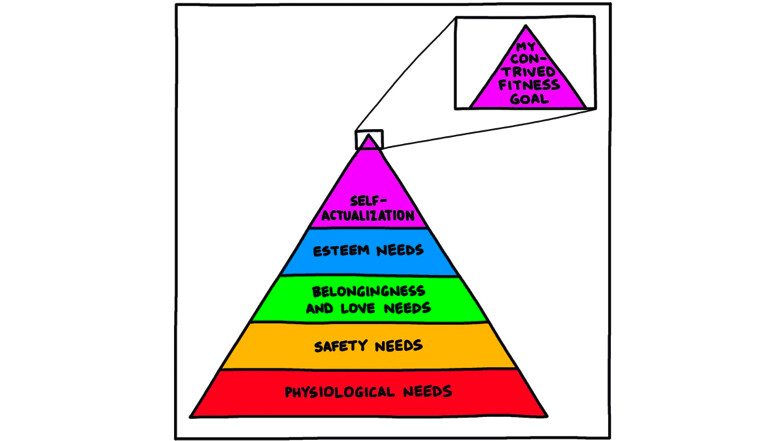
Even though I’d have a hard time convincing anyone it was “necessary,” in the sense of Maslow’s Hierarchy of Needs.Every year, human beings such as myself and yourself take part in an ancient ritual going back at least dozens of years: We decide how we are going to become a different person than we were the year before.
Sometimes we become completely different people, finally going to therapy, or deleting all of our social media accounts, or deciding to adopt the extensive and possibly unsustainable morning routine of a person who is an influencer on LinkedIn. Sometimes we just become a slightly different person, by committing to being on time, drinking more water, or meditating for one minute every day.
This probably sounds familiar. You may know it as a “new year’s resolution,” which is a common manifestation of this sort of idea, and also helpful in selling gym memberships. New year’s resolutions work for some people, but I have never had much success with them. Usually I think more along the lines of “what can I do that would make this year interesting/different from previous years?” Which I think is a good place to start, as opposed to “What’s wrong with me that I can attempt to fix or improve this year?” (If you’re asking yourself that same question, let me just say that you’re probably doing great, and at least a few people probably love you just the way you are. But yeah, we could all drink more water and eat more vegetables.)A few years back, a friend of mine mentioned he was going to try to log half a million vertical feet biking and hiking, and I don’t remember if he ended up getting it done, but I think he was probably inspired by a guy named Greg Hill who climbed and skied two million vertical feet in a year in 2010, and Greg Hill was probably inspired by himself, Greg Hill, skiing one million vertical feet in a year in 2005. I’m no Greg Hill. But what about 200,000 feet of ascent in a year? Certainly more doable by a middle-aged dad with a day job? That’s a little under 4,000 feet per week.
So I decided on that. I did a few backcountry ski laps at our local hill, just under 2,000 feet per lap, and hiked/ran up steep trails a couple times a week, trying to log a few hundred feet here or there. If Jay was awake and we had time between naps, I’d put him in the baby carrier backpack and chug up a trail for a few minutes or an hour, the dad version of a weighted training vest. I signed up for a steep 50K trail race, the Tiger Claw, which would get me almost 9,000 feet of climbing in one day, a big chunk.
Then in mid-May, my young friend Torrey, who has not been to my house recently to see my daily life trying to be a present and helpful dad, husband, self-employed artist and writer, said, “200,000 feet? I think you could do 300,000 easy.”
I thanked him for the encouragement by replying, “Fuck you,” and then we argued for a few minutes about who would buy dinner.
And then of course I started doing the math, which really amounted to a big question, How do I want to live my life this year, which is really a series of smaller questions:We’re lucky, as human beings, to have the time and resources to come up with ideas we refer to as “dreams,” and then spend time and resources pursuing those.
Some people put a lot of time and resources into one dream, like thru-hiking the Pacific Crest Trail, or climbing a big mountain halfway across the world, or completing an Ironman triathlon.Since I am a coward, I often tend to shy away from big goals with a high chance of failure, and instead choose to pursue goals with longer timelines, in order to have some flexibility. A bad week of weather can derail a big mountain summit attempt, and an injury can derail a plan to qualify for the Boston Marathon (I guess so could gastrointestinal distress on race day), but an annual goal of a bunch of vertical feet can withstand some bad weather or minor injuries during the year. Or, in my case, catching every communicable disease Jay brought home from daycare in his first six months of attendance, which included something like six colds, and norovirus or something similarly explosive and miserable.
Even with a week off here and there, I kept chugging along. I started a Strava club called 100 Grand, because I thought other people might think it was fun to try to log 100,000 feet of climbing, or 200,000 feet, or 500,000 feet, or whatever, depending on where they lived and how much time they had to devote to it. I know not everyone lives in a mountainous area, or even a hilly place, but I also knew about this group of people in Iowa and Illinois who race to see who can log 25,000 feet of vert the fastest (and in the smallest amount of horizontal distance) every December. I mean, look at this spreadsheet:Almost 2,000 people signed up for the 100 Grand Strava club, despite it launching in the middle of the year, and I’m not sure how much it motivated people, but I’m going to do it again in 2024. As soon as I finish mailing out stickers to everyone who clocked 100K or more in 2023.
As I rolled over 200,000 feet in September, and then 250,000 feet (in early October), I started to reflect on how the 300,000-foot number had changed my year of running. I have never been one to pay attention to my per-mile pace, but it went completely out the window this year, since a typical run for me looked like this:Mt. Sentinel is essentially a straight line two miles from my house and roughly 2000 vertical feet higher than my front door*, so I defaulted to it often this year. I stood on the summit 47 times, often enough that it started to feel quite ridiculous, but also a sort of home. Which is probably how my dad feels about certain holes on his home golf course, or how my brother feels about his favorite fishing spots.Every time I got home from a run, I’d check my yearly total on Strava as it ticked upward—except on the rare days I did a flat run, when I was short on time or had to run Jay to or from day care in the jogging stroller.
Eventually, I had a little less than 2,000 feet to go. Unless something crazy happened, I’d just need to get to the summit of Mt. Sentinel one more time and I could stop obsessing about it. My friend Forest had offered to go with me, but also said he understood if I wanted to go up alone. I decided to keep this one to myself, microspikes on my shoes for the icy sections, trekking poles as insurance to keep myself upright.
The last climb up the steep trail on the south ridge seemed like it was taking forever, and I watched several paragliders take off from near the top, a surprise sunny December day. I jogged through the snowy forest between the south and north summits, and then started the steep hike up the final 100 feet to the top. A figure in an orange jacket was starting down from the summit, headed my way.
The person stopped on the trail when they saw me, and without being able to see quite that far, I knew it was Forest. He started clapping, and then went back to the summit with me. He asked if I wanted to have the top to myself, to process it a little bit, and I said Nah, it’s just the last few feet of my dumb goal for the year. Which was true.
The closer I got to finishing, the more ridiculous it felt, and as much as I’d like to have had some epiphany about life, I know sometimes you just need a new motivation to get out the door and experience something, even if you end up on the same mountaintop *checks notes* 47 times. But as ridiculous as it was, I still followed through with it, which has some sort of meaning, maybe.
You don’t need to go far these days to find inspirational quotes about pursuing your goals, and I think everyone is looking for something different. The older I get, the more I think about a line from the late, great, philosopher and restaurateur Kenny Shopsin, in the 2004 documentary I Like Killing Flies:
(03/30/2024) ⚡AMPby Outside Online
What you should know before running the Crescent City Classic
New Orleans is just one day away from the start of the 46th Crescent City Classic, and the annual running event is expecting 15,000 participants on this year's start line.
The Classic attracts people of all ages – and fitness levels, with organizers saying more than 60 percent of participants choose to walk rather than run.
World-renowned sports performance specialists – and WWL health and fitness experts – Mackie Shilstone and son, Spencer, say "getting the body right" before pounding the pavement is paramount for success at the Crescent City Classic – or any run for that matter.
Here are a few pre-race tips to help runners go the extra mile:
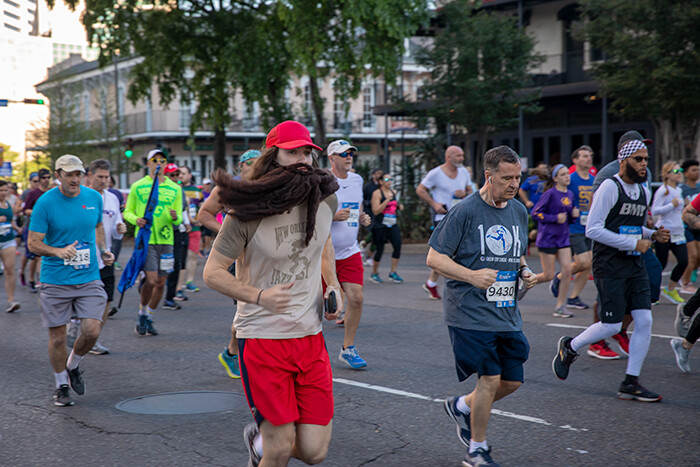
Meet a runner's best friend – shoes
According to Mackie, the single most important thing a runner can do is purchase the right running shoes. Whether you supinate, pronate or stand somewhere in the middle (neutral), the selection of proper footwear can make all the difference in running success and safety.
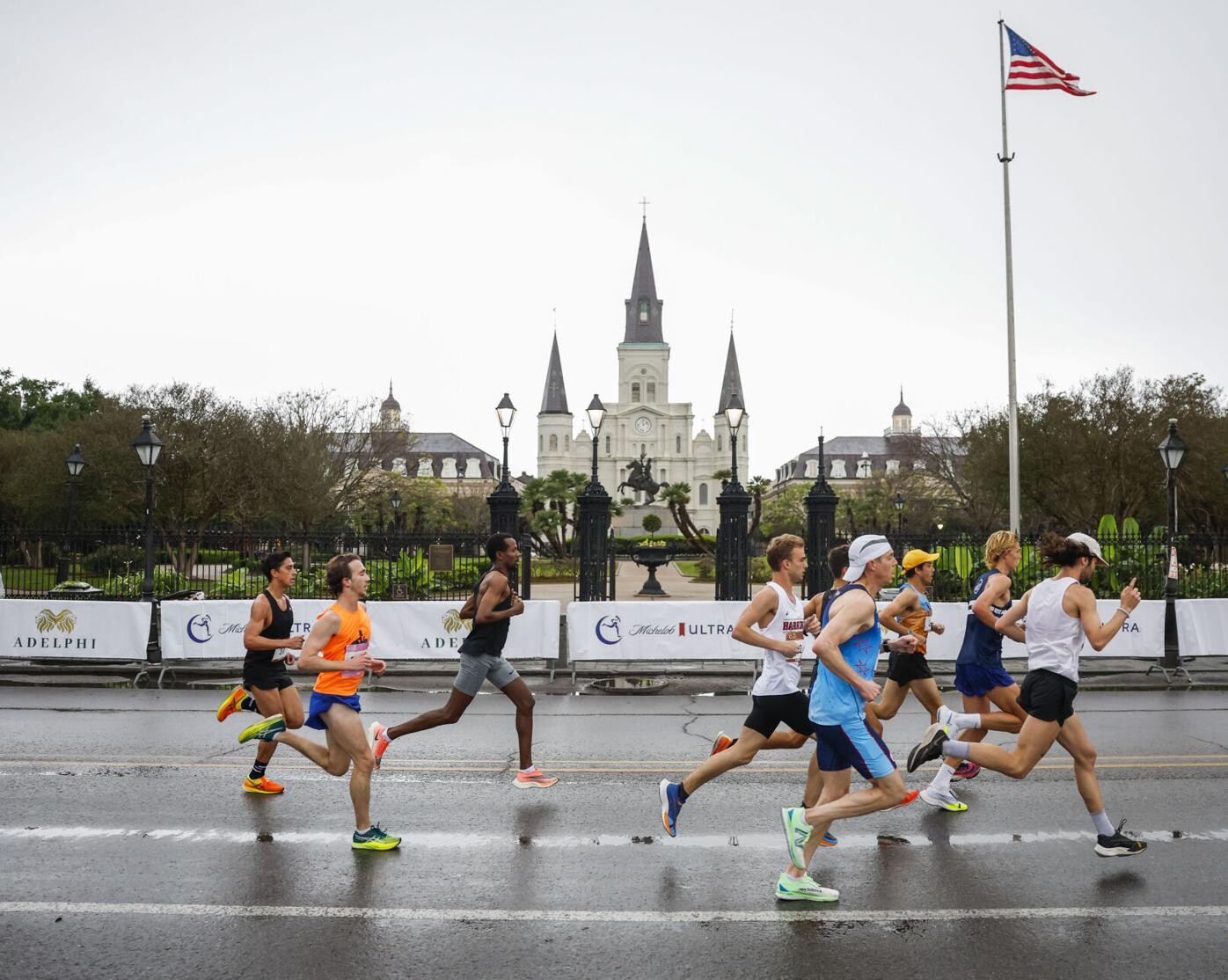
Mackie says, 70 percent of runners make first impact to the ground with their heel. So heavier runners will require a heavier heel counter because when the foot strikes the ground, the body weight is magnified by 5-7 times – five times in a moderately fit person, and seven times in an out-of-shape person.
"If you don't have the right running shoes where you have a thumbnail difference between your big toe and the end of the shoe, if you don't have the right lateral mechanics," explains Mackie. "Many people will go out and try and do this and have not prepared. So preparation in getting the right running shoe, that's for you."
Podiatrist-prescribed custom orthotics can also provide a substantial – and now affordable – solution.
And he says never, ever wait until race day to break in a new pair of kicks.
Roberts, who also leads a run club for the Louisiana Running + Walking Company, once again supports Mackie's suggestion on breaking in new shoes.
"I always recommend at least getting a few runs in even the week prior if it's a new pair of shoes," said Roberts. "But don't pull them right out of the box on the day of, especially if it's a completely different change [of shoe]. So, if you're going into it with a new speed shoe thinking you want to try something faster...don't recommend it.
Fueling the body is high-performance
Sodium is important because exercise lasting 60 minutes or longer is going to require the replacement of electrolytes. Anything longer than 90 minutes will require the intake of carbohydrates.
"Fueling the body is high-performance," said Mackie. "Mis-fueling the body is tantamount to disaster."
Mackie says most sports drinks do not provide enough sodium, which is needed to effectively use the glycogen in your liver and muscles and circulatory system.
"I'm not telling anyone on a hypertensive-type diet (less than 1,500mg per day) to go out there and increase your sodium," said Mackie. "[But] the requirement for sodium sits up there around 2200 milligrams."
Mackie also warns against the intake of fiber before a long run – or race – like the Crescent City Classic.
"You don't want any fiber in the diet," explained Mackie. "You don't want to have to go in and unfortunately have to use the toilet because your nature calls."
Truth about carb-loading for the Crescent City Classic
Mackie claims carb-loading for events such as the Crescent City Classic can be recipe for disaster. He explained that a moderately fit runner – someone running between 15-30 miles per week – can expect to finish a 10k in approximately 50 to 70 minutes. This means heavy carb-loading the night before can be excessive and counterproductive.
"Carb-loading simply means everybody's going out and eating a lot of pasta," explained Mackie Shilstone. "But let's let's go back to basics. Let's go back to human physiology. We're talking about 10k (6.2 miles). We're talking about the liver and muscle and circulatory system of the average person out there is 2,000 calories. You burn 100 calories for every 10 minutes of exercise."
Former Tulane runner and local running coach Aislinn Roberts agrees with Mackie.
“Don't go crazy on those carbs," the Willow School alum told WWL. "I know everyone starts thinking about it, but if you do go crazy, you might upset that stomach. So, it's kind of important to make sure that you're not going overboard with all that.”
'Movement is medicine' | Benefits of stretching for health
Warming up before exercise is an essential part of your pre-workout or run routine.
As a specialist in corrective exercise and performance enhancement, Spencer Shilstone says static and dynamic stretches not only optimize athletic performance, but also provide greater overall health benefits for everyone – including those in a sedentary lifestyle.
"Stretching is very important to activate your body," explained Spencer. "Movement is medicine and whether you're just sitting at a desk for a really long time, you're getting your hip flexors very tight. So, you could be going for a race or you could be getting up from the desk. It's important to stretch out and mobilize your body.
(03/29/2024) ⚡AMPby Aaron S. Lee
Crescent City Classic 10k
The Crescent City Classic isannual 10-kilometer race held in New Orleans, Louisiana,United States. Mac DeVaughn founded the Classic and held the first race in 1979. The race was originally held in the Fall, but the race is now held the Saturday before Easter. The Classic is New Orleans’ (and the region’s) premier 10k road race, and one of the oldest...
more...Malaysia rejects offer to host 2026 Commonwealth Games
Malaysia has rejected an offer to hold the 2026 Commonwealth Games due to time constraints, costs and an insufficient offer of funding, its government said on Friday, in a major setback for a quadrennial multi-sport event that has struggled to find hosts.
Malaysia was asked to step in after the Australian state of Victoria withdrew, citing ballooning costs, with the Commonwealth Games Federation (CGF) offering 100 million pounds ($126 million) in supporting funds.
Malaysia ruling itself out raises the possibility that the Games may not take place for the first time since being cancelled in 1942 and 1946 due to the Second World War.
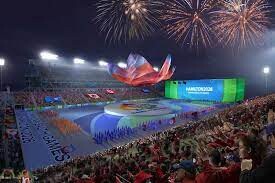
Malaysia could not commit to hosting the contest at such short notice with cost concerns and little time to assess the potential economic impact, officials said.
"If we had a longer time, we would definitely do it, but because there's such a short time, we definitely can't do it," government spokesperson and Communications Minister Fahmi Fadzil told a regular briefing.
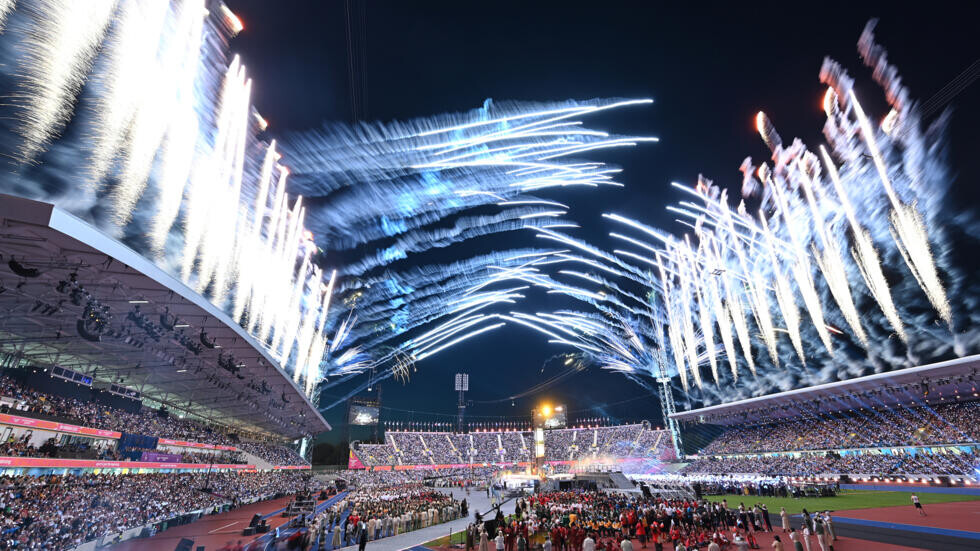
"When we assessed the viability of hosting the Games, the length of time needed and the cost was seen to be particularly prohibitive."
The CGF expressed disappointment at Malaysia's decision, but said its search for a host was continuing.
"The confidential process to determine a host is continuing with other interested Commonwealth Games Associations," a CGF spokesperson said, without elaborating.
RELEVANCE QUESTIONED
The Games are typically contested by about 70 countries and territories of the former British empire and medals tables have in recent editions been dominated by Australia, England, Canada, India, New Zealand and South Africa.
Victoria's withdrawal had already placed the future of the event in doubt and raised questions about whether a Games with colonial origins was still relevant in the modern era, and over its place in an already packed global sporting calendar.
TV rights, the main income driver for international sports events, are tiny for the Commonwealth Games compared to other large-scale competitions, meaning national and local governments can face budget deficits if hosting.
Malaysia's youth and sports ministry said the 100 million pounds funding it was offered would not be enough to cover the costs of hosting the Games.
"Additionally, the economic impact could not be identified in this short timeframe," the ministry said.
The Games has struggled to find a willing host in recent years and five of the last six editions have been held in Australia or Britain.
The English city of Birmingham, which had been due to host in 2026, stepped in to save the 2022 event after South Africa were stripped of hosting rights over a lack of progress in preparations.
Birmingham's move led to the CGF scrambling to find another host for 2026 and Victoria had been the only viable candidate after several other cities withdrew from the bidding process over cost issues.
The proposal had received a mixed response in Malaysia, which hosted the 1998 edition, over the lack of preparation time and costs.
The Malaysian Olympic Council had initially proposed holding a downsized Games, with limited spending on athletes' accommodation and smaller opening and closing ceremonies.
(03/29/2024) ⚡AMPby Reuters
The Commonwealth Games
The Commonwealth Games are coming to Victoria - bringing an action packed sports program to our regional cities and delivering a long-term legacy for our future. From 17 to 29 March 2026, Geelong, Bendigo, Ballarat, Gippsland and Shepparton will be on the world stage, attracting millions of viewers and creating thousands of jobs. The multi-city model will...
more...

